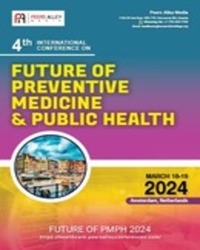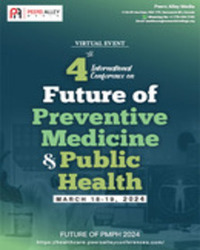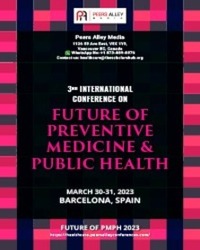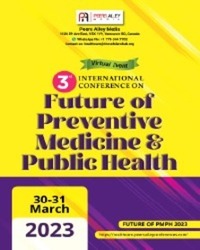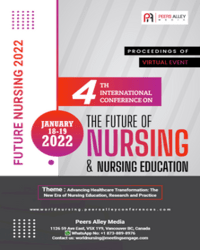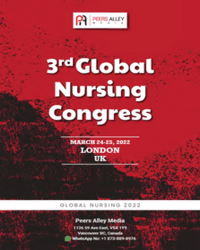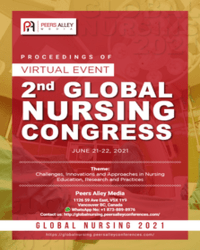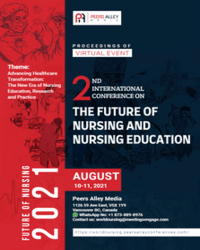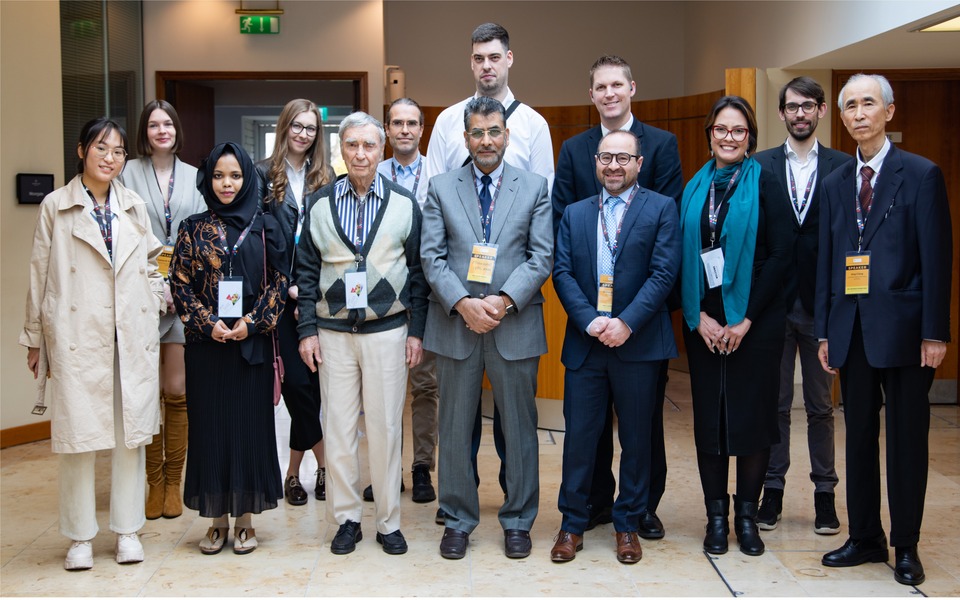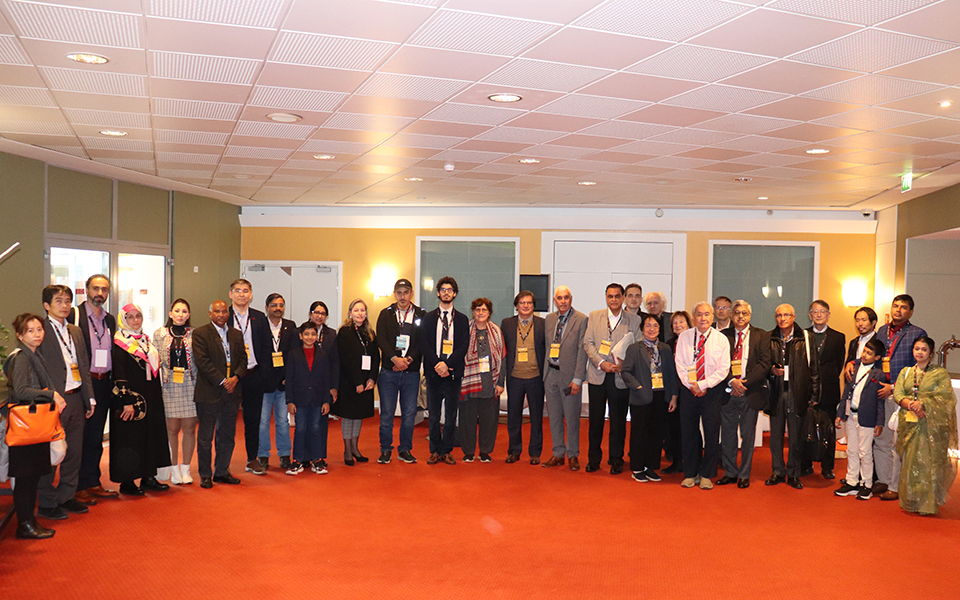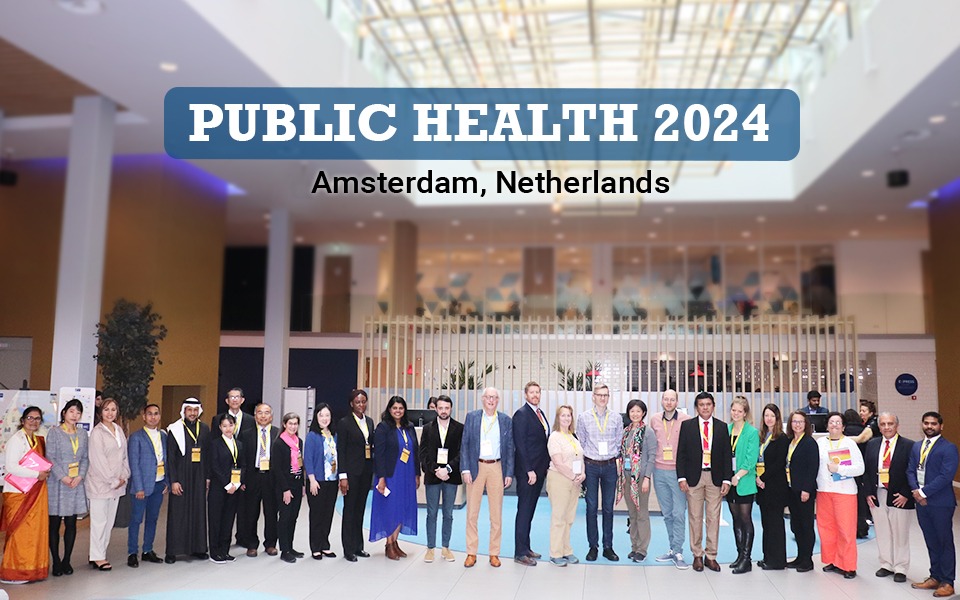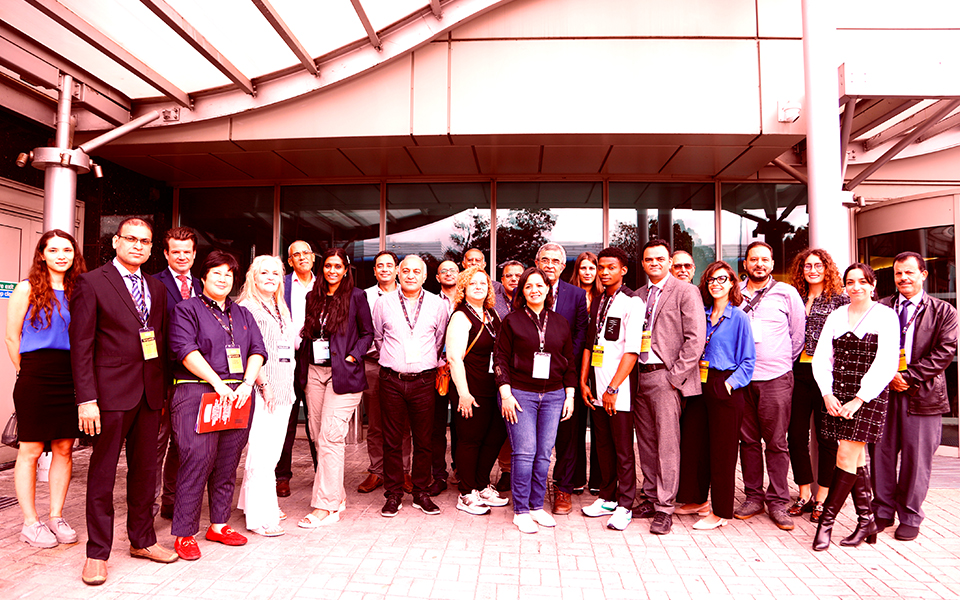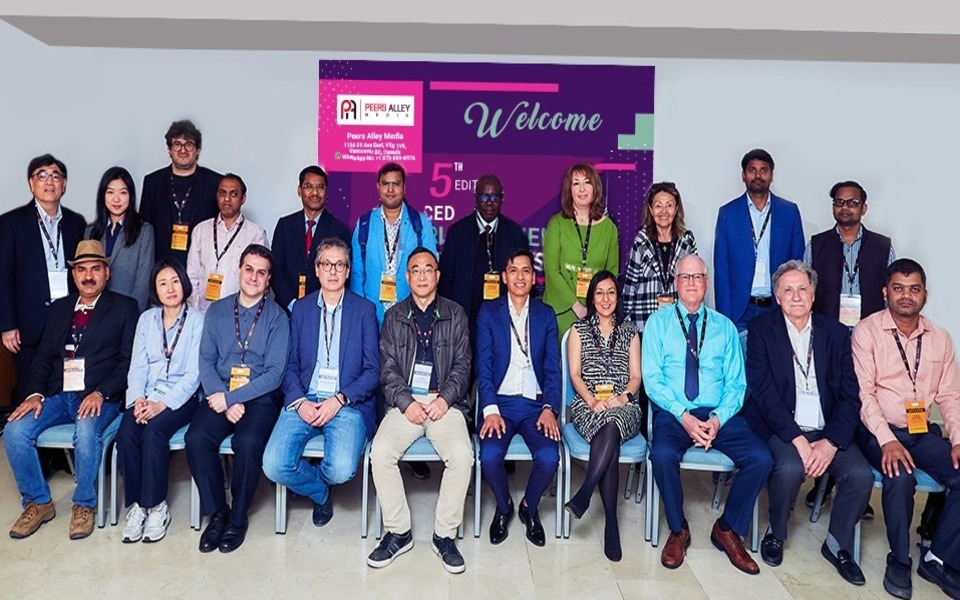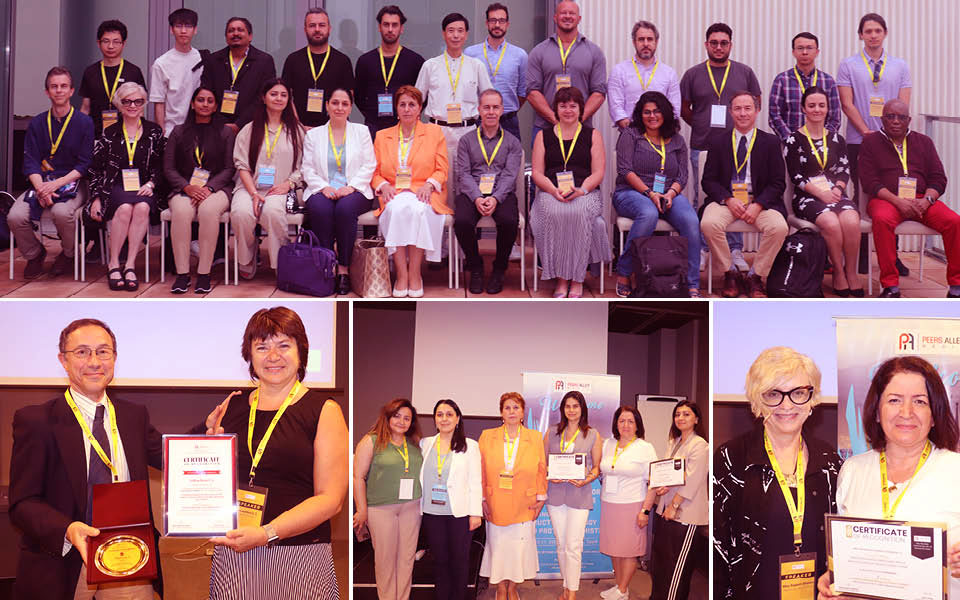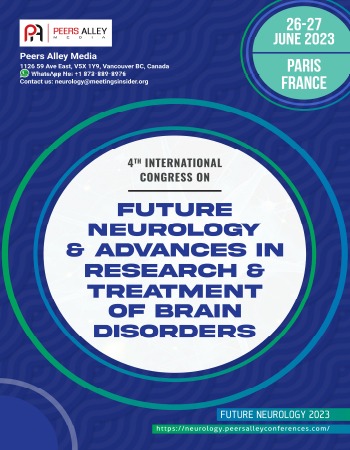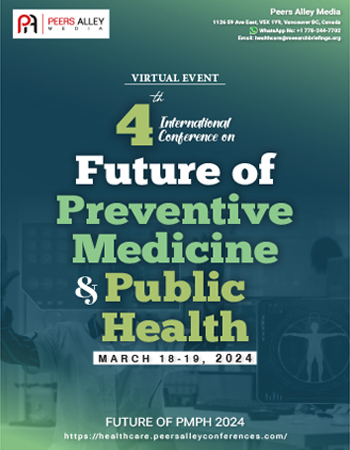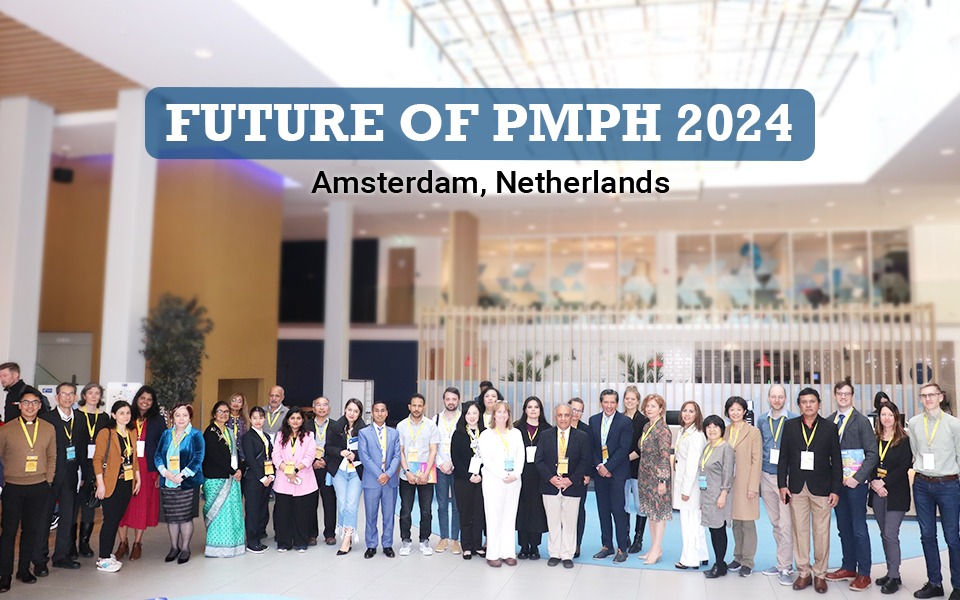
Future of PMPH 2024
Peers Alley Media,Canada

Primary goal of attending an international conference is to present a paper to the experts and influencers. It gives you a platform to exchange your interest-related thoughts, paving the way for possible future collaborations.

Use this platform to build connections with an elite group of wise men and women to enhance your intellect. Young entrepreneurs, this is a great platform to connect with your peers.

Knowledge is Power. Knowledge teaches skills. Skills define excellence. Use this platform to become cognizant of your interest area to achieve excellence in your domain.

Attending a conference give you opportunity to get your abstract or paper published in conference proceedings

Meet and greet a myriad of industry professionals and academia experts with common interest. Every meal will be an opportunity to meet and interact with fellow researchers, attendees and experts.

Expand your professional competency and learn useful tips and tricks of your industry in our skill-building workshops.

Explore insights on recent advancements, new equipment, new techniques, and unpublished data, learn from thought-leaders and get to network with a great line up of speakers.

Our exhibits floor offers the attendees with a dynamic display of the latest products with cutting-edge technology.

Investing in you is the best investment. Peers Alley conferences give the patrons with a feeling of the serendipity of real learning, skill development in strategic workshops, networking and start-up opportunities, thus, is value for money.

Attending the conference gives you much needed break from your regular duties. It also allows you to explore new cities, culture and meet new people. You will feel energized and rejuvenated to return to the university and continue with the job after attending the conference.
Conferences are vital forum for academic researchers and business leaders. "It involves multiple presentations, interactive breakout sessions, hands-on product demonstrations and unrivalled networking opportunities".
We have invited some of the world's most sought-after keynote speakers, experts, brand ambassadors, and industry leaders to share their thoughts and ideas with our conference guests.
Register Now
Nursing Proceedings 
Dear Esteemed Colleagues, Distinguished Guests, and Delegates
It is with great pleasure and honor that we welcome you to the 6th Asia-Pacific Advanced Nursing Practice, Nursing Education and Leadership Conclave held during June 19-20, 2025, in the vibrant city of Singapore.
Over the course of this summit, we will delve into critical topics that shape the future of nursing. From advancements in nursing practice to the latest trends in education and leadership, our comprehensive program is designed to inspire, inform, and invigorate. We are privileged to host a diverse array of keynote speakers, panel discussions, and interactive sessions that promise to enhance our understanding and elevate our practices.
In today's rapidly evolving healthcare landscape, staying updated on trends and technologies are essential. We will explore significant advancements such as telehealth, artificial intelligence in patient care, precision medicine, and the integration of digital health records. Embracing these innovations will enhance patient outcomes, streamline nursing practices, and influence the broader healthcare market, which is projected to reach USD 330.7 billion by 2030, growing at a CAGR of 9.3% from 2023 to 2030.
Our objectives for this congress are to:
• Explore cutting-edge research in nursing practice.
• Discuss innovative strategies in nursing education.
• Foster leadership skills for positive change.
• Facilitate global networking and collaboration.
• Provide insights on leveraging trends and technologies for better patient care.
The demand for nurses is outpacing supply, driven by an aging population, rising prevalence of chronic diseases, and increased access to healthcare services. This creates both challenges and opportunities in nursing education, practice, and leadership. Trends such as telehealth, advanced practice nursing, specialization, online learning, simulation training, and transformational leadership are shaping the future of nursing.
We encourage you to engage actively in the sessions, share your insights, and network with your peers. Together, we can drive meaningful change and lead the way toward a brighter future for nursing.
Thank you for being a part of this significant event. Let us embark on this journey of discovery and advancement together.
Sincerely yours,
Nursing Asia-Pacific 2025
Organizing Committee
Peers Alley Media, 1126 59 Ave East, V5X 1Y9, Vancouver BC, Canada

Kellogg Community College, USA

Kellogg Community College, USA

Royal Stoke University Hospital, UK

RoMed Kliniken, Germany


Nursing education is continually evolving to meet the dynamic demands of the healthcare industry. Curricula are increasingly focusing on holistic care, cultural competence, and interprofessional collaboration. Courses integrate evidence-based practice, critical thinking, and clinical judgment to prepare nurses for diverse and complex healthcare environments.
Simulation-based Learning: High-fidelity mannequins and virtual reality scenarios provide hands-on clinical training in a safe environment.
Online and Blended Learning: Digital technologies offer flexible learning options, making education accessible to more students and professionals.
Research and Evidence-based Practice: Programs focus on training nurses to critically appraise research and apply evidence-based practices to improve patient care.
Future Research Perspectives
Personalized Nursing Care: Research aims to develop personalized care plans based on genetic, environmental, and lifestyle factors.
Healthcare Disparities: Studies focus on addressing social determinants of health and promoting health equity.
Mental Health and Well-being: Research explores strategies to enhance mental health services and support nurses' well-being.
Aging Population: Focus on geriatric care, chronic disease management, and improving quality of life for older adults.
Cutting-edge Technologies and Innovations
Telehealth and Telemedicine: Remote patient monitoring and virtual consultations improve access to care.
Artificial Intelligence (AI) and Machine Learning: These technologies aid in predicting patient outcomes and supporting clinical decisions.
Wearable Health Technology: Devices that monitor health indicators provide real-time data for personalized care.
Robotics: Assist with tasks like medication delivery and patient lifting, reducing strain on nurses.
Genomics and Precision Medicine: Nurses interpret genetic information and implement personalized treatment plans.
Mobile Health Applications: Apps empower patients to manage their health and adhere to treatment plans.
Tags
Nursing Care Conferences
World Nursing Conferences
Nursing Conferences USA
Canada Nursing Conferences
Japan Nursing Conferences 2024
Nursing Education Conferences
Nursing Conferences 2024
Germany Nursing Conferences
Advanced Nursing Practice Conferences
Asian Nursing Conferences 2025
Nursing Education Conferences 2024 Asia
Nursing Conferences 2025 Asia
London Nursing Conferences
Global Nursing Conferences
Nursing Conferences 2025 Australia
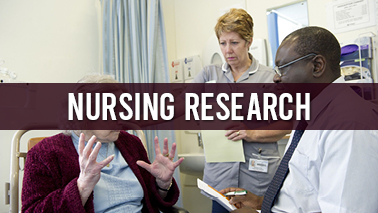
Nursing research is a rigorous scientific process that provides evidence to support nursing practices. It involves systematic inquiry to develop knowledge about issues of importance to the nursing profession, including nursing practice, education, administration, and informatics. The goals of nursing research include improving patient care, enhancing nursing practices, and contributing to the body of knowledge within the field.
Future Research Perspectives
Personalized Medicine: Research will increasingly focus on individualized patient care based on genetic, environmental, and lifestyle factors.
Global Health: As healthcare becomes more interconnected, research will emphasize global health issues, including pandemic preparedness and response, and health equity.
Mental Health: Growing awareness of mental health issues will lead to more research on effective interventions, especially in under-resourced areas.
Aging Population: Research will address the needs of an aging population, including chronic disease management, palliative care, and aging-in-place strategies.
Interprofessional Collaboration: Studies will explore the benefits and best practices for interdisciplinary teamwork in healthcare settings.
Cutting-Edge Technologies
Telehealth: Remote monitoring and consultations.
Wearable Devices: Continuous health monitoring.
AI and ML: Predicting outcomes and personalizing treatments.
Robotics: Assisting in surgery and patient care.
3D Printing: Creating prosthetics and medical devices.
VR and AR: Immersive training and simulations.
Genomics: Understanding diseases at a molecular level.
Innovations in Nursing Practice
Patient-Centered Care Models: Prioritizing patient needs and preferences.
Integrated Care Pathways: Streamlining patient journeys across services.
Evidence-Based Practice: Using the latest research to inform practices.
Health Information Technology: Implementing EHRs and clinical decision support systems.
Sustainability and Environmental Health: Promoting sustainable practices in healthcare.
Tags
World Nursing Conferences
Advanced Nursing Practice Conferences
Japan Nursing Conferences
Canada Nursing Conferences 2025
Nursing Care Conferences
Spain Nursing Conferences 2024
Nursing Conferences 2025 Asia
Germany Nursing Conferences
Nursing Conferences Europe
Japan Nursing Conferences 2024
Nursing Education Conferences
Nursing Conferences 2024 UK
Advanced Nursing Practice Conferences 2025
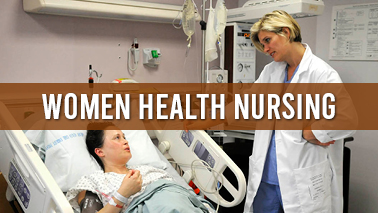
Women’s health nursing focuses on the comprehensive care of women throughout their lifespan, addressing unique health needs and issues related to reproductive health, pregnancy, childbirth, and menopause, as well as general health and wellness. This specialty encompasses preventive care, health education, and treatment of acute and chronic conditions specific to women.
Future Research Perspectives
Reproductive Technologies: Innovations in fertility treatments and contraceptive methods.
Maternal Health: Improving outcomes for mothers and infants, especially in underserved populations.
Chronic Disease Management: Addressing conditions like heart disease, diabetes, and cancer, which can present differently in women.
Mental Health: Focus on mental health issues such as postpartum depression, anxiety, and the impact of hormonal changes on mental well-being.
Health Disparities: Research to reduce health disparities and improve access to quality care for all women.
Cutting-Edge Technologies and Innovations
Telehealth and Telemedicine: Enhancing access to healthcare services, especially in rural or underserved areas, for prenatal care and consultations.
Digital Health Platforms: Utilizing apps and wearable devices for monitoring maternal health, tracking fertility, and managing chronic conditions.
Genomic Medicine: Advancing genetic testing and personalized treatments for conditions like breast cancer and hereditary diseases.
Robotic Surgery: Enhancing precision and recovery times for gynecological surgeries, such as hysterectomies and fibroid removal.
Artificial Intelligence (AI) and Machine Learning: Analyzing large datasets to predict pregnancy complications, optimize treatment plans, and improve maternal and fetal outcomes.
3D Printing: Creating customized prosthetics, implants, and models for surgical planning in gynecology and obstetrics.
Virtual Reality (VR) and Augmented Reality (AR): Enhancing education and simulation for healthcare providers in maternal and neonatal care.
Tags
Nursing Care Conferences
Nursing Conferences 2024 UK
Canada Nursing Conferences 2025
Advanced Nursing Practice Conferences 2025
Nursing Education Conferences 2024 Asia
Nursing Conferences 2025 Brazil
Spain Nursing Conferences 2024
Nursing Education Conferences
Nursing Conferences 2024
Nursing Conferences 2025 USA
Japan Nursing Conferences
Germany Nursing Conferences
Nursing Conferences USA
Canada Nursing Conferences
London Nursing Conferences

Nursing leadership and management involve overseeing nursing teams, ensuring quality patient care, and guiding strategic initiatives within healthcare settings. It combines leadership skills with healthcare management principles to optimize organizational efficiency and patient outcomes.
Key Aspects of Nursing Leadership and Management
Leadership Styles: Effective leaders inspire, motivate, and mentor nursing staff, fostering a positive work environment and promoting professional growth.
Strategic Planning: Developing and implementing long-term goals and initiatives to align with organizational missions and enhance patient care delivery.
Quality Improvement: Monitoring and improving clinical outcomes, patient safety, and service excellence through evidence-based practices and continuous evaluation.
Resource Management: Allocating resources effectively, including staffing, budgeting, and equipment, to support optimal patient care delivery.
Future Research Perspectives in Nursing Leadership and Management
Transformational Leadership: Studying the impact of transformational leadership styles on nursing staff satisfaction, patient outcomes, and organizational performance.
Healthcare Delivery Models: Investigating innovative models of care delivery, such as team-based care and patient-centered medical homes, and their impact on nursing leadership roles.
Leadership Development: Researching effective strategies for developing leadership competencies among nurses, including mentorship programs and leadership training initiatives.
Ethical Leadership: Exploring ethical dilemmas in nursing leadership and management, and strategies for promoting ethical decision-making and accountability.
Healthcare Policy and Advocacy: Examining the role of nursing leaders in shaping healthcare policies, advocating for patient rights, and promoting healthcare equity and access.
Cutting-Edge Technologies and Innovations in Nursing Leadership and Management
Health Information Technology (HIT): Implementing electronic health records (EHRs), clinical decision support systems (CDSS), and data analytics to inform strategic decisions and improve patient outcomes.
Telehealth and Telemedicine: Facilitating remote consultations, monitoring, and virtual care delivery, expanding access to healthcare services and improving patient engagement.
Artificial Intelligence (AI) and Machine Learning: Utilizing AI algorithms to predict patient outcomes, optimize resource allocation, and streamline administrative tasks.
Blockchain Technology: Enhancing data security, interoperability of health records, and supply chain management, ensuring transparency and trust in healthcare transactions.
Robotic Process Automation (RPA): Automating routine administrative tasks, such as scheduling and billing, to reduce workload and improve operational efficiency.
Virtual Reality (VR) and Augmented Reality (AR): Enhancing training programs for nursing leaders and managers, simulating complex healthcare scenarios and improving decision-making skills.
Innovations in Nursing Leadership and Management Practice
Transformational Leadership: Empowering nurses to innovate and lead change initiatives that enhance patient care quality and safety.
Shared Governance: Engaging frontline nurses in decision-making processes, promoting accountability, and fostering a culture of collaboration.
Performance Improvement: Implementing continuous quality improvement initiatives, such as Lean and Six Sigma methodologies, to streamline processes and reduce inefficiencies.
Leadership Coaching and Mentoring: Providing mentorship programs and coaching sessions to develop leadership competencies and support career advancement.
Healthcare Ethics Committees: Establishing ethics committees to address ethical dilemmas, promote ethical decision-making, and ensure patient and staff well-being.
Tags
Global Nursing Conferences
Canada Nursing Conferences 2025
Nursing Conferences USA
Nursing Education Conferences 2024 Asia
World Nursing Conferences
Nursing Conferences 2024
Spain Nursing Conferences 2024
Nursing Conferences 2025 Asia
Nursing Care Conferences
Advanced Nursing Practice Conferences
Nursing Conferences Europe
Nursing Conferences 2025 Brazil
Advanced Nursing Practice Conferences 2025
Japan Nursing Conferences 2024

Public health nursing focuses on promoting and protecting the health of populations. It involves assessing community health needs, developing and implementing health policies, and ensuring access to care. Public health nurses work in diverse settings, including community health centers, schools, and government agencies, aiming to prevent disease and promote health through education, advocacy, and outreach.
Future Research Perspectives in Public Health Nursing
Health Disparities: Investigating the root causes of health disparities and developing interventions to promote health equity.
Chronic Disease Management: Researching effective community-based interventions for preventing and managing chronic diseases like diabetes, hypertension, and obesity.
Mental Health: Examining the impact of social determinants on mental health and developing community-based mental health support programs.
Global Health: Studying the effects of globalization on health, including the spread of infectious diseases and strategies for global health improvement.
Climate Change and Health: Investigating the impact of climate change on public health and developing mitigation and adaptation strategies.
Cutting-Edge Technologies and Innovations in Public Health Nursing
Telehealth: Providing remote health services, education, and consultation, especially in underserved areas.
Mobile Health (mHealth): Using mobile devices and apps for health monitoring, patient education, and data collection.
Big Data and Analytics: Leveraging big data to track disease outbreaks, analyze health trends, and inform public health interventions.
Artificial Intelligence (AI): Using AI for predictive modeling, risk assessment, and personalized health recommendations.
Geographic Information Systems (GIS): Mapping health data to identify patterns, allocate resources, and plan interventions.
Wearable Technology: Monitoring health metrics in real-time for early detection and prevention of health issues.
Tags
World Nursing Conferences
Nursing Conferences 2024 UK
Nursing Conferences 2025
Japan Nursing Conferences
Canada Nursing Conferences
Nursing Conferences 2025 USA
Advanced Nursing Practice Conferences
Global Nursing Conferences
Nursing Education Conferences
Nursing Conferences 2024
Germany Nursing Conferences
Japan Nursing Conferences 2024
London Nursing Conferences
Nursing Care Conferences
Spain Nursing Conferences 2024

Nursing informatics integrates nursing science, information science, and computer science to manage and communicate data, information, and knowledge in nursing practice. It aims to improve the health of populations, communities, families, and individuals by optimizing information management and communication.
Future Research Perspectives
Personalized Medicine: Research is focusing on how nursing informatics can support personalized medicine, tailoring treatments and interventions to individual patient profiles.
Predictive Analytics: Utilizing big data and machine learning to predict patient outcomes and identify risk factors for various conditions. This can help in early intervention and personalized care plans.
Interoperability: Enhancing the ability of different health information systems to work together, improving the seamless exchange of data across various platforms.
Patient-Centered Care: Investigating ways to better engage patients in their own care through mobile health apps, patient portals, and wearable devices.
Data Security and Privacy: Researching methods to enhance the security and privacy of health information, ensuring compliance with regulations like HIPAA while maintaining accessibility for authorized users.
Cutting-Edge Technologies and Innovations
AI and Machine Learning: Advanced decision support and predictive analytics.
Blockchain: Secure, transparent health data management.
IoT: Real-time patient monitoring with smart devices.
Natural Language Processing: Analyzing unstructured clinical data.
VR/AR: Training, patient education, and therapeutic applications.
Genomics and Precision Health: Personalized diagnostics and treatments.
Robotics: Assisting in surgeries and patient care.
Cloud Computing: Scalable, secure data storage and processing.
5G Technology: Enhanced telehealth capabilities with faster connection.
Tags
Nursing Education Conferences 2024 Asia
Advanced Nursing Practice Conferences 2025
Nursing Conferences 2025 USA
Spain Nursing Conferences 2024
Asian Nursing Conferences 2025
Nursing Conferences 2024
Canada Nursing Conferences
Germany Nursing Conferences
London Nursing Conferences
Canada Nursing Conferences 2025
Nursing Conferences 2025 Brazil
Nursing Conferences 2025 Australia
Nursing Conferences 2025
Nursing Care Conferences
Japan Nursing Conferences 2024
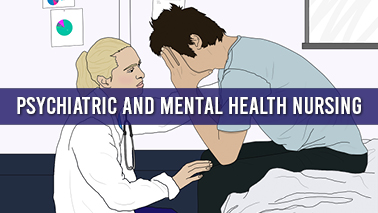
Psychiatric and mental health nursing focuses on the care of individuals with mental health disorders. It involves the assessment, diagnosis, and treatment of psychiatric conditions through therapeutic communication, medication management, and various psychotherapeutic interventions.
Key Components
Assessment: Evaluating patients' mental health status, including emotional, psychological, and social well-being.
Diagnosis: Identifying mental health conditions based on clinical evaluations and diagnostic criteria.
Treatment Planning: Developing individualized care plans that may include medication, therapy, and lifestyle changes.
Therapeutic Communication: Establishing trust and rapport with patients to facilitate open communication and effective care.
Medication Management: Administering and monitoring psychiatric medications to manage symptoms.
Future Research Perspectives
Neurobiology of Mental Illness: Exploring the biological and genetic underpinnings of mental health disorders to develop more effective treatments.
Psychopharmacology: Researching new medications and optimizing existing ones for better management of mental health conditions with fewer side effects.
Early Intervention and Prevention: Identifying early signs of mental illness and developing strategies to prevent the onset of severe conditions.
Digital Mental Health: Investigating the effectiveness of digital tools, such as mobile apps and online therapies, in mental health care.
Personalized Mental Health Care: Tailoring treatments to individual patient profiles based on genetic, environmental, and lifestyle factors.
Stigma Reduction: Developing programs and strategies to reduce the stigma associated with mental health disorders.
Cutting-Edge Technologies and Innovations
Telepsychiatry: Providing psychiatric care and counseling services remotely through video conferencing, improving access to care.
Wearable Technology: Using wearable devices to monitor physiological indicators of mental health, such as stress levels and sleep patterns.
Virtual Reality (VR): Utilizing VR for therapeutic purposes, such as exposure therapy for anxiety disorders and PTSD.
Artificial Intelligence (AI): Implementing AI for diagnosing mental health conditions, predicting treatment outcomes, and personalizing care plans.
Mobile Health Apps: Developing apps that offer therapy, mood tracking, and self-help resources for mental health management.
Neurofeedback: Using real-time monitoring of brain activity to help patients learn to regulate their brain function and alleviate symptoms.
Genetic Testing: Applying genetic testing to identify predispositions to mental health disorders and tailor treatments accordingly.
Cognitive Behavioral Therapy (CBT) Online: Providing access to evidence-based CBT programs through online platforms, making therapy more accessible and convenient.
Tags
Nursing Conferences 2025
Spain Nursing Conferences 2024
Advanced Nursing Practice Conferences 2025
Nursing Conferences 2025 Asia
Nursing Conferences 2024
Nursing Care Conferences
Germany Nursing Conferences
Nursing Conferences 2025 USA
Japan Nursing Conferences
Nursing Conferences USA
Canada Nursing Conferences 2025
Nursing Conferences 2025 Australia
Nursing Conferences Europe
Nursing Education Conferences
Nursing Education Conferences 2024 Asia

Obstetrics and gynecology (OB/GYN) nursing focuses on the health care of women, particularly during pregnancy, childbirth, and postpartum, as well as the diagnosis and treatment of conditions affecting the female reproductive system. Nurses in this specialty work in hospitals, clinics, and private practices, providing comprehensive care to women across their lifespan.
Future Research Perspectives
Maternal-Fetal Medicine: Researching ways to improve outcomes for high-risk pregnancies and fetal health through advanced diagnostics and interventions.
Reproductive Health: Exploring new treatments and technologies for infertility, hormonal imbalances, and reproductive system disorders.
Minimally Invasive Surgery: Advancing techniques in laparoscopic and robotic surgery to reduce recovery times and improve outcomes for gynecological conditions.
Postpartum Depression: Investigating the causes, prevention, and treatment of postpartum depression and other perinatal mood disorders.
Patient-Centered Care: Developing personalized care plans based on genetic, lifestyle, and environmental factors to optimize women's health.
Health Disparities: Addressing and reducing disparities in maternal and reproductive health care among different populations.
Cutting-Edge Technologies and Innovations
Telehealth: Providing remote prenatal care, consultations, and follow-up appointments to increase access to care, especially in underserved areas.
3D/4D Ultrasound: Using advanced imaging techniques to provide detailed views of the fetus, improving prenatal diagnostics and bonding experiences for parents.
Genetic Testing and Counseling: Offering genetic screenings for hereditary conditions and counseling to help expectant parents make informed decisions.
Artificial Intelligence (AI): Implementing AI to analyze patient data, predict complications, and assist in clinical decision-making for personalized care.
Wearable Technology: Utilizing wearable devices to monitor vital signs, track fetal movements, and detect early signs of complications during pregnancy.
Robotics in Surgery: Employing robotic-assisted surgery for precise, minimally invasive procedures in gynecology, leading to quicker recoveries and less pain.
Mobile Health Apps: Developing apps that offer pregnancy tracking, educational resources, and symptom monitoring to empower women in managing their health.
Regenerative Medicine: Researching the potential of stem cells and tissue engineering to treat conditions such as uterine fibroids and pelvic floor disorders.
Virtual Reality (VR): Using VR for pain management during labor, patient education, and training healthcare providers in obstetric and gynecological procedures.
Personalized Medicine: Applying genomic information to tailor treatments for conditions like endometriosis, polycystic ovary syndrome (PCOS), and reproductive cancers.
Enhanced Recovery After Surgery (ERAS) Protocols: Implementing evidence-based protocols to improve postoperative recovery times and outcomes for gynecological surgeries.
Tags
Spain Nursing Conferences 2024
Nursing Education Conferences 2024 Asia
Advanced Nursing Practice Conferences
Nursing Conferences Europe
World Nursing Conferences
Japan Nursing Conferences
Advanced Nursing Practice Conferences 2025
Nursing Conferences 2024 UK
Canada Nursing Conferences
Nursing Conferences 2025 Australia
Nursing Conferences 2025
Nursing Education Conferences
Nursing Conferences 2025 USA
Nursing Care Conferences
Asian Nursing Conferences 2025

Surgical nursing focuses on the care of patients before, during, and after surgery. Surgical nurses, or perioperative nurses, work in various settings, including hospitals, outpatient surgical centers, and specialized surgical units, providing comprehensive care and ensuring patient safety throughout the surgical process.
Future Research Perspectives
Enhanced Recovery After Surgery (ERAS) Protocols: Researching and implementing ERAS protocols to improve postoperative recovery times, reduce complications, and enhance patient outcomes.
Minimally Invasive Surgery: Exploring new techniques and technologies in minimally invasive surgery to reduce patient trauma, pain, and recovery time.
Surgical Site Infection (SSI) Prevention: Developing advanced methods and materials to prevent SSIs, including better antiseptic solutions, antibiotic protocols, and wound care techniques.
Patient-Centered Care: Investigating ways to personalize surgical care plans based on individual patient characteristics, preferences, and risk factors.
Pain Management: Studying alternative and multimodal pain management strategies to reduce reliance on opioids and improve patient comfort.
Robotics and AI in Surgery: Advancing the integration of robotics and AI to enhance precision, efficiency, and outcomes in surgical procedures.
Virtual Reality (VR) and Augmented Reality (AR): Utilizing VR and AR for surgical training, planning, and patient education, improving skills and patient understanding of procedures.
Telemedicine and Remote Monitoring: Expanding the use of telemedicine for preoperative consultations and postoperative follow-ups, increasing accessibility and convenience for patients.
Cutting-Edge Technologies and Innovations
Robotic-Assisted Surgery: Robotic systems, such as the da Vinci Surgical System, provide greater precision, flexibility, and control, enabling minimally invasive procedures with smaller incisions and faster recovery times.
AI and Machine Learning: AI algorithms are used to analyze surgical data, predict complications, and assist in real-time decision-making during procedures, enhancing surgical outcomes.
3D Printing: 3D printing technology is used to create custom surgical instruments, implants, and anatomical models for preoperative planning and intraoperative guidance.
Enhanced Visualization: Advanced imaging techniques, such as intraoperative MRI and CT, provide real-time, high-resolution images during surgery, improving accuracy and outcomes.
Smart Surgical Instruments: Instruments equipped with sensors and digital interfaces provide real-time feedback and data collection, improving precision and safety during surgery.
Nanotechnology: Nanotechnology is used to develop targeted drug delivery systems and advanced materials for surgical applications, improving treatment efficacy and patient outcomes.
Tags
London Nursing Conferences
Spain Nursing Conferences 2024
Nursing Conferences 2025 Australia
Asian Nursing Conferences 2025
Nursing Conferences 2024
Japan Nursing Conferences
Nursing Care Conferences
Nursing Education Conferences
Advanced Nursing Practice Conferences
Nursing Conferences USA
Advanced Nursing Practice Conferences 2025
Nursing Conferences 2025
Nursing Education Conferences 2024 Asia
Canada Nursing Conferences 2025
World Nursing Conferences
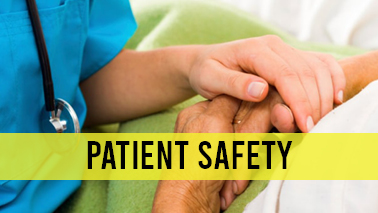
Patient safety focuses on preventing errors and adverse effects associated with healthcare. It is a critical aspect of quality care, ensuring that patients receive safe and effective treatments. Patient safety encompasses various practices, systems, and policies designed to minimize harm to patients.
Key Components
Error Prevention: Implementing strategies to reduce medical errors, such as standardized protocols and checklists.
Reporting and Learning Systems: Encouraging the reporting of errors and near misses to learn and prevent future incidents.
Safety Culture: Promoting a culture where safety is prioritized, and healthcare workers feel comfortable reporting concerns.
Infection Control: Implementing practices to prevent healthcare-associated infections (HAIs).
Medication Safety: Ensuring accurate prescribing, dispensing, and administration of medications.
Future Research Perspectives
Human Factors Engineering: Researching the impact of human factors on patient safety, including ergonomics, workflow design, and user interfaces, to reduce errors and improve safety.
Safety Culture: Exploring ways to cultivate and maintain a strong safety culture within healthcare organizations, emphasizing leadership, communication, and teamwork.
Health Information Technology (Health IT): Studying the impact of electronic health records (EHRs), clinical decision support systems, and other health IT on patient safety, focusing on usability and integration.
Patient Safety Metrics: Developing and refining metrics to accurately measure patient safety outcomes and the effectiveness of safety interventions.
Personalized Safety Interventions: Creating tailored safety strategies based on patient-specific risk factors, health conditions, and treatment plans.
Simulation Training: Expanding the use of simulation-based training to improve healthcare providers' skills and response to critical situations.
Cutting-Edge Technologies and Innovations
Artificial Intelligence (AI) and Machine Learning: AI algorithms analyze large datasets to identify patterns, predict adverse events, and provide real-time decision support to healthcare providers.
Wearable Technology: Wearable devices monitor patient vitals continuously, detecting early signs of deterioration and alerting healthcare providers to intervene promptly.
Blockchain: Blockchain technology ensures the secure and transparent sharing of patient information, reducing the risk of data breaches and errors.
Telemedicine: Telemedicine platforms facilitate remote monitoring and consultations, improving access to care and enabling early detection of potential issues.
Smart Infusion Pumps: Advanced infusion pumps with safety features, such as dose error reduction systems, ensure accurate medication delivery.
Natural Language Processing (NLP): NLP tools analyze clinical notes and patient records to identify potential safety issues and alert providers to take preventive actions.
Tags
Germany Nursing Conferences
Nursing Education Conferences 2024 Asia
Nursing Conferences USA
Nursing Conferences 2024
Advanced Nursing Practice Conferences
Nursing Conferences 2024 UK
Nursing Care Conferences
Nursing Conferences 2025 Brazil
Japan Nursing Conferences
Nursing Conferences 2025 USA
Nursing Education Conferences
Nursing Conferences 2025 Asia
Nursing Conferences 2025 Australia
London Nursing Conferences

Wound care nursing is a specialized field focused on the treatment and management of patients with various types of wounds, including chronic wounds like pressure ulcers, diabetic foot ulcers, venous stasis ulcers, and acute wounds such as surgical wounds and traumatic injuries. Wound care nurses work to promote healing, prevent infection, and minimize the complications associated with wounds.
Future Research Perspectives
Advanced Biomaterials: Investigating new materials for wound dressings that promote faster healing and reduce infection risks.
Genetic and Molecular Research: Exploring the genetic factors that influence wound healing and developing personalized treatment plans.
Chronic Wound Management: Understanding the underlying causes of chronic wounds and developing strategies to prevent their occurrence.
Patient-Centred Care Models: Studying the impact of individualized care plans on patient outcomes and satisfaction.
Telemedicine and Remote Monitoring: Researching the effectiveness of remote wound assessment and management, especially for patients in rural or underserved areas.
Cutting-Edge Technologies and Innovations
Negative Pressure Wound Therapy (NPWT): Devices that apply controlled suction to remove excess fluid and promote blood flow to the wound area.
Bioengineered Skin Substitutes: Using laboratory-grown skin or synthetic materials to cover and heal extensive wounds.
3D Printing: Creating customized wound care products and skin grafts tailored to individual patients' needs.
Laser Therapy and Phototherapy: Utilizing light-based treatments to accelerate wound healing and reduce scarring.
Antimicrobial Coatings: Developing surfaces and materials that prevent bacterial growth and reduce the risk of infection.
Nanotechnology: Applying nanoparticles to deliver drugs directly to wound sites, enhancing the effectiveness of treatments.
Tags
Nursing Conferences 2025 Asia
Japan Nursing Conferences
Nursing Conferences Europe
Spain Nursing Conferences 2024
Nursing Conferences 2024
World Nursing Conferences
Nursing Conferences 2025 Australia
Nursing Conferences 2024 UK
Advanced Nursing Practice Conferences 2025
Nursing Conferences 2025 USA
Japan Nursing Conferences 2024
Global Nursing Conferences
Nursing Care Conferences
Nursing Conferences 2025 Brazil
Nursing Conferences 2025
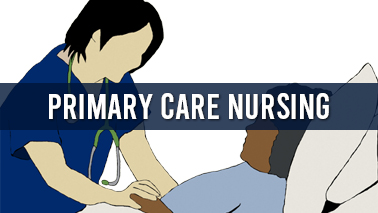
Primary care nursing is a foundational aspect of the healthcare system, focusing on the provision of comprehensive, accessible, community-based care that meets the health needs of individuals and families across the lifespan. Primary care nurses play a vital role in promoting health, preventing illness, managing chronic conditions, and coordinating care with other healthcare providers.
Key Responsibilities of Primary Care Nurses
Health Assessment: Conducting comprehensive assessments to evaluate patients' physical, emotional, and social health.
Preventive Care: Administering vaccinations, conducting screenings, and educating patients on healthy lifestyle choices.
Chronic Disease Management: Helping patients manage conditions such as diabetes, hypertension, and asthma through education, medication management, and lifestyle modifications.
Patient Education: Empowering patients with knowledge and skills to manage their own health and make informed decisions.
Future Research Perspectives
Population Health Management: Studying strategies to improve health outcomes at a community or population level, including social determinants of health.
Integrated Care Models: Researching the effectiveness of integrated care approaches that combine primary, specialty, and behavioural health services.
Health Disparities: Investigating the root causes of health disparities and developing interventions to promote health equity.
Patient-Centred Care: Evaluating the impact of personalized care plans and patient engagement on health outcomes.
Telehealth: Exploring the efficacy, accessibility, and cost-effectiveness of telehealth services in primary care settings.
Chronic Disease Prevention: Developing and testing innovative approaches to prevent chronic diseases through lifestyle interventions and early detection.
Cutting-Edge Technologies and Innovations
Electronic Health Records (EHRs): Enhancing the use of EHRs to improve care coordination, patient safety, and data analytics.
Artificial Intelligence (AI) and Machine Learning: Implementing AI-driven tools to assist in diagnosis, treatment planning, and predicting patient outcomes.
Wearable Health Devices: Using devices such as smartwatches and fitness trackers to monitor patients’ vital signs and health behaviors in real-time.
Patient Portals and Apps: Providing patients with digital platforms to access their health information, communicate with providers, and manage their health.
Genomic Medicine: Incorporating genetic testing and personalized medicine into primary care to tailor treatments to individual patients’ genetic profiles.
Mobile Health Units: Deploying mobile clinics to provide primary care services in remote or underserved areas.
Tags
Nursing Education Conferences 2024 Asia
Nursing Conferences 2024
Canada Nursing Conferences 2025
Nursing Conferences Europe
Canada Nursing Conferences
Advanced Nursing Practice Conferences
Spain Nursing Conferences 2024
Asian Nursing Conferences 2025
Nursing Conferences 2025 Australia
Germany Nursing Conferences
London Nursing Conferences
Japan Nursing Conferences 2024
Nursing Conferences USA
Nursing Education Conferences
Nursing Conferences 2025 USA

Travel nursing is a unique and dynamic specialty within the nursing profession. Travel nurses are registered nurses who take temporary assignments in different locations, often to fill staffing shortages in hospitals, clinics, and other healthcare facilities. These assignments typically last from a few weeks to several months and can be in various regions, both domestically and internationally.
Key Responsibilities of Travel Nurses
Adaptability: Quickly acclimating to new environments, protocols, and team dynamics.
Clinical Expertise: Providing high-quality care across a range of specialties, such as emergency, critical care, and medical-surgical nursing.
Patient Care: Performing all standard nursing duties, including assessments, administering medications, and collaborating with healthcare teams.
Future Research Perspectives
Staffing and Workforce Trends: Analysing trends in nursing shortages and surpluses to predict future demands for travel nurses.
Quality of Care: Researching the impact of travel nurses on patient outcomes and overall healthcare quality.
Job Satisfaction and Retention: Studying factors that influence job satisfaction and retention rates among travel nurses.
Cultural Competency: Examining the effectiveness of cultural competency training for travel nurses in diverse healthcare settings.
Burnout and Mental Health: Investigating the prevalence of burnout and mental health challenges among travel nurses and developing strategies for support.
Cutting-Edge Technologies and Innovations
Telehealth and Remote Work: Utilizing telehealth technologies to allow travel nurses to provide care and consultations remotely.
Mobile Health Apps: Employing apps that help travel nurses track assignments, manage schedules, and access clinical resources.
EHR Integration: Enhancing electronic health record (EHR) systems to ensure seamless access and update of patient records across different facilities.
Virtual Reality (VR) Training: Using VR for training and orientation, helping travel nurses quickly familiarize themselves with new environments and protocols.
AI and Predictive Analytics: Implementing AI-driven tools to match travel nurses with assignments that fit their skills, preferences, and career goals.
Wearable Technology: Leveraging wearable devices to monitor travel nurses' health and well-being, helping to prevent burnout and fatigue.
Blockchain for Credentialing: Applying blockchain technology to streamline and secure the credentialing process for travel nurses, ensuring quicker and more reliable verification of qualifications.
Tags
London Nursing Conferences
Nursing Conferences 2025 USA
Nursing Education Conferences
Nursing Conferences 2025 Asia
Japan Nursing Conferences
Spain Nursing Conferences 2024
Advanced Nursing Practice Conferences
Nursing Education Conferences 2024 Asia
Canada Nursing Conferences
Canada Nursing Conferences 2025
Nursing Conferences 2024
Nursing Care Conferences
Japan Nursing Conferences 2024
World Nursing Conferences
Nursing Conferences Europe

Advanced nursing practice involves nurses who have acquired specialized knowledge, skills, and training through advanced education, typically at the master's or doctoral level. These nurses, often referred to as Advanced Practice Registered Nurses (APRNs), include Nurse Practitioners (NPs), Clinical Nurse Specialists (CNSs), Nurse Anaesthetists (CRNAs), and Nurse Midwives (CNMs). APRNs play a critical role in the healthcare system by providing primary and specialized care, often serving as primary care providers, especially in underserved areas.
Future Research Perspectives
Outcome Measurement: Researching the impact of APRNs on patient outcomes, healthcare costs, and access to care.
Role Expansion: Exploring the evolving roles of APRNs in various healthcare settings and their contributions to interdisciplinary teams.
Education and Training: Evaluating the effectiveness of advanced nursing education programs and identifying best practices for training APRNs.
Health Disparities: Investigating the role of APRNs in addressing health disparities and improving health equity.
Policy and Regulation: Analysing the effects of regulatory changes on the scope of practice and the delivery of advanced nursing care.
Cutting-Edge Technologies and Innovations
Telehealth and Telemedicine: Expanding the use of telehealth to provide remote consultations, follow-ups, and patient education.
Artificial Intelligence (AI): Implementing AI-driven tools to aid in diagnosis, treatment planning, and predictive analytics to anticipate patient needs.
Electronic Health Records (EHRs): Enhancing EHR systems for better integration and accessibility, improving care coordination and patient safety.
Wearable Technology: Using wearable devices to monitor patient health metrics in real-time, allowing for more proactive and personalized care.
Genomic Medicine: Incorporating genetic testing and personalized medicine approaches to tailor treatments to individual patients’ genetic profiles.
Robotics: Utilizing robotic technology in surgery, rehabilitation, and patient care to enhance precision and efficiency.
Simulation Training: Employing advanced simulation tools for training APRNs, improving their clinical skills and decision-making abilities.
Tags
Global Nursing Conferences
Nursing Conferences 2025 Brazil
Canada Nursing Conferences 2025
Germany Nursing Conferences
Canada Nursing Conferences
Advanced Nursing Practice Conferences
Nursing Education Conferences 2024 Asia
Nursing Conferences 2025 USA
Nursing Conferences 2025 Australia
Japan Nursing Conferences 2024
Nursing Conferences 2024 UK
Advanced Nursing Practice Conferences 2025
Nursing Care Conferences
Nursing Conferences 2024
Nursing Conferences 2025 Asia

Nursing theory is a framework of concepts, definitions, relationships, and assumptions derived from nursing models or other disciplines that support the nursing practice. Nursing theories provide a foundation for understanding and guiding the practice of nursing, enabling nurses to articulate what they do, why they do it, and how they can improve patient care.
Key Components of Nursing Theory
Concepts: Building blocks of theories; these are abstract ideas representing phenomena in nursing, such as health, environment, and nursing care.
Definitions: Clarifications of the concepts used in a theory, providing a precise meaning.
Relationships: Connections among concepts that show how they interact and influence one another.
Assumptions: Statements taken for granted or considered true without empirical evidence within the theory.
Major Nursing Theories
Florence Nightingale’s Environmental Theory: Focuses on the environment's impact on health and recovery.
Jean Watson’s Theory of Human Caring: Emphasizes caring as the essence of nursing and its impact on patient outcomes.
Dorothea Orem’s Self-Care Deficit Theory: Highlights the importance of patient self-care and the nurse’s role in supporting it.
Imogene King’s Theory of Goal Attainment: Focuses on the nurse-patient relationship and the setting of mutual goals.
Patricia Benner’s Novice to Expert Model: Describes the stages of clinical competence from novice to expert.
Future Research Perspectives
Integration of Theory and Practice: Investigating how nursing theories can be better integrated into everyday clinical practice to improve patient outcomes.
Cultural Competency: Developing theories that address cultural diversity and inclusivity in nursing care.
Interdisciplinary Approaches: Exploring how nursing theories can collaborate with theories from other disciplines for holistic patient care.
Patient-Centred Care: Refining theories to emphasize personalized care plans and patient involvement in their own care.
Technology Integration: Studying the impact of emerging technologies on nursing theories and practice.
Cutting-Edge Technologies and Innovations
Artificial Intelligence (AI): Utilizing AI to develop predictive models and refine nursing theories based on large datasets.
Big Data Analytics: Applying data analytics to test and validate nursing theories using vast amounts of clinical data.
Simulation and Virtual Reality (VR): Using simulation and VR for theory-based education and training, enhancing clinical decision-making skills.
Telehealth and Remote Monitoring: Incorporating telehealth into nursing theories to address care delivery in remote and underserved areas.
Wearable Health Technology: Integrating data from wearable devices into nursing theories to monitor and improve patient health outcomes.
Genomics and Personalized Medicine: Including genetic information in nursing theories to support personalized treatment plans.
Blockchain for Data Security: Using blockchain technology to ensure the secure and transparent use of patient data in theory-based research.
Tags
Advanced Nursing Practice Conferences
Nursing Education Conferences
Nursing Conferences 2024
Nursing Conferences 2025 USA
Nursing Conferences Europe
Canada Nursing Conferences 2025
Nursing Education Conferences 2024 Asia
Spain Nursing Conferences 2024
Nursing Conferences 2025 Asia
Global Nursing Conferences
Canada Nursing Conferences
Advanced Nursing Practice Conferences 2025
London Nursing Conferences
Nursing Conferences 2025 Brazil
Germany Nursing Conferences

Telemedicine involves the use of telecommunications technology to provide healthcare services remotely. This can include consultations, diagnoses, treatment recommendations, and patient monitoring. E-health encompasses a broader scope than telemedicine, integrating electronic processes and communication in healthcare. It involves the use of information and communication technologies (ICT) for health services and information.
Applications
Consultations: Virtual visits with doctors via video calls or phone calls.
Remote Monitoring: Use of wearable devices to track patients' health metrics and relay data to healthcare providers.
Tele-radiology: Transmission of radiological images (X-rays, MRIs) to specialists for remote diagnosis.
Electronic Health Records (EHRs): Digital version of patients' paper charts, easily accessible by healthcare providers.
Health Information Systems: Systems to manage healthcare data, including patient records, billing, and supply chain management.
Mobile Health (mHealth): Use of mobile devices and apps to support health practices and services.
Future Research Perspectives
AI and Machine Learning: Developing advanced algorithms for predictive analytics, personalized medicine, and automated diagnostics.
Blockchain: Enhancing security, privacy, and interoperability of health data through decentralized ledger technology.
Wearable and Implantable Devices: Creating advanced devices for continuous health monitoring and real-time data collection.
Virtual Reality (VR) and Augmented Reality (AR): Using VR and AR for medical training, surgical simulations, and patient rehabilitation.
5G Technology: Leveraging high-speed, low-latency networks to improve the quality and responsiveness of telemedicine services.
Biometric Sensors: Integrating biometric data (e.g., heart rate, glucose levels) for more comprehensive health monitoring and management.
Cutting-edge Technologies and Innovations
Telemedicine Robots: Remote-controlled robots for performing medical examinations and minor procedures.
Smart Hospitals: Fully integrated systems using IoT (Internet of Things) to monitor and manage hospital resources, patient conditions, and staff efficiency.
Digital Therapeutics: Software-driven treatments that provide therapeutic interventions directly to patients.
Cybersecurity Solutions: Advanced security measures to protect sensitive health data from cyber threats.
Interoperable EHR Systems: Standardized systems allowing seamless data exchange across different healthcare providers and platforms.
AI-driven Diagnostics: Tools that use AI to interpret medical images, predict disease outbreaks, and identify potential health risks.
Tags
Canada Nursing Conferences 2025
London Nursing Conferences
Nursing Conferences USA
World Nursing Conferences
Nursing Education Conferences 2024 Asia
Advanced Nursing Practice Conferences 2025
Canada Nursing Conferences
Spain Nursing Conferences 2024
Nursing Care Conferences
Germany Nursing Conferences
Global Nursing Conferences
Nursing Conferences 2025 Australia
Nursing Conferences 2024 UK
Nursing Conferences 2025 Brazil

Occupational health nursing involves the practice of providing health and safety services to employees within their workplace. This specialty focuses on preventing occupational injuries and illnesses, promoting health and productivity, and ensuring a safe working environment.
Roles and Responsibilities
Health Surveillance: Monitoring workers' health to detect early signs of occupational illness.
Risk Assessment: Identifying and assessing potential workplace hazards and implementing preventive measures.
Emergency Response: Providing immediate care in case of workplace accidents or medical emergencies.
Future Research Perspectives
Workplace Mental Health: Investigating the impact of workplace stressors on mental health and developing strategies to mitigate these effects.
Chronic Disease Management: Exploring effective ways to manage chronic conditions within the workplace.
Aging Workforce: Studying the unique health needs of an aging workforce and developing appropriate interventions.
Ergonomics: Advancing ergonomic solutions to prevent musculoskeletal disorders.
Occupational Exposure: Researching the long-term effects of exposure to hazardous substances and environments.
Health Disparities: Addressing health disparities among different worker populations and improving health equity.
Cutting-edge Technologies and Innovations
Wearable Technology: Devices that monitor workers' health metrics in real time, such as heart rate, physical activity, and exposure to harmful substances.
Telehealth: Providing remote health services and consultations to workers, especially in remote or hazardous locations.
AI and Predictive Analytics: Using AI to analyze health data and predict potential health risks, enabling early intervention.
Virtual Reality (VR) Training: Utilizing VR for safety training and simulations to prepare workers for emergency situations.
Mobile Health Apps: Apps designed for occupational health, providing resources, health tracking, and support to employees.
Environmental Sensors: Deploying sensors in the workplace to monitor air quality, noise levels, and other environmental factors that affect health.
Genetic Testing: Exploring the use of genetic testing to identify workers who may be more susceptible to certain occupational hazards.
Robotics and Automation: Implementing robotics to perform dangerous tasks, reducing the risk of injury to human workers.
Blockchain for Health Records: Ensuring secure and interoperable health records using blockchain technology.
Tags
Japan Nursing Conferences
Nursing Education Conferences
Nursing Conferences 2025 Australia
Nursing Conferences 2024
Global Nursing Conferences
Spain Nursing Conferences 2024
Advanced Nursing Practice Conferences
Japan Nursing Conferences 2024
Germany Nursing Conferences
Nursing Conferences 2025 Brazil
Nursing Conferences 2025
Nursing Education Conferences 2024 Asia
Nursing Conferences 2024 UK
Nursing Care Conferences
London Nursing Conferences

Nursing mentorship is a formal or informal relationship where an experienced nurse (mentor) provides guidance, support, and knowledge to a less experienced nurse (mentee). This relationship aims to foster professional growth, skill development, and career advancement.
Roles and Responsibilities
Guidance: Providing advice on clinical practices, career development, and navigating the healthcare system.
Support: Offering emotional and professional support to help mentees cope with challenges and stress.
Skill Development: Assisting mentees in developing clinical, leadership, and critical thinking skills.
Feedback: Offering constructive feedback on performance and areas for improvement.
Future Research Perspectives
Mentorship Models: Investigating the effectiveness of different mentorship models (e.g., peer mentoring, group mentoring, virtual mentoring) in various nursing contexts.
Outcomes Measurement: Developing standardized tools and metrics to measure the impact of mentorship on nurse performance, retention, and patient outcomes.
Mentorship Training: Exploring best practices for training mentors to ensure they are equipped with the skills needed to be effective in their roles.
Diversity and Inclusion: Examining how mentorship can support diversity and inclusion in the nursing workforce.
Technology Integration: Studying the use of digital tools and platforms to facilitate and enhance mentorship relationships.
Long-term Impact: Assessing the long-term impact of mentorship on career progression and leadership development in nursing.
Cutting-edge Technologies and Innovations
Virtual Mentorship Platforms: Online platforms that connect mentors and mentees, facilitating remote mentorship relationships through video calls, messaging, and collaborative tools.
Artificial Intelligence (AI): AI-driven tools that match mentors and mentees based on compatibility, expertise, and career goals.
Mobile Apps: Apps designed for mentorship programs, offering resources, tracking progress, and providing communication channels.
E-mentoring: Utilizing email, forums, and social media to support mentorship relationships, especially for nurses in remote or underserved areas.
Simulation Technology: Virtual simulation environments where mentors can guide mentees through clinical scenarios and skill practice.
Data Analytics: Using data analytics to monitor mentorship programs, identify trends, and improve program effectiveness.
Gamification: Incorporating gamification elements to make mentorship engaging and to motivate mentees.
Tags
World Nursing Conferences
Canada Nursing Conferences
Nursing Conferences Europe
Advanced Nursing Practice Conferences 2025
Nursing Conferences 2025 Brazil
Japan Nursing Conferences
Nursing Education Conferences 2024 Asia
Nursing Care Conferences
Nursing Education Conferences
Global Nursing Conferences
Nursing Conferences 2025 Asia
Nursing Conferences 2025
Nursing Conferences USA
Canada Nursing Conferences 2025
Japan Nursing Conferences 2024

Nursing policy refers to the regulations, guidelines, and standards that govern the practice of nursing. These policies are essential for ensuring safe, ethical, and effective patient care. They encompass a broad range of issues, including licensure, scope of practice, patient rights, healthcare access, and workforce development.
Components
Licensure and Certification: Policies that define the qualifications and requirements for obtaining and maintaining a nursing license.
Scope of Practice: Guidelines that delineate the responsibilities and boundaries of nursing roles, including advanced practice roles such as nurse practitioners.
Workplace Standards: Policies regarding workplace safety, nurse-patient ratios, working hours, and professional conduct.
Education and Training: Regulations related to nursing education programs, continuing education, and professional development.
Future Research Perspectives
Policy Impact Assessment: Evaluating the effectiveness of existing nursing policies on patient outcomes, nurse satisfaction, and healthcare delivery.
Policy Development Process: Studying the processes by which nursing policies are developed, implemented, and revised.
Global Nursing Policies: Comparing nursing policies across different countries to identify best practices and areas for improvement.
Health Equity and Policy: Investigating the role of nursing policies in promoting health equity and reducing disparities.
Technological Integration: Exploring how policies can adapt to incorporate emerging technologies in nursing practice.
Workforce Policies: Assessing the impact of policies on nurse recruitment, retention, and workforce diversity.
Environmental Health: Developing policies to protect nurses and patients from environmental hazards in healthcare settings.
Cutting-edge Technologies and Innovations
Electronic Health Records (EHRs): Policies to ensure the secure, efficient, and ethical use of EHRs in nursing practice.
Telehealth Regulations: Guidelines for the practice of telehealth, including licensure, reimbursement, and quality standards.
Artificial Intelligence (AI) in Nursing: Policies for the integration of AI in clinical decision-making, patient monitoring, and administrative tasks.
Mobile Health Technologies: Guidelines for the use of mobile health apps and devices in patient care and health promotion.
Blockchain for Health Data: Policies to govern the use of blockchain technology for secure and transparent health data management.
Wearable Technology: Regulations for the use of wearable devices to monitor patient health and assist in clinical care.
Genomics and Precision Medicine: Policies to integrate genomic information into nursing practice for personalized patient care.
Tags
Japan Nursing Conferences
World Nursing Conferences
Nursing Care Conferences
Nursing Conferences 2024
Nursing Education Conferences
Nursing Conferences 2025 Brazil
Advanced Nursing Practice Conferences 2025
Nursing Conferences Europe
London Nursing Conferences
Spain Nursing Conferences 2024
Global Nursing Conferences
Advanced Nursing Practice Conferences
Nursing Conferences 2025 USA
Nursing Conferences 2025 Australia
Asian Nursing Conferences 2025

Nursing Quality Improvement refers to the proactive efforts taken by healthcare professionals, particularly nurses, to enhance the quality and safety of patient care. This includes the systematic analysis of care processes, identification of areas needing improvement, and implementation of evidence-based interventions.
Components
Assessment and Analysis: Evaluating current practices to identify gaps or areas needing improvement.
Planning and Implementation: Developing strategies and interventions to address identified issues.
Monitoring and Evaluation: Continuously tracking outcomes to assess the effectiveness of implemented changes.
Standardization: Creating and adhering to best practice guidelines and protocols.
Staff Education and Training: Ensuring nurses and other healthcare staff are well-trained and informed about quality improvement initiatives.
Patient-Centered Care: Focusing on improving patient outcomes, satisfaction, and safety.
Future Research Perspectives
Evidence-Based Practice: Investigating how to best integrate evidence-based practices into daily nursing routines to enhance quality.
Patient Outcomes: Studying the direct impact of specific quality improvement initiatives on patient outcomes.
Staff Engagement: Exploring methods to increase nurse and staff engagement in quality improvement processes.
Interdisciplinary Collaboration: Researching how collaboration between different healthcare disciplines affects quality improvement outcomes.
Technology Integration: Analyzing the role of advanced technologies in enhancing quality improvement efforts.
Cultural Competency: Investigating how cultural competence training and initiatives improve the quality of care for diverse patient populations.
Sustainability: Studying how to sustain quality improvement gains over the long term.
Cutting-edge Technologies and Innovations
Health Information Technology (HIT): Use of electronic health records (EHRs) and health information exchanges to enhance data accessibility and quality of care.
Data Analytics: Employing big data and predictive analytics to identify trends, predict outcomes, and guide quality improvement initiatives.
Telehealth and Telemonitoring: Utilizing telehealth for remote patient monitoring and follow-up, improving access to care and continuous quality monitoring.
Artificial Intelligence (AI): Leveraging AI for decision support, risk prediction, and personalized care plans.
Mobile Health Applications: Using apps to track patient progress, manage chronic diseases, and provide health education.
Simulation Training: Advanced simulation technologies for training nurses in quality improvement techniques and patient care scenarios.
Wearable Technology: Implementing wearables to monitor patient health metrics in real-time, providing data for quality improvement.
Blockchain Technology: Enhancing data security and interoperability through blockchain, ensuring the integrity and confidentiality of patient records.
Tags
Nursing Conferences 2025 USA
Asian Nursing Conferences 2025
Nursing Education Conferences
Nursing Conferences 2025 Asia
Spain Nursing Conferences 2024
Nursing Conferences 2025 Australia
Germany Nursing Conferences
World Nursing Conferences
Nursing Conferences 2025
Canada Nursing Conferences 2025
London Nursing Conferences
Nursing Conferences 2024 UK
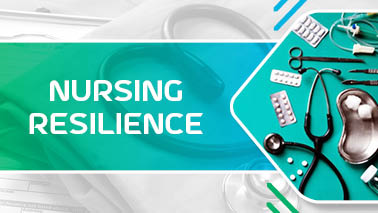
Nursing resilience refers to the ability of nurses to adapt, recover, and grow in the face of challenges and adversity within their profession. It involves coping with stress, managing workload, maintaining emotional well-being, and sustaining professional competence despite various pressures. Research on nursing resilience explores strategies that enhance resilience among nurses, such as supportive work environments, training in stress management, and fostering a sense of community and belonging among healthcare professionals.
Future research perspectives
Intervention Effectiveness: Studying the effectiveness of different interventions (such as mindfulness programs, peer support networks, and resilience training) in improving nurses' resilience and overall well-being.
Long-term Impact: Investigating the long-term effects of resilience-building initiatives on nurses' retention rates, job satisfaction, and patient outcomes.
Intersectionality: Exploring how factors like gender, race, age, and socioeconomic status intersect with resilience in nursing, and developing tailored interventions for diverse groups.
Technology and Resilience: Examining how technology can support nurses' resilience, through tools for workload management, telehealth support, and virtual communities for peer support.
Cutting-edge technologies and innovations
Telehealth and Remote Monitoring: Increasing use of telemedicine and remote patient monitoring technologies, enabling nurses to deliver care remotely and monitor patients' health status more effectively.
Artificial Intelligence (AI) in Healthcare: AI applications are being developed for diagnostics, personalized treatment plans, and predictive analytics, helping nurses make data-driven decisions and improve patient outcomes.
Virtual Reality (VR) and Simulation: VR simulations are used for training nurses in complex procedures, enhancing clinical skills and reducing risks associated with learning on live patients.
Wearable Devices: Devices like smartwatches and health monitors track patients' vital signs and alert nurses to changes in health status, facilitating proactive care delivery.
Robotics: Robotic assistance in surgery and patient care is advancing, reducing physical strain on nurses and improving precision in medical procedures.
Tags
Asian Nursing Conferences 2025
Spain Nursing Conferences 2024
Nursing Conferences 2025 Australia
Nursing Conferences 2025 Brazil
Nursing Conferences 2024 UK
Nursing Conferences 2024
London Nursing Conferences
World Nursing Conferences
Canada Nursing Conferences 2025
Nursing Education Conferences 2024 Asia
Nursing Care Conferences
Advanced Nursing Practice Conferences
Japan Nursing Conferences 2024
Germany Nursing Conferences

Nursing simulation involves the use of scenarios, equipment, and environments that mimic real-life clinical situations to train and assess nursing students and professionals. It provides a safe learning environment where nurses can practice clinical skills, decision-making, and communication without risking patient safety. Simulation-based education has become an integral part of nursing education and professional development.
Future Research Perspectives
Effectiveness and Outcomes: Research can focus on evaluating the effectiveness of simulation-based training in improving clinical skills, decision-making abilities, and patient outcomes among nurses.
Integration into Curricula: Studying optimal methods for integrating simulation exercises into nursing curricula to enhance learning and prepare nurses for real-world practice.
Interprofessional Collaboration: Exploring the benefits of interprofessional simulation training, where nurses work alongside other healthcare professionals (such as physicians, pharmacists, and therapists) to improve teamwork and communication.
Virtual Reality (VR) and Augmented Reality (AR): Investigating the use of VR and AR technologies in nursing simulation to create more immersive and realistic training experiences, enhancing engagement and learning outcomes.
Simulation for Rare and High-Risk Scenarios: Developing simulations for rare or high-risk clinical scenarios (e.g., medical emergencies, critical care situations) to help nurses practice and prepare for challenging situations they may encounter in their careers.
Cutting-Edge Technologies and Innovations
High-Fidelity Simulation: Advanced manikins and simulators that mimic human physiology and respond to interventions realistically, providing a more immersive learning experience.
Virtual Reality (VR) Simulations: VR environments that allow nurses to practice skills and procedures in virtual settings, providing a safe and controlled learning environment.
Augmented Reality (AR): AR applications that overlay digital information onto real-world environments, enhancing simulation experiences and providing real-time feedback.
Simulation Centers of Excellence: Dedicated simulation centers equipped with state-of-the-art technology and facilities for conducting realistic simulations and research.
Mobile and Remote Simulation: Mobile simulation units or remote-access simulations that allow nurses in various locations to participate in training exercises and simulations.
Data Analytics and Feedback Systems: Utilizing data analytics to track performance during simulations, providing personalized feedback to nurses, and identifying areas for improvement.
Tags
Nursing Care Conferences
London Nursing Conferences
Germany Nursing Conferences
Nursing Conferences 2025
World Nursing Conferences
Nursing Conferences 2025 Australia
Nursing Education Conferences
Advanced Nursing Practice Conferences
Japan Nursing Conferences
Canada Nursing Conferences 2025
Asian Nursing Conferences 2025
Canada Nursing Conferences
Advanced Nursing Practice Conferences 2025
Nursing Conferences 2024
Japan Nursing Conferences 2024

Nursing technologies encompass a wide range of tools and innovations designed to enhance patient care, streamline workflow, improve communication, and support nursing practice. These technologies play a crucial role in modern healthcare settings by empowering nurses to deliver efficient, evidence-based care while enhancing patient outcomes and safety.
Future Research Perspectives
Integration and Usability: Research can focus on the integration of various technologies into nursing practice and their usability in different clinical settings. This includes studying user experience, barriers to adoption, and strategies for effective implementation.
Impact on Patient Outcomes: Evaluating the impact of nursing technologies on patient outcomes such as mortality rates, complication rates, patient satisfaction, and quality of life. This research helps determine which technologies are most effective in improving clinical outcomes.
Health Informatics and Data Analytics: Exploring the role of health informatics and data analytics in nursing practice, including the use of electronic health records (EHRs), predictive analytics, and decision support systems to improve care delivery and clinical decision-making.
Telehealth and Remote Monitoring: Investigating the effectiveness of telehealth technologies, remote monitoring devices, and mobile health apps in managing chronic conditions, providing patient education, and enhancing access to healthcare services.
Interoperability and Standards: Researching interoperability standards for nursing technologies to ensure seamless communication and data exchange between different healthcare systems and devices, improving continuity of care.
Cutting-Edge Technologies and Innovations
Artificial Intelligence (AI) and Machine Learning: AI applications for nursing include predictive analytics for early disease detection, personalized treatment plans, and AI-assisted decision support systems to aid in clinical decision-making.
Wearable Devices: Wearable health monitors and smart devices that track patients' vital signs, activity levels, and medication adherence, providing real-time data to nurses for proactive care management.
Telemedicine and Virtual Care: Expansion of telemedicine platforms and virtual care services, allowing nurses to conduct remote consultations, monitor patients remotely, and provide follow-up care without requiring in-person visits.
Robotics and Automation: Robotic assistance in surgery, medication administration, and patient care tasks, reducing physical strain on nurses and improving precision in healthcare procedures.
Blockchain Technology: Applications of blockchain in healthcare for secure patient data management, interoperability of health records, and ensuring transparency and accountability in healthcare transactions.
Patient Engagement Technologies: Interactive patient portals, mobile apps for patient education and self-management, and virtual reality tools for pain management and therapeutic interventions.
Tags
Japan Nursing Conferences
Nursing Conferences 2025
Nursing Care Conferences
Nursing Conferences 2025 Brazil
Asian Nursing Conferences 2025
Nursing Education Conferences
London Nursing Conferences
Nursing Conferences 2025 Asia
Advanced Nursing Practice Conferences
Nursing Conferences 2025 USA
Global Nursing Conferences
Nursing Conferences 2024
Advanced Nursing Practice Conferences 2025
Japan Nursing Conferences 2024

The nursing workforce encompasses all registered nurses (RNs), licensed practical nurses (LPNs), and nurse practitioners (NPs) who provide direct patient care across various healthcare settings. It is a critical component of healthcare delivery systems worldwide, facing numerous challenges and opportunities for enhancement through research and technological innovations.
Nursing Workforce Challenges and Future Research Perspectives
Workforce Shortages and Recruitment: Research focuses on understanding the factors contributing to nursing shortages, such as aging workforce demographics, attrition rates, and strategies for recruitment and retention of nurses.
Workforce Diversity and Inclusivity: Studying the impact of workforce diversity (e.g., racial, ethnic, gender diversity) on patient outcomes, cultural competence, and strategies to promote inclusivity in nursing education and practice.
Workforce Well-being and Burnout: Investigating the prevalence of burnout among nurses, its causes (e.g., workload, stress, moral distress), and interventions to improve nurses' well-being, job satisfaction, and resilience.
Scope of Practice and Regulation: Researching regulatory frameworks governing nursing practice, scope of practice expansions for advanced practice nurses, and policy changes to optimize healthcare delivery.
Education and Lifelong Learning: Exploring innovations in nursing education, including competency-based education, simulation training, continuing education models, and lifelong learning strategies to meet evolving healthcare needs.
Cutting-Edge Technologies and Innovations in Nursing Workforce
Telehealth and Remote Monitoring: Technologies that enable nurses to provide remote patient monitoring, telehealth consultations, and virtual care services, expanding access to healthcare and improving patient outcomes.
Artificial Intelligence (AI) and Predictive Analytics: AI applications for workforce management, predictive analytics to forecast patient care needs, optimize staffing levels, and improve resource allocation in healthcare facilities.
Workforce Management Systems: Innovative workforce management platforms that integrate scheduling, workload management, and real-time communication to enhance efficiency and productivity among nursing teams.
Mobile Health Applications: Mobile apps for nursing documentation, patient charting, medication administration, and communication, facilitating real-time data access and streamlined care coordination.
Robotics and Automation: Robotic assistance for routine tasks such as medication delivery, patient lifting, and physical therapy, reducing nurses' physical workload and preventing musculoskeletal injuries.
Virtual Reality (VR) and Augmented Reality (AR): VR simulations for nursing education and training, AR applications for guided procedures and real-time clinical decision support, enhancing nurses' clinical skills and confidence.
Tags
Nursing Conferences USA
Advanced Nursing Practice Conferences 2025
Nursing Conferences 2025 Asia
Japan Nursing Conferences
Nursing Conferences 2025 Australia
Japan Nursing Conferences 2024
World Nursing Conferences
Spain Nursing Conferences 2024
London Nursing Conferences
Nursing Conferences 2025
Nursing Education Conferences 2024 Asia
Nursing Conferences 2024
Nursing Conferences Europe
Canada Nursing Conferences 2025
Canada Nursing Conferences

Pain management in healthcare involves the assessment, treatment, and alleviation of pain experienced by patients, which is essential for improving quality of life and promoting recovery. It encompasses a multidisciplinary approach involving healthcare professionals such as physicians, nurses, pharmacists, and physical therapists, tailored to the specific needs of each patient.
Pain Management Challenges and Future Research Perspectives
Personalized Pain Management: Research focuses on developing personalized pain management strategies based on individual patient characteristics, including genetics, medical history, and psychosocial factors, to optimize treatment outcomes.
Non-Pharmacological Interventions: Studying the effectiveness of non-pharmacological interventions such as physical therapy, cognitive-behavioral therapy (CBT), acupuncture, and mindfulness techniques in managing chronic pain and reducing reliance on medications.
Opioid Crisis and Alternatives: Addressing the opioid crisis through research into alternative pain management modalities, including non-opioid medications, medical cannabis, and innovative therapies with reduced addiction potential and side effects.
Integration of Technology: Exploring the integration of digital health technologies, wearable devices, mobile apps, and telemedicine for remote pain management monitoring, patient education, and real-time intervention adjustments.
Psychosocial Aspects of Pain: Researching the impact of psychosocial factors (e.g., stress, anxiety, depression) on pain perception and management outcomes, and developing integrated care models that address both physical and emotional aspects of pain.
Cutting-Edge Technologies and Innovations in Pain Management
Neuromodulation Therapies: Advanced techniques such as spinal cord stimulation (SCS), peripheral nerve stimulation (PNS), and deep brain stimulation (DBS) for chronic pain management by modulating nerve activity and altering pain perception.
Precision Medicine: Utilizing genomic and biomarker-based approaches to identify genetic predispositions to pain conditions and tailor pharmacological treatments for personalized pain management.
Virtual Reality (VR) and Augmented Reality (AR): VR for distraction therapy during painful procedures, immersive VR environments for chronic pain distraction and rehabilitation, and AR for guided pain management interventions and therapy adherence.
Implantable Devices: Innovations in implantable pain management devices such as intrathecal drug delivery systems (pain pumps) and neurostimulators that deliver targeted therapies directly to pain pathways.
Regenerative Medicine: Research into regenerative therapies such as stem cell treatments and tissue engineering for repairing damaged tissues and alleviating pain associated with musculoskeletal disorders and injuries.
Artificial Intelligence (AI) and Machine Learning: AI algorithms for analyzing patient data, predicting pain outcomes, optimizing treatment plans, and improving decision-making in pain management.
Tags
Nursing Conferences 2024
Nursing Conferences USA
Japan Nursing Conferences
World Nursing Conferences
Advanced Nursing Practice Conferences 2025
Nursing Conferences 2025 USA
Nursing Conferences 2025
Nursing Conferences 2025 Australia
Nursing Conferences 2024 UK
London Nursing Conferences
Nursing Education Conferences 2024 Asia
Canada Nursing Conferences 2025
Nursing Education Conferences
Nursing Conferences 2025 Asia

Palliative care is specialized medical care for people living with serious illnesses. Its goal is to improve quality of life for both the patient and the family. This type of care is provided by a team of doctors, nurses, and other specialists who work together with a patient’s other doctors to provide an extra layer of support. Palliative care is appropriate at any age and at any stage in a serious illness, and it can be provided alongside curative treatment.
Core Aspects of Palliative Care
Symptom Management: Management of side effects from treatments such as nausea, fatigue, and loss of appetite.
Psychosocial Support: Assistance with emotional, psychological, and social issues that arise with serious illness.
Communication and Decision Making: Facilitation of conversations about goals, preferences, and treatment options.
Future Research Perspectives
Integrative Approaches: Research is increasingly focusing on integrating palliative care with standard treatments from the time of diagnosis of serious illnesses.
Personalized Care: Investigating personalized palliative care plans based on genetic, psychosocial, and cultural factors.
Palliative Care in Diverse Populations: Exploring effective palliative care models in different cultural, socioeconomic, and geographical settings.
Outcome Measurement: Developing robust tools and metrics to measure the effectiveness and impact of palliative care.
Technology Integration: Utilizing telemedicine and digital health tools to expand access to palliative care services, especially in remote areas.
Cutting-Edge Technologies and Innovations
Telehealth and Telemedicine: These platforms enable remote consultations and continuous monitoring of patients, especially in underserved areas. Telehealth can provide timely symptom management, reduce hospital visits, and improve access to palliative care specialists.
Artificial Intelligence (AI) and Machine Learning: AI can help predict disease progression, personalize treatment plans, and identify patients who would benefit most from palliative care. Machine learning algorithms can analyze large datasets to uncover patterns and insights that can improve care delivery.
Wearable Devices: Wearables can monitor vital signs and other health metrics in real-time, allowing for proactive management of symptoms and early intervention when issues arise.
Virtual Reality (VR): VR can be used for pain management, providing immersive experiences that distract patients from pain and discomfort. It can also be used in therapy to help patients and families cope with stress and anxiety.
Digital Therapeutics: These software-based interventions can provide evidence-based therapeutic interventions to patients, such as cognitive-behavioral therapy for pain management, through digital platforms.
Genomic Medicine: Understanding the genetic basis of disease and individual responses to treatment can lead to more personalized and effective palliative care interventions.
Blockchain for Medical Records: Blockchain technology can enhance the security and accessibility of patient medical records, ensuring that care is coordinated and information is easily shared among healthcare providers.
Tags
Nursing Care Conferences
Japan Nursing Conferences 2024
London Nursing Conferences
Spain Nursing Conferences 2024
Canada Nursing Conferences
Nursing Conferences 2024
Nursing Education Conferences 2024 Asia
Nursing Conferences 2024 UK
Nursing Conferences 2025 Brazil
Nursing Conferences 2025 Asia
Nursing Conferences 2025 Australia
Nursing Conferences Europe
Asian Nursing Conferences 2025
Advanced Nursing Practice Conferences 2025
Nursing Conferences 2025 USA

Pediatric nursing is a specialized area of nursing that focuses on the care of infants, children, and adolescents. Pediatric nurses work in various settings, including hospitals, clinics, and community health centers, and they play a crucial role in promoting the health and well-being of young patients.
Key Components
Growth and Development: Understanding the physical, emotional, and developmental stages of children to provide age-appropriate care.
Family-Centered Care: Involving families in the care process, recognizing the importance of their role in the child’s health and well-being.
Preventive Care: Emphasizing the importance of immunizations, routine check-ups, and health education to prevent illness and promote healthy lifestyles.
Chronic and Acute Care Management: Providing care for children with chronic conditions like asthma, diabetes, and congenital heart defects, as well as acute illnesses and injuries.
Advocacy: Advocating for the needs and rights of children and their families within the healthcare system.
Future Research Perspectives
Chronic Disease Management: Investigating effective strategies for managing chronic illnesses in children, focusing on improving quality of life and long-term outcomes.
Mental Health: Exploring the mental health needs of children and adolescents, including the impact of early intervention and innovative therapeutic approaches.
Health Disparities: Examining the social determinants of health and their impact on pediatric populations, with a focus on reducing health disparities and improving access to care.
Pain Management: Developing and evaluating pain management techniques that are effective and minimally invasive for children.
Transition to Adult Care: Studying the best practices for transitioning adolescents with chronic conditions from pediatric to adult healthcare services.
Cutting-Edge Technologies and Innovations
Telehealth and Telemedicine: Telehealth services enable remote consultations, especially beneficial for families in rural or underserved areas. These services ensure continuous care and reduce the need for hospital visits.
Wearable Devices: Wearables that monitor vital signs and other health parameters in real-time help in the early detection of health issues and continuous management of chronic conditions.
Mobile Health Applications: Apps designed for children and their families can provide health education, track symptoms, manage medications, and facilitate communication with healthcare providers.
Artificial Intelligence (AI) and Machine Learning: AI can assist in diagnosing conditions, predicting disease progression, and personalizing treatment plans based on large datasets and individual patient data.
Robotics: Robots can be used for rehabilitation and therapy, providing engaging and interactive ways for children to participate in their care and recovery.
3D Printing: 3D printing technology can create customized medical devices, prosthetics, and even anatomical models for surgical planning and education.
Genomic Medicine: Genetic testing and personalized medicine can identify specific genetic conditions and tailor treatments to the individual needs of pediatric patients.
Virtual Reality (VR) and Augmented Reality (AR): VR and AR can be used for pain management, distraction during procedures, and therapeutic interventions for conditions such as autism.
Tags
Nursing Conferences 2025 USA
World Nursing Conferences
Nursing Conferences 2025 Australia
Spain Nursing Conferences 2024
Asian Nursing Conferences 2025
Nursing Conferences 2025 Asia
Germany Nursing Conferences
Canada Nursing Conferences
Global Nursing Conferences
Nursing Conferences 2025 Brazil
Nursing Conferences Europe
London Nursing Conferences
Japan Nursing Conferences
Advanced Nursing Practice Conferences 2025
Nursing Conferences 2024

A registered nurse (RN) is a healthcare professional who has completed a nursing program and obtained a nursing license. RNs work in various healthcare settings, including hospitals, clinics, long-term care facilities, and community health centers. They are responsible for providing and coordinating patient care, educating patients and their families about health conditions and treatments, and advocating for patient needs within the healthcare system.
Key Responsibilities
Direct Patient Care: Assessing patients, administering medications, performing treatments, and monitoring patient progress.
Patient Advocacy: Ensuring that patients receive the best possible care and advocating for their rights and preferences.
Collaboration: Working closely with other healthcare professionals, such as physicians, therapists, and social workers, to provide holistic care.
Health Promotion: Educating patients about preventive healthcare practices and lifestyle modifications to promote health and prevent illness.
Critical Thinking: Making clinical decisions based on evidence-based practice, patient assessment, and nursing knowledge.
Future Research Perspectives
Patient Safety: Investigating strategies to enhance patient safety, reduce medical errors, and improve the quality of care delivery.
Workforce Issues: Studying nursing workforce trends, including recruitment, retention, job satisfaction, and the impact of nurse staffing levels on patient outcomes.
Advanced Practice Nursing: Exploring the roles and contributions of advanced practice nurses (e.g., nurse practitioners, clinical nurse specialists) in healthcare delivery and patient management.
Healthcare Policy and Advocacy: Researching the impact of healthcare policies on nursing practice, patient care outcomes, and healthcare equity.
Technology Integration: Evaluating the use of technology in nursing practice, such as electronic health records (EHRs), telehealth, robotics, and artificial intelligence, to improve efficiency and patient care outcomes.
Cutting-Edge Technologies and Innovations
Telehealth and Telemedicine: Telehealth services enable RNs to provide care remotely, conduct virtual consultations, monitor patients, and deliver education and support.
Electronic Health Records (EHRs): EHR systems streamline documentation, facilitate communication among healthcare providers, and improve care coordination.
Artificial Intelligence (AI) and Machine Learning: AI can assist RNs in diagnosing conditions, predicting patient outcomes, optimizing treatment plans, and identifying patterns in patient data for personalized care.
Wearable Health Devices: Wearables monitor patients' vital signs, activity levels, and health metrics in real-time, allowing for continuous monitoring and early intervention.
Robotics: Nursing robots can assist with patient lifting and transferring, medication administration, and patient interaction, enhancing efficiency and reducing physical strain on nurses.
Simulation Technology: High-fidelity simulation allows RNs to practice clinical skills, decision-making, and teamwork in a safe and controlled environment, improving competency and readiness for real-world scenarios.
Genomics and Precision Medicine: Understanding genetic factors in health and disease helps RNs tailor treatments and interventions to individual patient needs, improving outcomes and reducing adverse reactions.
Tags
Nursing Conferences 2024
Canada Nursing Conferences 2025
Nursing Care Conferences
Advanced Nursing Practice Conferences 2025
Canada Nursing Conferences
Nursing Conferences 2025 Australia
Germany Nursing Conferences
Nursing Education Conferences
World Nursing Conferences
Asian Nursing Conferences 2025
Advanced Nursing Practice Conferences
Nursing Conferences 2025 Brazil
Japan Nursing Conferences
Nursing Conferences 2024 UK

Rehabilitation nursing focuses on assisting individuals with disabilities and chronic illnesses to attain and maintain maximum function. It involves providing care and support throughout the rehabilitation process, which can include physical therapy, occupational therapy, speech therapy, and other specialized therapies aimed at improving independence and quality of life.
Key Responsibilities
Assessment and Planning: Assessing patients' physical and psychological needs and developing individualized care plans.
Therapeutic Interventions: Providing and coordinating therapies aimed at improving mobility, strength, coordination, and cognitive function.
Patient Education: Educating patients and their families about rehabilitation goals, techniques, and strategies for self-care.
Collaboration: Working closely with interdisciplinary teams, including physical therapists, occupational therapists, social workers, and physicians, to optimize patient outcomes.
Support and Advocacy: Advocating for patients' needs and rights, supporting their emotional well-being, and facilitating their transition to community-based care.
Future Research Perspectives
Evidence-Based Practice: Conducting studies to validate and refine nursing interventions and rehabilitation strategies based on the best available evidence.
Technology and Rehabilitation: Investigating the impact of emerging technologies on rehabilitation outcomes, including robotics, virtual reality, and wearable devices.
Chronic Disease Management: Exploring effective nursing interventions and strategies for managing chronic conditions that require long-term rehabilitation.
Interprofessional Collaboration: Studying models of interprofessional teamwork and collaboration to enhance coordination of care and optimize rehabilitation outcomes.
Health Promotion and Wellness: Researching preventive strategies and wellness programs to promote health, prevent disability, and support long-term recovery.
Cutting-Edge Technologies and Innovations
Robotics: Rehabilitation robots assist with repetitive tasks, gait training, and upper limb exercises, providing intensive therapy and reducing strain on healthcare providers.
Virtual Reality (VR) and Augmented Reality (AR): VR and AR technologies offer immersive environments for therapeutic exercises, pain management, and cognitive rehabilitation, enhancing engagement and motivation.
Wearable Devices: Wearables monitor patients' movements, muscle activity, and vital signs, providing real-time feedback to optimize rehabilitation exercises and track progress.
Telehealth and Telemedicine: Telehealth platforms enable remote consultations, therapy sessions, and monitoring of patients' progress, improving access to rehabilitation services and continuity of care.
Artificial Intelligence (AI) and Machine Learning: AI algorithms analyze patient data to personalize rehabilitation plans, predict recovery trajectories, and optimize treatment outcomes based on individualized needs.
Biofeedback Systems: Biofeedback technologies provide patients with real-time information about their physiological responses, helping them learn to control physiological functions such as muscle tension and heart rate.
3D Printing: Customized orthotics, prosthetics, and assistive devices can be produced using 3D printing technology, offering tailored solutions to support mobility and independence during rehabilitation.
Tags
Canada Nursing Conferences 2025
World Nursing Conferences
London Nursing Conferences
Nursing Care Conferences
Advanced Nursing Practice Conferences
Nursing Conferences 2024 UK
Global Nursing Conferences
Nursing Conferences Europe
Nursing Conferences 2025
Nursing Education Conferences 2024 Asia
Nursing Conferences 2025 Australia
Spain Nursing Conferences 2024
Nursing Conferences 2025 Brazil
Nursing Conferences 2025 USA

Substance Abuse Nursing involves caring for patients dealing with drug or alcohol addiction, providing holistic care that addresses both physical and psychological aspects of substance dependency. Nurses in this specialty often work in a variety of settings, including hospitals, rehabilitation centers, outpatient clinics, and community health organizations. Their responsibilities include assessment and diagnosis, treatment planning, patient education, crisis intervention, and support during the recovery process.
Key Roles and Responsibilities
Assessment and Diagnosis: Conducting thorough assessments to understand the extent of substance use and its impact on the patient’s health.
Treatment Planning: Developing individualized care plans that incorporate detoxification, medication management, and therapy.
Patient Education: Educating patients and their families about substance abuse, treatment options, and strategies for maintaining sobriety.
Counseling and Support: Providing emotional support and counseling to help patients cope with the challenges of recovery.
Crisis Intervention: Responding to emergencies and providing immediate care during overdose or withdrawal symptoms.
Coordination of Care: Working with other healthcare professionals to ensure comprehensive care, including mental health services.
Future Research Perspectives
Neuroscience of Addiction: Investigating the brain’s role in addiction to develop more effective treatments.
Genetic and Environmental Factors: Exploring how genetics and environmental factors contribute to substance abuse and addiction.
Mental Health and Addiction: Studying the intersection of mental health disorders and substance abuse to improve dual diagnosis treatment approaches.
Prevention Strategies: Developing and evaluating community-based prevention programs to reduce the incidence of substance abuse.
Long-term Recovery: Researching factors that contribute to sustained recovery and preventing relapse.
Impact of Technology: Assessing the effectiveness of digital health tools and telehealth in addiction treatment and support.
Cutting-edge Technologies and Innovations
Telemedicine and Mobile Health Apps: These provide remote access to counseling, therapy, and monitoring, making it easier for patients to receive care without the need for in-person visits.
Wearable Devices: Wearable technology can monitor physiological signs of substance use and withdrawal, providing real-time data to healthcare providers.
Digital Therapeutics: Software-based interventions designed to treat SUDs through cognitive-behavioral therapy (CBT) and other evidence-based practices delivered via apps and online platforms.
Pharmacogenomics: Using genetic testing to determine how a patient will respond to certain medications, allowing for more personalized and effective pharmacological treatments.
Virtual Reality (VR) Therapy: VR can be used for exposure therapy, stress management, and skills training, providing immersive and engaging therapeutic experiences.
Artificial Intelligence (AI) and Machine Learning: These technologies can analyze large datasets to identify patterns and predict relapse, helping to develop personalized intervention strategies.
Blockchain Technology: Ensuring the security and confidentiality of patient records and improving data sharing among healthcare providers to enhance coordinated care.
Neurofeedback and Brain Stimulation Techniques: Innovative treatments like transcranial magnetic stimulation (TMS) and neurofeedback are being explored for their potential to reduce cravings and improve cognitive function in patients with SUDs.
Tags
Nursing Conferences 2025
Nursing Care Conferences
Global Nursing Conferences
Japan Nursing Conferences
Nursing Conferences 2025 Brazil
Canada Nursing Conferences 2025
London Nursing Conferences
Advanced Nursing Practice Conferences
Spain Nursing Conferences 2024
Nursing Conferences 2025 USA
Nursing Conferences USA
Nursing Conferences 2025 Asia
Nursing Conferences 2024
Nursing Conferences 2024 UK

Telehealth nursing involves the use of telecommunications and digital technologies to deliver nursing care and services remotely. This approach has gained significant traction, especially in response to the increasing demand for healthcare services, the need for accessibility, and the global challenges posed by the COVID-19 pandemic. Telehealth nursing includes a wide range of activities such as patient assessment, education, consultation, monitoring, and follow-up care through various digital platforms.
Future Research Perspectives
Effectiveness and Outcomes: Research focusing on the effectiveness of telehealth nursing interventions compared to traditional in-person care. This includes patient outcomes, satisfaction, and cost-effectiveness.
Chronic Disease Management: Investigating the role of telehealth nursing in managing chronic diseases like diabetes, hypertension, and COPD, and its impact on patient adherence and quality of life.
Mental Health Services: Exploring how telehealth nursing can support mental health services, particularly in underserved areas or populations with limited access to mental health professionals.Pediatric and Geriatric Care: Assessing the effectiveness of telehealth nursing in pediatric and geriatric populations, addressing specific challenges and benefits for these age groups.
Integration with Electronic Health Records (EHR): Studying the integration of telehealth nursing with EHR systems to streamline workflows, improve data accuracy, and enhance patient care continuity.
Cutting-Edge Technologies and Innovations
Wearable Devices: Utilization of wearable health monitors that track vital signs, physical activity, and other health metrics in real-time, allowing nurses to monitor patients remotely and intervene promptly when necessary.
Artificial Intelligence (AI) and Machine Learning: Implementing AI algorithms to analyze patient data, predict health trends, and provide decision support for nurses, enhancing the precision and efficiency of telehealth services.
Remote Monitoring Systems: Advanced remote monitoring systems that can track a wide range of health parameters, providing comprehensive data to nurses and enabling proactive care management.
Telepresence Robots: Use of telepresence robots in home care and hospital settings to facilitate remote consultations, patient assessments, and even simple clinical tasks.
Virtual Reality (VR) and Augmented Reality (AR): Applying VR and AR technologies for patient education, rehabilitation exercises, and training of nursing staff in telehealth protocols and procedures.
Blockchain Technology: Leveraging blockchain for secure and transparent patient data management, ensuring data integrity and privacy in telehealth interactions.
Mobile Health Apps: Development of sophisticated mobile health applications that allow patients to communicate with nurses, schedule virtual visits, and access health information easily.
Tags
Nursing Conferences Europe
Nursing Education Conferences 2024 Asia
Nursing Conferences 2025
Japan Nursing Conferences 2024
World Nursing Conferences
Germany Nursing Conferences
Nursing Conferences 2025 Asia
Japan Nursing Conferences
Nursing Conferences 2024 UK
Nursing Conferences 2025 Australia
Spain Nursing Conferences 2024
Canada Nursing Conferences 2025
Nursing Education Conferences
Nursing Conferences USA
Advanced Nursing Practice Conferences 2025

Telenursing involves the use of telecommunications and information technology to provide nursing services and care remotely. It encompasses a broad range of practices including teleconsultations, remote patient monitoring, health education, and emergency care. Telenursing aims to improve access to healthcare, enhance patient outcomes, and optimize healthcare delivery, especially for patients in rural or underserved areas.
Future Research Perspectives
Quality of Care and Patient Outcomes: Investigating the impact of telenursing on patient outcomes, quality of care, and patient satisfaction. Studies could compare these outcomes with traditional in-person care to determine the effectiveness of telenursing.
Cost-Effectiveness: Evaluating the cost-effectiveness of telenursing in various settings and for different patient populations. Research could focus on cost savings for healthcare systems and patients, as well as the potential for reducing hospital readmissions.
Chronic Disease Management: Exploring how telenursing can be used for the management of chronic diseases such as diabetes, heart disease, and asthma. This includes studying patient adherence to treatment plans, disease progression, and overall health outcomes.
Access and Equity: Assessing the role of telenursing in improving healthcare access and equity, particularly in underserved and rural communities. Research could explore barriers to access, such as technology literacy and infrastructure, and potential solutions.
Mental Health: Investigating the use of telenursing for mental health care, including the management of conditions like depression, anxiety, and PTSD. This research could focus on patient engagement, treatment adherence, and outcomes.
Integration with Traditional Care: Studying how telenursing can be effectively integrated with traditional in-person care to provide a seamless and comprehensive healthcare experience for patients.
Cutting-Edge Technologies and Innovations
Telehealth Platforms: Development of advanced telehealth platforms that offer secure video conferencing, real-time chat, and integrated electronic health records (EHRs) to facilitate comprehensive patient care.
Remote Monitoring Devices: Utilization of remote monitoring devices, such as wearable sensors and home-based medical devices, that transmit patient data to nurses for continuous health monitoring and timely interventions.
Artificial Intelligence (AI): Implementation of AI in telenursing for predictive analytics, decision support, and personalized care plans. AI can help identify patients at risk, recommend interventions, and improve overall care management.
Virtual Reality (VR) and Augmented Reality (AR): Using VR and AR for remote patient assessments, rehabilitation exercises, and immersive health education. These technologies can enhance the patient experience and provide new ways to interact with healthcare providers.
Mobile Health Applications: Development of sophisticated mobile health apps that enable patients to track their health metrics, communicate with nurses, and access educational resources. These apps can also offer reminders for medication adherence and follow-up appointments.
Blockchain Technology: Leveraging blockchain for secure and transparent patient data management. Blockchain can ensure data integrity, enhance privacy, and streamline the sharing of health information between patients and providers.
Telepresence Robots: Employing telepresence robots in healthcare settings to facilitate remote consultations, patient assessments, and even simple clinical tasks. These robots can enhance the reach and capabilities of telenursing.
Voice-Activated Assistants: Integrating voice-activated assistants like Amazon Alexa and Google Assistant to assist patients with medication reminders, health education, and connecting with their healthcare providers.
Tags
Japan Nursing Conferences 2024
Spain Nursing Conferences 2024
World Nursing Conferences
Germany Nursing Conferences
Nursing Conferences 2025 Brazil
Asian Nursing Conferences 2025
Nursing Conferences 2024 UK
Nursing Conferences 2025 USA
Global Nursing Conferences
Nursing Conferences Europe
Nursing Conferences 2025
Canada Nursing Conferences
Nursing Conferences 2025 Asia
Nursing Conferences 2025 Australia
Advanced Nursing Practice Conferences 2025

Travel health nursing is a specialized field focused on providing care and health advice to individuals traveling internationally. This specialty involves pre-travel consultations, immunizations, advice on preventing travel-related illnesses, and post-travel care. Travel health nurses educate travelers on health risks associated with their destinations, provide prophylactic medications, and offer guidance on maintaining health and safety while abroad.
Future Research Perspectives
Travel-Related Disease Prevention: Research on effective strategies to prevent common travel-related diseases such as malaria, dengue fever, and traveler’s diarrhea. Studies could evaluate the efficacy of new vaccines and prophylactic treatments.
Impact of Climate Change: Investigating how climate change affects travel-related health risks and emerging infectious diseases. Research could focus on how changing environmental conditions influence disease vectors and travel patterns.
Traveler Compliance: Assessing factors that influence traveler compliance with health recommendations and vaccination schedules. Understanding barriers to compliance can inform strategies to improve adherence.
Post-Travel Health Issues: Studying the prevalence and management of post-travel health issues, including infectious diseases and psychological impacts like jet lag and culture shock. Research could explore best practices for post-travel screenings and follow-up care.
Telehealth in Travel Nursing: Exploring the role of telehealth in providing pre-travel consultations and post-travel care. Research could assess the effectiveness and feasibility of remote consultations for travelers.
Cutting-Edge Technologies and Innovations
Digital Health Passports: Development of digital health passports that store travelers' vaccination records, COVID-19 test results, and other health information. These can facilitate seamless and secure travel while ensuring compliance with destination-specific health requirements.
Wearable Health Monitors: Utilizing wearable health monitors that track vital signs, physical activity, and other health metrics in real-time. These devices can alert travelers and healthcare providers to potential health issues during travel.
Mobile Health Applications: Development of mobile health apps that provide travelers with real-time health information, reminders for vaccinations and medications, and access to emergency services. Apps can also offer personalized travel health advice based on the traveler’s itinerary.
Telemedicine Platforms: Implementing telemedicine platforms for remote consultations, allowing travelers to receive pre-travel advice and post-travel care without needing to visit a healthcare facility in person.
AI and Predictive Analytics: Using AI and predictive analytics to analyze travel patterns and predict health risks. These technologies can help in identifying potential outbreaks and advising travelers accordingly.
Smart Vaccination Systems: Development of smart vaccination systems that use digital reminders, track vaccine inventory, and ensure travelers receive the necessary immunizations on time.
Virtual Reality (VR) and Augmented Reality (AR): Leveraging VR and AR for immersive travel health education, allowing travelers to experience simulated health scenarios and learn how to manage potential health risks during their trips.
Blockchain Technology: Utilizing blockchain for secure and transparent management of travelers' health records, ensuring data integrity and privacy while facilitating information sharing between travelers and healthcare providers.
Tags
Spain Nursing Conferences 2024
Advanced Nursing Practice Conferences
Nursing Conferences 2025 Asia
Nursing Education Conferences
London Nursing Conferences
Nursing Conferences Europe
Japan Nursing Conferences 2024
Asian Nursing Conferences 2025
Nursing Conferences 2024 UK
Germany Nursing Conferences
World Nursing Conferences
Nursing Conferences 2025 USA
Nursing Conferences 2024
Nursing Care Conferences
Nursing Conferences USA

Nursing entrepreneurship involves nurses using their expertise to develop and run healthcare-related businesses. These can range from private nursing practices, health consulting firms, and telehealth services to developing healthcare products and technologies. Nurse entrepreneurs leverage their clinical knowledge, problem-solving skills, and innovative thinking to create solutions that improve patient care, streamline healthcare delivery, and address gaps in the healthcare system.
Future Research Perspectives
Business Models in Nursing: Researching effective business models for nurse-led enterprises. This includes understanding the financial, operational, and marketing strategies that lead to successful nursing businesses.
Impact on Healthcare Delivery: Studying how nurse-led businesses influence healthcare delivery, patient outcomes, and the overall efficiency of healthcare systems. This can help in identifying best practices and areas for improvement.
Barriers and Facilitators: Investigating the barriers nurse entrepreneurs face, such as regulatory challenges, access to capital, and skill gaps. Research can also identify facilitators that help nurse entrepreneurs succeed.
Innovation in Nursing Practice: Exploring how entrepreneurial activities can drive innovation in nursing practice, including the development of new care models, technologies, and services.
Education and Training: Assessing the effectiveness of educational programs and training initiatives designed to equip nurses with entrepreneurial skills. Research could focus on curriculum development, teaching methods, and outcomes.
Cutting-Edge Technologies and Innovations
Health Informatics and Data Analytics: Utilizing health informatics and data analytics to optimize business operations, improve patient care, and identify market opportunities. Nurse entrepreneurs can leverage data to make informed decisions and develop targeted services.
Mobile Health Apps: Creating mobile health applications designed by nurses for specific patient populations. These apps can offer personalized health advice, medication reminders, symptom tracking, and virtual consultations.
Wearable Health Devices: Developing and integrating wearable health devices that monitor vital signs, physical activity, and other health metrics. Nurse entrepreneurs can use these devices to offer continuous care and early intervention for patients.
AI and Machine Learning: Implementing AI and machine learning algorithms to enhance clinical decision-making, automate administrative tasks, and personalize patient care. These technologies can streamline operations and improve the scalability of nurse-led businesses.
E-Learning and Training Platforms: Designing e-learning platforms for healthcare education and professional development. These platforms can provide nurses and other healthcare professionals with accessible and up-to-date training on various topics.
Virtual Reality (VR) and Augmented Reality (AR): Leveraging VR and AR for immersive training experiences, patient education, and therapeutic interventions. These technologies can enhance the delivery of care and improve patient outcomes.
Tags
Advanced Nursing Practice Conferences
Nursing Education Conferences 2024 Asia
Asian Nursing Conferences 2025
Nursing Conferences 2025
Nursing Care Conferences
Nursing Conferences 2025 Australia
Nursing Conferences 2024
Germany Nursing Conferences
Spain Nursing Conferences 2024
Japan Nursing Conferences 2024
Nursing Conferences Europe
London Nursing Conferences
Global Nursing Conferences
Nursing Education Conferences

Nursing ethics is a critical area within the broader field of medical ethics, focusing on the values and ethical principles governing nursing practice, conduct, and relationships.
key elements
Autonomy: Respecting the patient's right to make their own decisions regarding their health care.
Beneficence: Acting in the best interest of the patient.
Non-maleficence: Avoiding harm to patients.
Justice: Ensuring fair distribution of resources and fair treatment.
Confidentiality: Protecting patient privacy and information.
Accountability: Nurses are accountable for their actions and must be able to justify them.
Fidelity: Maintaining trust by keeping promises and commitments to patients.
Future Research Perspectives
Moral Distress and Burnout: Exploring the relationship between moral distress, ethical dilemmas, and burnout among nurses, and developing strategies to mitigate these issues.
Cultural Competence: Investigating the ethical implications of providing culturally competent care in increasingly diverse populations.
End-of-Life Care: Examining ethical challenges in palliative and end-of-life care, including decision-making processes and the role of advanced directives.
Technology and Ethics: Assessing the ethical considerations of integrating new technologies (e.g., AI, telehealth) into nursing practice.
Patient Autonomy: Studying the balance between respecting patient autonomy and ensuring beneficial outcomes in various clinical settings.
Resource Allocation: Researching ethical approaches to resource allocation, particularly in times of crisis (e.g., pandemics, natural disasters).
Cutting-Edge Technologies and Innovations
Artificial Intelligence (AI): AI can assist in diagnosing diseases, predicting patient outcomes, and personalizing treatment plans. Ethical considerations include data privacy, the potential for bias, and the need for human oversight.
Telehealth: Telehealth technologies enable remote patient monitoring and consultations, improving access to care. Ethical issues revolve around ensuring patient confidentiality and equitable access.
Electronic Health Records (EHRs): EHRs streamline information sharing and improve coordination of care. Ethical challenges include maintaining data security and patient privacy.
Robotics: Robots can assist in patient care, particularly in lifting and transferring patients, reducing physical strain on nurses. Ethical concerns include the potential for reduced human interaction and the need for appropriate oversight.
Wearable Health Devices: Wearables can monitor patients’ vital signs in real-time, providing valuable data for managing chronic conditions. Ethical considerations include data security and the potential for information overload.
Genomics and Personalized Medicine: Advances in genomics allow for more personalized treatment plans based on an individual’s genetic makeup. Ethical issues include genetic privacy, informed consent, and potential discrimination.
Tags
Spain Nursing Conferences 2024
Nursing Conferences 2024 UK
Germany Nursing Conferences
Asian Nursing Conferences 2025
Nursing Conferences 2025
Nursing Conferences 2024
Advanced Nursing Practice Conferences
Nursing Conferences Europe
London Nursing Conferences
Japan Nursing Conferences 2024
Advanced Nursing Practice Conferences 2025
Japan Nursing Conferences
Nursing Education Conferences 2024 Asia
Nursing Conferences 2025 Brazil
Nursing Conferences 2025 Asia

Clinical nursing involves direct patient care in various healthcare settings, including hospitals, clinics, and community health environments. Clinical nurses provide essential services such as assessment, diagnosis, planning, implementation, and evaluation of patient care. They work closely with other healthcare professionals to ensure comprehensive and holistic care for patients.
Future Research Perspectives in Clinical Nursing
Patient-Centered Care: Researching methods to enhance patient-centered care, focusing on individual patient preferences, needs, and values.
Chronic Disease Management: Investigating effective strategies for managing chronic diseases, including diabetes, heart disease, and COPD, to improve patient outcomes and quality of life.
Mental Health Integration: Exploring the integration of mental health services into clinical nursing practice, emphasizing the holistic treatment of patients.
Evidence-Based Practice: Promoting the use of evidence-based practices in clinical settings to improve patient outcomes and care quality.
Nursing Workload and Burnout: Studying the impact of workload on nurse burnout and patient care quality, aiming to develop interventions to reduce stress and improve job satisfaction.
Patient Safety: Researching innovative approaches to enhance patient safety, reduce medical errors, and improve clinical outcomes.
Technology Integration: Examining the impact of emerging technologies on clinical nursing practice, including the benefits and potential challenges.
Cutting-Edge Technologies and Innovations
Electronic Health Records (EHRs): EHRs streamline patient data management, improve communication among healthcare providers, and enhance care coordination. They also facilitate the use of data analytics for better patient outcomes.
Wearable Health Devices: Wearable devices monitor vital signs and other health metrics in real-time, providing continuous data that can help in early detection and management of health issues.
Artificial Intelligence (AI) and Machine Learning: AI algorithms can assist in diagnosing diseases, predicting patient outcomes, and personalizing treatment plans. Machine learning can analyze large datasets to identify patterns and improve clinical decision-making.
Robotics and Automation: Robots can assist with tasks such as medication dispensing, patient lifting, and surgical procedures, reducing the physical burden on nurses and improving precision in care.
Mobile Health Applications (mHealth): Mobile apps allow patients to track their health, access medical information, and communicate with healthcare providers, promoting patient engagement and self-management.
3D Printing: 3D printing technology can create custom medical devices, prosthetics, and implants tailored to individual patients, improving fit and comfort.
Genomic Medicine: Advances in genomics enable personalized treatment plans based on an individual’s genetic makeup, leading to more effective and targeted therapies.
Tags
London Nursing Conferences
Nursing Conferences 2025 Australia
Germany Nursing Conferences
Global Nursing Conferences
Nursing Conferences 2025 USA
Japan Nursing Conferences
Advanced Nursing Practice Conferences
Nursing Education Conferences 2024 Asia
Advanced Nursing Practice Conferences 2025
Spain Nursing Conferences 2024
Canada Nursing Conferences 2025
Asian Nursing Conferences 2025
Nursing Care Conferences
Nursing Conferences 2025
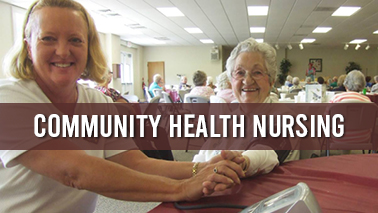
Community Health Nursing is a specialty focused on public health and the well-being of the community as a whole. It involves the application of nursing and public health principles to improve and maintain the health of populations, particularly those who are at risk and underserved. Community health nurses work in various settings, including homes, schools, workplaces, and local government health departments, to provide preventive care, education, and intervention.
Key Roles and Responsibilities
Health Education and Promotion: Educating individuals and communities about healthy lifestyles, disease prevention, and management.
Disease Prevention: Implementing vaccination programs, health screenings, and preventive care initiatives.
Case Management: Coordinating care for individuals with chronic conditions to improve health outcomes and reduce healthcare costs.
Advocacy: Advocating for policies and programs that improve public health.
Research: Conducting research to identify health trends, risk factors, and effective interventions.
Future Research Perspectives
Health Disparities: Investigating the root causes of health disparities and developing strategies to address social determinants of health.
Chronic Disease Management: Researching effective community-based interventions for managing chronic diseases such as diabetes, hypertension, and asthma.
Mental Health: Exploring community-based approaches to improve mental health services and reduce stigma.
Epidemiology: Studying the spread of diseases within communities and developing prevention strategies.
Global Health: Examining health issues that affect communities worldwide and developing global health initiatives.
Cutting-Edge Technologies and Innovations
Community-Based Participatory Research (CBPR): Engaging community members as partners in the research process to ensure that interventions are culturally appropriate and effective.
Integrated Care Models: Creating models that integrate physical, mental, and social health services to provide holistic care.
Health Coaching and Peer Support: Implementing health coaching and peer support programs to encourage healthy behaviors and provide social support.
School-Based Health Programs: Expanding health services and education within schools to promote child and adolescent health.
Environmental Health Initiatives: Addressing environmental factors that impact health, such as air and water quality, housing conditions, and access to green spaces.
Tags
Canada Nursing Conferences
Japan Nursing Conferences 2024
Asian Nursing Conferences 2025
Nursing Conferences USA
Spain Nursing Conferences 2024
Nursing Conferences 2025 Brazil
Global Nursing Conferences
World Nursing Conferences
Nursing Education Conferences 2024 Asia
Advanced Nursing Practice Conferences
Nursing Conferences 2025 Australia
Japan Nursing Conferences
Nursing Care Conferences
Canada Nursing Conferences 2025
Nursing Conferences 2025

Family Nursing is a specialty area within nursing that focuses on providing care to individuals and families across the lifespan. This field emphasizes the family as a unit of care, recognizing that family dynamics, relationships, and health are interconnected. Family nurses work in a variety of settings, including hospitals, clinics, community health centers, and home health care, to promote health, prevent illness, and manage chronic conditions.
Key Roles and Responsibilities
Health Assessment and Screening: Conducting comprehensive health assessments and screenings for family members.
Health Promotion and Education: Educating families about healthy lifestyles, disease prevention, and health maintenance.
Chronic Disease Management: Supporting families in managing chronic illnesses and conditions through education and coordinated care.
Crisis Intervention: Providing support and interventions during family crises such as acute illness, loss, or trauma.
Advocacy: Advocating for family-centered care and policies that support family health and well-being.
Future Research Perspectives
Family Dynamics and Health Outcomes: Studying how family relationships and dynamics impact health outcomes and developing interventions to support healthy family functioning.
Chronic Illness in Families: Researching the effects of chronic illness on families and identifying strategies to support family caregivers.
Mental Health: Exploring family-based approaches to mental health care, including the impact of mental illness on family members and the role of family support in recovery.
Health Disparities: Investigating how social determinants of health affect families and developing interventions to address health inequities.
Intergenerational Health: Studying health patterns and behaviors across generations to inform preventive care strategies.
Cutting-Edge Technologies and Innovations
Wearable Health Devices: Utilizing wearable technology to monitor health metrics for family members, particularly those with chronic conditions.
Mobile Health (mHealth) Apps: Developing apps that provide health information, reminders, and support for families managing health conditions.
Genomic Medicine: Applying genetic and genomic information to tailor preventive care and treatments to individual family members.
Electronic Health Records (EHR): Integrating family health information into EHRs to improve coordination and continuity of care.
Artificial Intelligence (AI) and Machine Learning: Using AI to analyze health data, predict health risks, and personalize care plans for families.
Tags
Canada Nursing Conferences
Asian Nursing Conferences 2025
Nursing Conferences 2025 Australia
Canada Nursing Conferences 2025
Nursing Conferences 2025 USA
Nursing Conferences 2025 Brazil
Advanced Nursing Practice Conferences 2025
Nursing Conferences Europe
Germany Nursing Conferences
London Nursing Conferences
Nursing Conferences 2024
Nursing Conferences USA
Global Nursing Conferences
Japan Nursing Conferences 2024
Nursing Education Conferences
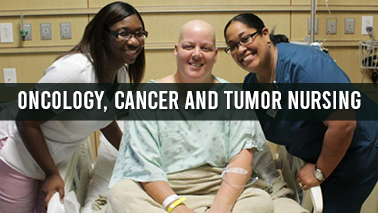
Cancer Nursing, also known as Oncology Nursing, is a specialized field focused on providing care to patients with cancer. Oncology nurses play a crucial role in the prevention, detection, treatment, and palliative care of cancer patients. They work in various settings, including hospitals, outpatient clinics, cancer treatment centers, and home care, offering support and education to patients and their families throughout the cancer journey.
Key Roles and Responsibilities
Patient Assessment: Conducting thorough assessments to monitor the physical and emotional status of cancer patients.
Treatment Administration: Administering chemotherapy, radiation, immunotherapy, and other cancer treatments.
Symptom Management: Managing cancer-related symptoms and treatment side effects, such as pain, nausea, fatigue, and anxiety.
Patient Education: Educating patients and families about the disease, treatment options, side effects, and self-care strategies.
Supportive Care: Providing emotional support, counseling, and palliative care to improve quality of life for patients and their families.
Coordination of Care: Coordinating with multidisciplinary teams to ensure comprehensive care and continuity of treatment.
Advocacy: Advocating for patients' needs and rights, ensuring they receive appropriate care and support.
Future Research Perspectives
Precision Medicine: Investigating personalized treatment approaches based on genetic, environmental, and lifestyle factors to improve outcomes.
Immunotherapy: Researching new immunotherapy treatments and their long-term effects on different types of cancer.
Cancer Prevention: Exploring effective strategies for cancer prevention, early detection, and risk reduction.
Psychosocial Support: Studying the impact of psychosocial interventions on the mental health and well-being of cancer patients and their families.
Survivorship Care: Investigating the long-term needs of cancer survivors, including physical, emotional, and social aspects.
Palliative Care: Enhancing palliative care practices to better manage symptoms and improve the quality of life for terminally ill patients.
Cutting-Edge Technologies and Innovations
Genomic Testing: Utilizing genomic testing to identify genetic mutations and tailor targeted therapies for individual patients.
Robotic Surgery: Advancing robotic-assisted surgery to enhance precision and reduce recovery times for cancer patients.
3D Printing: Developing 3D-printed models for surgical planning and personalized prosthetics for cancer patients.
Nanotechnology: Exploring nanotechnology for targeted drug delivery and minimally invasive treatment options.
Tags
Nursing Conferences 2025 Brazil
Nursing Care Conferences
Nursing Conferences 2024 UK
Nursing Education Conferences 2024 Asia
Global Nursing Conferences
Germany Nursing Conferences
Nursing Conferences 2025 Australia
Japan Nursing Conferences 2024
Nursing Conferences Europe
Advanced Nursing Practice Conferences 2025
World Nursing Conferences
London Nursing Conferences
Japan Nursing Conferences
Nursing Conferences USA
Advanced Nursing Practice Conferences

Midwifery is a health profession focused on providing care to women during pregnancy, childbirth, and the postpartum period. Midwives offer a range of services, including prenatal care, labor and delivery support, postpartum care, and family planning. They emphasize a holistic approach to care, prioritizing the physical, emotional, and social well-being of the mother and child.
Key Roles and Responsibilities
Prenatal Care: Conducting regular health assessments, monitoring fetal development, and providing education on nutrition, exercise, and childbirth preparation.
Labor and Delivery: Supporting women during labor, managing normal deliveries, and recognizing complications that require medical intervention.
Postpartum Care: Providing care and support to mothers and newborns during the postpartum period, including breastfeeding support and maternal health monitoring.
Family Planning and Reproductive Health: Offering education and services related to contraception, fertility, and reproductive health.
Health Promotion and Education: Educating women and families about healthy lifestyles, parenting, and infant care.
Future Research Perspectives
Maternal and Infant Health Outcomes: Investigating factors that influence maternal and infant health outcomes, with a focus on reducing disparities and improving care.
Perinatal Mental Health: Exploring the impact of mental health on pregnancy and postpartum periods, and developing effective interventions for perinatal depression and anxiety.
Birth Practices and Interventions: Studying the effectiveness and safety of various birth practices and interventions, such as water births, home births, and the use of birthing centers.
Nutrition and Lifestyle: Researching the impact of maternal nutrition, physical activity, and lifestyle factors on pregnancy outcomes and long-term health of the child.
Midwifery Education and Training: Evaluating the effectiveness of midwifery education programs and identifying best practices for training midwives.
Cutting-Edge Technologies and Innovations
Integrative Care Models: Developing models that integrate midwifery care with obstetric and pediatric services to provide comprehensive care for mother and child.
Community-Based Midwifery: Expanding midwifery services in community settings to increase access to care for underserved populations.
Continuity of Care: Implementing continuity of care models where the same midwife provides care throughout the pregnancy, birth, and postpartum period.
Collaborative Care Teams: Forming multidisciplinary teams that include midwives, obstetricians, pediatricians, and mental health professionals to provide holistic care.
Birth Centers and Home Births: Promoting the use of birth centers and supporting safe home birth practices for low-risk pregnancies.
Culturally Competent Care: Providing culturally sensitive care and addressing the unique needs of diverse populations.
Patient Education and Empowerment: Enhancing education and empowerment programs to support informed decision-making and active participation in childbirth.
Tags
Canada Nursing Conferences
London Nursing Conferences
Japan Nursing Conferences 2024
Advanced Nursing Practice Conferences
Spain Nursing Conferences 2024
World Nursing Conferences
Nursing Conferences USA
Nursing Conferences 2025 USA
Advanced Nursing Practice Conferences 2025
Nursing Education Conferences 2024 Asia
Nursing Conferences 2024 UK
Nursing Conferences 2025 Asia
Germany Nursing Conferences
Nursing Conferences 2025
Nursing Conferences 2024
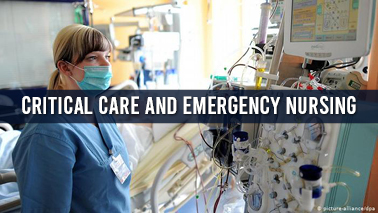
Critical Care Nursing and Emergency Nursing are specialized fields focused on the care of patients with acute, life-threatening illnesses or injuries. Critical care nurses work in intensive care units (ICUs), providing continuous monitoring and treatment for patients with severe conditions. Emergency nurses work in emergency departments (EDs), providing rapid assessment and treatment for patients with a wide range of urgent health issues.
Emergency Nursing
Triage: Rapidly assessing and prioritizing patients based on the severity of their conditions.
Emergency Interventions: Providing immediate treatment for trauma, cardiac events, strokes, and other emergencies.
Stabilization: Stabilizing patients for transfer to appropriate levels of care, such as ICU or surgical units.
Patient Education: Educating patients and families about follow-up care and prevention of future emergencies.
Coordination of Care: Collaborating with emergency medical services (EMS), physicians, and other healthcare providers.
Future Research Perspectives
Sepsis Management: Investigating early detection methods, treatment protocols, and outcomes for patients with sepsis.
Trauma Care: Studying the effectiveness of trauma care practices, including pre-hospital care and advanced trauma life support.
Neurological Emergencies: Researching optimal management strategies for stroke, traumatic brain injury, and other neurological emergencies.
Patient Safety: Exploring strategies to reduce medical errors and improve patient safety in critical and emergency care settings.
Resuscitation Techniques: Evaluating the latest resuscitation techniques and technologies to improve survival rates.
Psychological Impact: Studying the psychological impact of critical and emergency care on patients, families, and healthcare providers.
Cutting-Edge Technologies and Innovations
Tele-ICU and Tele-Emergency: Implementing telehealth technology to provide remote monitoring, consultation, and support in critical and emergency care settings.
Wearable Sensors: Utilizing wearable sensors to continuously monitor vital signs and detect early signs of deterioration.
Portable Ultrasound Devices: Using handheld ultrasound devices for rapid, bedside diagnostics in emergency situations.
Artificial Intelligence (AI) and Machine Learning: Leveraging AI to predict patient outcomes, optimize care protocols, and enhance decision-making.
Robotics: Integrating robotic systems for tasks such as medication delivery, patient transport, and even surgical assistance.
Enhanced Imaging Technologies: Advancing imaging techniques, such as point-of-care CT and MRI, to improve diagnostics and treatment planning.
Automated Medication Dispensing: Implementing automated systems for precise and timely medication administration.
Tags
Global Nursing Conferences
Germany Nursing Conferences
Nursing Education Conferences
Canada Nursing Conferences 2025
Canada Nursing Conferences
Nursing Conferences 2024
Spain Nursing Conferences 2024
Nursing Conferences Europe
World Nursing Conferences
Japan Nursing Conferences 2024
Nursing Care Conferences
Nursing Conferences USA
Japan Nursing Conferences
Nursing Conferences 2025
Nursing Education Conferences 2024 Asia

Dental nurses play a crucial role in supporting dentists in the delivery of dental care. Their duties include preparing treatment rooms, sterilizing instruments, assisting during dental procedures, maintaining patient records, and providing patient care and education. Dental nurses must have a solid understanding of dental procedures, hygiene, and patient management.
Future Research Perspectives
Oral Health in Aging Populations: Investigating effective care strategies for the elderly, who are more susceptible to oral health issues.
Integration of Oral and General Health: Exploring the connections between oral health and systemic conditions like diabetes, cardiovascular diseases, and respiratory illnesses.
Dental Anxiety and Pain Management: Studying methods to alleviate dental anxiety and improve pain management.
Preventive Care: Investigating new materials and methods for preventive care, including fluoride treatments, sealants, and patient education programs.
Workforce and Education: Assessing the role of dental nurses in expanding access to dental care, especially in underserved areas.
Cutting-Edge Technologies and Innovations
Digital Dentistry: Computer-aided design and manufacturing for precise fabrication of dental restorations.
Tele dentistry: Expanding access to dental care through remote consultations, diagnostics, and patient monitoring.
Laser Dentistry: Utilizing lasers for various dental procedures, including cavity detection, gum reshaping, and teeth whitening.
3D Printing: Creating dental models, surgical guides, and even custom prosthetics with high accuracy and efficiency.
Artificial Intelligence (AI): Using AI for diagnostic purposes, such as interpreting radiographs and detecting early signs of dental diseases.
Regenerative Dentistry: Research on stem cells and tissue engineering to regenerate dental tissues and develop bioengineered teeth.
Smart Toothbrushes: Incorporating sensors and connectivity to monitor brushing habits and provide real-time feedback to users.
Advanced Imaging Technologies: Utilizing cone-beam computed tomography (CBCT) for detailed 3D imaging of dental structures.
Tags
Nursing Conferences 2025 Brazil
London Nursing Conferences
Nursing Conferences Europe
Japan Nursing Conferences 2024
Nursing Conferences 2025 Australia
Advanced Nursing Practice Conferences 2025
Nursing Conferences 2025 USA
Nursing Conferences 2024 UK
Global Nursing Conferences
Asian Nursing Conferences 2025
World Nursing Conferences
Spain Nursing Conferences 2024
Japan Nursing Conferences
Nursing Conferences 2024
Nursing Conferences 2025 Asia

Healthcare encompasses a broad range of services aimed at promoting, maintaining, and restoring health. It involves various professionals, including doctors, nurses, therapists, and technicians, working in diverse settings such as hospitals, clinics, and community health centers. Healthcare aims to prevent and treat diseases, improve quality of life, and extend life expectancy.
Future Research Perspectives in Healthcare
Precision Medicine: Tailoring medical treatments to individual genetic profiles.
Chronic Disease Management: Developing new strategies to manage and prevent chronic diseases like diabetes, heart disease, and cancer.
Mental Health: Exploring the biological, psychological, and social factors contributing to mental health disorders.
Infectious Disease Control: Researching vaccines, antiviral drugs, and other interventions to combat emerging infectious diseases.
Health Equity: Investigating disparities in healthcare access and outcomes among different populations.
Aging and Geriatric Care: Innovations in elder care, including assistive technologies and home-based care models.
Health Systems and Policy: Research on healthcare financing, insurance models, and the impact of policy changes on health outcomes.
Cutting-Edge Technologies and Innovations
Telemedicine and Telehealth: Providing remote consultations, diagnostics, and treatment through digital platforms.
Artificial Intelligence (AI) and Machine Learning: AI-driven diagnostics, predictive analytics, and personalized treatment plans.
Wearable Health Devices: Integrating with health apps to provide insights and promote healthy behaviors.
Robotics and Automation: Automation in pharmacy and laboratory settings to improve accuracy and efficiency.
Genomics and Gene Editing: CRISPR and other gene-editing technologies for treating genetic disorders.
Regenerative Medicine: Stem cell therapies and tissue engineering to repair or replace damaged tissues and organs.
Digital Health Records and Blockchain: Enhancing electronic health records (EHRs) for better data sharing and patient care coordination.
Immunotherapy: Research on new immunotherapy drugs and personalized cancer vaccines.
Tags
Canada Nursing Conferences
Canada Nursing Conferences 2025
Spain Nursing Conferences 2024
Nursing Education Conferences 2024 Asia
Asian Nursing Conferences 2025
Nursing Conferences 2025 USA
Nursing Conferences 2025
Nursing Conferences 2025 Asia
Japan Nursing Conferences 2024
London Nursing Conferences
Nursing Conferences 2025 Brazil
Nursing Care Conferences
Japan Nursing Conferences
World Nursing Conferences
Nursing Conferences Europe

Cardiac nursing involves caring for patients with various heart conditions, such as coronary artery disease, heart failure, myocardial infarction (heart attack), and arrhythmias. Cardiac nurses work in a range of settings, including hospitals, cardiac care units, outpatient clinics, and rehabilitation centers. Their responsibilities include patient assessment, monitoring, education, and the implementation of treatment plans.
Future Research Perspectives in Cardiac Nursing
Cardiovascular Disease Prevention: Research on genetic and environmental risk factors for cardiovascular diseases.
Heart Failure Management: Studying the impact of telemonitoring and remote patient management on outcomes.
Cardiac Rehabilitation: Research on tools and technologies that empower patients to manage their conditions.
Psychosocial Aspects of Cardiac Care: Research on interventions to address anxiety, depression, and stress in cardiac patients.
Innovations in Cardiac Surgery and Interventions: Investigating new interventional procedures and devices for treating heart conditions.
Cutting-Edge Technologies and Innovations
Wearable Health Monitors: Devices that continuously monitor heart rate, rhythm, and other vital signs.
Artificial Intelligence (AI) and Machine Learning: Machine learning algorithms to personalize treatment plans and optimize patient outcomes.
Advanced Imaging Techniques: Enhanced diagnostic accuracy and detailed visualization of cardiac structures.
3D Printing: Developing custom implants and devices for cardiac procedures.
Regenerative Medicine and Stem Cell Therapy: Potential for treating heart failure and myocardial infarction with regenerative approaches.
Genomics and Personalized Medicine: Genetic testing to identify predispositions to cardiovascular diseases.
Innovative Medications and Therapies: Investigating the efficacy of novel therapies like gene therapy and peptide-based treatments.
Tags
Nursing Education Conferences 2024 Asia
Nursing Care Conferences
Spain Nursing Conferences 2024
Nursing Conferences 2025 Asia
Advanced Nursing Practice Conferences
Advanced Nursing Practice Conferences 2025
Nursing Conferences Europe
Japan Nursing Conferences
Nursing Conferences 2025
Nursing Conferences 2025 Australia
London Nursing Conferences
Nursing Conferences USA
Canada Nursing Conferences
Nursing Conferences 2025 Brazil
World Nursing Conferences

Adult Health Nursing focuses on the care of individuals aged 18 and older, addressing a wide range of health issues from acute and chronic illnesses to health promotion and disease prevention. Adult health nurses work in various settings, including hospitals, outpatient clinics, long-term care facilities, and community health centers. They play a critical role in managing complex health conditions, providing patient education, and promoting healthy lifestyles.
Future Research Perspectives
Chronic Disease Management: Developing innovative strategies for managing chronic conditions such as diabetes, hypertension, and arthritis.
Health Promotion and Disease Prevention: Investigating effective methods for promoting healthy behaviors and preventing diseases.
Aging and Geriatric Care: Exploring the unique needs of older adults, including the management of multiple comorbidities.
Mental Health and Well-being: Research on the impact of mental health on physical health outcomes in adults.
Palliative and End-of-Life Care: Investigating best practices for providing palliative care and managing symptoms in adults with life-limiting illnesses.
Health Disparities: Examining the factors contributing to health disparities among different populations.
Cutting-Edge Technologies and Innovations
Telehealth and Telemedicine: Expanding access to care, especially for patients in rural and underserved areas.
Wearable Health Devices: Monitoring vital signs, physical activity, and other health metrics in real-time.
Artificial Intelligence (AI) and Machine Learning: Personalized treatment plans based on data analytics and machine learning algorithms.
Mobile Health (mHealth) Applications: Apps for managing chronic conditions, medication adherence, and lifestyle changes.
Advanced Imaging and Diagnostic Technologies: High-resolution imaging modalities for early detection and monitoring of diseases.
Genomics and Personalized Medicine: Research on the role of genetics in the prevention and management of adult diseases.
Robotics and Minimally Invasive Surgery: Robotic-assisted procedures for greater precision and shorter recovery times.
Regenerative Medicine and Stem Cell Therapy: Research on stem cell therapies to repair and regenerate damaged tissues.
Digital Health Records and Data Integration: Enhancing electronic health records (EHRs) for better care coordination and decision-making.
Tags
Asian Nursing Conferences 2025
Canada Nursing Conferences 2025
Nursing Conferences 2025 Asia
Japan Nursing Conferences
Japan Nursing Conferences 2024
Advanced Nursing Practice Conferences 2025
Nursing Conferences 2024 UK
Nursing Care Conferences
Canada Nursing Conferences
Nursing Education Conferences
Nursing Conferences 2025 USA
Spain Nursing Conferences 2024
Advanced Nursing Practice Conferences
Nursing Conferences Europe
Nursing Conferences 2025 Brazil
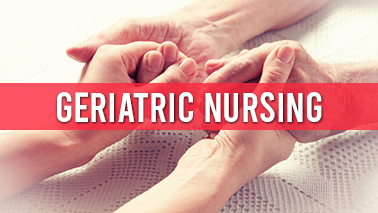
Geriatric nursing focuses on the healthcare needs of older adults, addressing the complex health issues that arise with aging. This specialty aims to promote health, prevent and treat diseases, and maintain the functional independence and quality of life of elderly patients. Geriatric nurses work in various settings, including hospitals, nursing homes, home health care, and community health centers.
Future Research Perspectives
Aging and Chronic Disease Management: Investigating effective management strategies for chronic diseases common in older adults, such as diabetes, hypertension, and arthritis.
Cognitive Health: Studying the impact of lifestyle factors, medications, and therapies on cognitive health.
Palliative and End-of-Life Care: Investigating the preferences and needs of older adults and their families regarding end-of-life care.
Fall Prevention and Mobility: Research on the effectiveness of exercise programs, assistive devices, and environmental modifications.
Mental Health and Emotional Well-being: Studying the prevalence and impact of mental health issues like depression and anxiety in older adults.
Nutritional Health: Investigating the nutritional needs of older adults and the impact of diet on health and aging.
Social Determinants of Health: Examining the impact of social factors such as socioeconomic status, social support, and living conditions on the health of older adults.
Cutting-Edge Technologies and Innovations
Person-Centered Care Models: Developing individualized care plans that address the unique needs of each older adult.
Health Coaching and Support: Training nurses as health coaches to support older adults in making lifestyle changes.
Community Health Initiatives: Implementing community-based programs to address social determinants of health.
Interprofessional Collaboration: Enhancing collaboration among healthcare providers to improve care coordination and outcomes.
Tags
Asian Nursing Conferences 2025
Japan Nursing Conferences 2024
Global Nursing Conferences
Japan Nursing Conferences
Nursing Conferences 2024
Nursing Conferences 2025 Australia
Advanced Nursing Practice Conferences
Nursing Conferences 2025
Nursing Conferences 2025 Asia
Nursing Conferences USA
Nursing Education Conferences
Nursing Education Conferences 2024 Asia
Canada Nursing Conferences
Nursing Conferences 2025 Brazil
Nursing Care Conferences

Military and combat nursing is a specialized field that involves providing medical care to military personnel, veterans, and their families. This includes emergency treatment in combat zones, rehabilitation for injuries, and long-term care for chronic conditions resulting from military service. Military nurses must be prepared to work in challenging and often hazardous environments, requiring resilience, adaptability, and a strong foundation in trauma and emergency care.
Future Research Perspectives
Trauma Care and Management: Research is focused on improving the protocols and techniques for managing combat-related injuries. This includes better hemorrhage control, advanced wound care, and the development of new surgical methods to improve outcomes in the field.
Mental Health Support: With a growing recognition of the psychological impact of combat, research is increasingly directed towards understanding and treating PTSD, depression, and other mental health issues among military personnel. This includes the development of preventive strategies, early intervention programs, and long-term support systems.
Rehabilitation Techniques: Studies are exploring advanced rehabilitation techniques to enhance recovery for soldiers with physical injuries, including prosthetics, physical therapy, and novel therapeutic approaches that incorporate technology and virtual reality.
Telemedicine: The use of telemedicine in combat zones is a key area of research, aiming to provide remote diagnosis and treatment support, thus enhancing the capabilities of field medics and improving the timeliness and quality of care.
Preventive Medicine: Research is also focused on preventive measures, such as vaccines and strategies to prevent infectious diseases, which are critical in maintaining the health of troops in various deployment environments.
Cutting-Edge Technologies and Innovations
Regenerative Medicine: Innovations in tissue engineering and regenerative medicine to repair and regenerate damaged tissues and organs, potentially reducing the long-term impact of injuries sustained in combat.
Simulation Training: Advanced simulation technologies, including virtual and augmented reality, to train military nurses in realistic, high-pressure scenarios, improving their preparedness for actual combat situations.
AI and Machine Learning: The use of AI and machine learning to analyze medical data, predict health issues, and optimize treatment protocols, thus enhancing the overall efficiency and effectiveness of military medical care.
Advanced Prosthetics: The development of highly functional prosthetic limbs that use robotics and neural integration to provide greater mobility and dexterity for injured soldiers.
Portable Diagnostic Equipment: Compact and rugged diagnostic tools that can be easily transported and used in field conditions to quickly assess and treat injuries.
Tags
Canada Nursing Conferences
Nursing Conferences USA
Nursing Conferences 2024 UK
Germany Nursing Conferences
Nursing Education Conferences
World Nursing Conferences
Nursing Education Conferences 2024 Asia
Japan Nursing Conferences
Nursing Care Conferences
Canada Nursing Conferences 2025
Global Nursing Conferences
Advanced Nursing Practice Conferences
Asian Nursing Conferences 2025
Nursing Conferences Europe
Nursing Conferences 2025 Brazil

Forensic and legal nursing is a specialized field that combines nursing practice with the legal and criminal justice system. Forensic nurses provide care to victims and perpetrators of trauma or crime, collect evidence, and offer expert testimony in court. Their work often involves cases of sexual assault, domestic violence, child and elder abuse, and other forms of intentional injury.
Roles and Responsibilities
Clinical Care: Providing immediate and long-term medical care to victims of violence and abuse.
Evidence Collection: Collecting, preserving, and documenting forensic evidence such as bodily fluids, injuries, and clothing.
Expert Testimony: Acting as expert witnesses in legal proceedings to provide testimony on medical findings.
Collaboration: Working with law enforcement, legal professionals, and social services to support investigations and legal cases.
Education and Advocacy: Educating patients about their rights, providing resources, and advocating for victim protection and justice.
Future Research Perspectives
Improved Evidence Collection: Research aimed at developing new methods and protocols for collecting and preserving forensic evidence to ensure it remains intact and admissible in court.
Victim Support and Recovery: Studies focusing on the psychological and physical recovery processes of victims, including the effectiveness of different therapeutic interventions.
Perpetrator Rehabilitation: Research on rehabilitation programs for perpetrators of violence and abuse, exploring methods to reduce recidivism.
Interdisciplinary Collaboration: Examining the best practices for collaboration between forensic nurses, law enforcement, and legal professionals to improve case outcomes and victim support.
Impact of Trauma: Investigating the long-term impact of trauma on victims, including mental health, physical health, and social outcomes, to better inform care strategies.
Legal and Ethical Issues: Exploring the ethical and legal challenges faced by forensic nurses, including issues of consent, confidentiality, and mandatory reporting.
Cutting-Edge Technologies and Innovations
Digital Forensic Tools: Advanced digital tools for documenting and analyzing evidence, such as high-resolution cameras, 3D imaging, and specialized software for injury analysis.
DNA Analysis: Innovations in DNA technology to improve the speed and accuracy of forensic testing, aiding in the identification of perpetrators and victims.
Wearable Technology: Devices that can monitor and record physiological data, potentially serving as evidence in cases of abuse or assault.
Mobile Forensic Units: Equipped vehicles that can respond to crime scenes and provide on-site forensic nursing services, ensuring timely and effective evidence collection.
Training Simulations: Virtual and augmented reality simulations for training forensic nurses in evidence collection, victim care, and courtroom testimony, providing a realistic and immersive learning experience.
AI and Machine Learning: Implementing AI and machine learning to analyze forensic data, identify patterns, and support decision-making in investigations and legal cases.
Tags
Advanced Nursing Practice Conferences
Asian Nursing Conferences 2025
Global Nursing Conferences
Nursing Education Conferences
Japan Nursing Conferences 2024
Nursing Conferences 2025 Australia
Nursing Conferences 2025 Asia
Nursing Conferences 2024
Advanced Nursing Practice Conferences 2025
Nursing Care Conferences
Spain Nursing Conferences 2024
Nursing Conferences Europe
Nursing Conferences 2025
Japan Nursing Conferences
Nursing Education Conferences 2024 Asia

Men in nursing have historically been underrepresented, but their presence in the profession is steadily increasing. They bring diverse perspectives and skills to the nursing field, enhancing patient care and contributing to a more inclusive healthcare environment. Addressing the barriers and stereotypes that men face in nursing is essential to fostering a diverse and effective workforce.
Current Trends
Increasing Enrollment: More men are enrolling in nursing programs, motivated by the profession’s job stability, opportunities for advancement, and the ability to make a positive impact on patient care.
Diverse Roles: Men in nursing are found in various specialties, including emergency, critical care, anesthesiology, and leadership positions, reflecting the broad scope of opportunities within the field.
Advocacy and Support: Organizations and initiatives are emerging to support men in nursing, offering networking opportunities, mentorship, and resources to address unique challenges they may face.
Future Research Perspectives
Gender Diversity and Patient Outcomes: Research exploring how gender diversity within nursing teams impacts patient care and outcomes, with a focus on identifying any specific benefits or challenges associated with having more men in the profession.
Barriers to Entry and Retention: Studies aimed at understanding the barriers that men face in entering and staying in the nursing profession, including societal stereotypes, discrimination, and workplace dynamics, to develop strategies to overcome these obstacles.
Career Advancement: Research on the career trajectories of men in nursing, including the factors that influence their progression into advanced practice, leadership, and specialized roles.
Educational Approaches: Investigating the effectiveness of different educational approaches and curricula in attracting and retaining men in nursing programs, as well as the impact of mentorship and support systems.
Workplace Environment: Examining the workplace environment and culture in nursing, focusing on how it affects men and their experiences, including job satisfaction, burnout, and professional relationships.
Cutting-Edge Technologies and Innovations
Simulation Training: Advanced simulation technologies, including virtual and augmented reality, to provide immersive and realistic training experiences for nursing students, enhancing their skills and preparedness.
Wearable Health Technology: Integration of wearable devices that monitor patient health metrics in real-time, enabling nurses to provide more proactive and personalized care.
Mobile Health Apps: Development of mobile health applications that support nursing practice, from patient education to clinical documentation and communication, enhancing efficiency and patient engagement.
Robotics: The use of robotics in healthcare to assist with tasks such as medication delivery, patient mobility, and even performing certain medical procedures, potentially reducing physical strain and improving safety.
Interprofessional Collaboration Tools: Technologies that facilitate better communication and collaboration among healthcare professionals, ensuring that nurses can work more effectively as part of a multidisciplinary team.
Virtual Reality for Education: Virtual reality tools for continuing education and professional development, allowing nurses to stay up-to-date with the latest practices and innovations in a flexible and engaging manner.
Tags
Japan Nursing Conferences 2024
Nursing Conferences 2024 UK
Germany Nursing Conferences
Spain Nursing Conferences 2024
Global Nursing Conferences
Canada Nursing Conferences
Advanced Nursing Practice Conferences
Nursing Conferences USA
Nursing Conferences Europe
Canada Nursing Conferences 2025
Nursing Conferences 2025
Japan Nursing Conferences
Nursing Conferences 2025 Asia
Nursing Conferences 2025 Brazil
London Nursing Conferences

Ambulatory care nursing involves providing care to patients in outpatient settings, such as clinics, medical offices, and day surgery centers. These nurses manage a wide range of health issues, from preventive care and chronic disease management to minor surgical procedures and post-operative care. Ambulatory care nurses play a crucial role in patient education, coordination of care, and ensuring continuity between different healthcare services.
Roles and Responsibilities
Patient Assessment: Conducting initial assessments and ongoing evaluations of patients’ health status.
Care Coordination: Coordinating care with other healthcare providers to ensure comprehensive and continuous care.
Patient Education: Educating patients and their families about managing health conditions, medications, and lifestyle changes.
Clinical Procedures: Performing or assisting with minor surgical procedures, wound care, and other clinical interventions.
Chronic Disease Management: Monitoring and supporting patients with chronic illnesses to manage their conditions effectively.
Future Research Perspectives
Chronic Disease Management: Research focusing on effective strategies for managing chronic diseases in ambulatory settings, including the development of personalized care plans and interventions that can be implemented outside of hospital settings.
Patient Engagement and Education: Studies on methods to enhance patient engagement and education, exploring the use of digital tools, apps, and interactive programs to improve health literacy and self-management skills.
Care Coordination Models: Investigating new models of care coordination that improve communication and collaboration among healthcare providers, reduce hospital readmissions, and enhance patient outcomes.
Care Strategies: Exploring innovative preventive care strategies to reduce the incidence of chronic diseases and improve overall population health.
Cutting-Edge Technologies and Innovations
Mobile Health Applications: Development of apps that help patients track their health metrics, manage medications, schedule appointments, and communicate with their healthcare providers.
Wearable Health Devices: Utilization of wearable devices to monitor vital signs, activity levels, and other health indicators, providing real-time data to both patients and healthcare providers.
Electronic Health Records (EHRs): Advanced EHR systems that facilitate seamless information sharing among healthcare providers, improve care coordination, and enhance patient safety.
Artificial Intelligence (AI): Implementing AI to analyze patient data, predict health trends, and support clinical decision-making, thereby personalizing and improving patient care.
Patient Portals: Secure online portals that give patients access to their health information, lab results, and appointment scheduling, promoting active participation in their own care.
Remote Monitoring Systems: Technologies that allow continuous monitoring of patients’ health status at home, enabling early detection of issues and timely interventions.
Chronic Care Management Platforms: Integrated platforms that provide comprehensive management tools for chronic diseases, including medication management, symptom tracking, and telehealth services.
Tags
London Nursing Conferences
Nursing Conferences USA
Germany Nursing Conferences
Spain Nursing Conferences 2024
Nursing Conferences 2025 Brazil
Nursing Education Conferences
Asian Nursing Conferences 2025
Nursing Conferences 2025
Nursing Conferences 2025 Australia
Nursing Conferences 2025 Asia
Canada Nursing Conferences 2025
Nursing Education Conferences 2024 Asia
Canada Nursing Conferences
Nursing Conferences 2024

Chronic disease management involves the ongoing care and support of individuals with chronic health conditions such as diabetes, heart disease, chronic respiratory diseases, and cancer. The goal is to improve the quality of life, minimize symptoms, and prevent complications through coordinated care, patient education, and lifestyle modifications.
Key Components
Patient Education: Teaching patients about their condition, treatment options, and self-care practices to empower them to manage their health.
Medication Management: Ensuring patients take their medications correctly and understand their importance.
Regular Monitoring: Continuous monitoring of health indicators to detect changes in the patient’s condition promptly.
Lifestyle Modifications: Encouraging and supporting healthy lifestyle choices, including diet, exercise, and smoking cessation.
Multidisciplinary Care: Collaboration among healthcare providers, including doctors, nurses, dietitians, and social workers, to provide comprehensive care.
Future Research Perspectives
Personalized Medicine: Research into genetic, environmental, and lifestyle factors to develop personalized treatment plans tailored to individual patients’ needs.
Behavioral Interventions: Studies on the effectiveness of behavioral interventions, such as motivational interviewing and cognitive-behavioral therapy, in improving adherence to treatment and lifestyle changes.
Integrated Care Models: Investigating integrated care models that combine primary care, specialty care, and community resources to provide holistic management of chronic diseases.
Patient-Centered Care: Research focused on patient-centered care approaches that prioritize patient preferences, needs, and values in decision-making.
Digital Health Interventions: Exploring the impact of digital health interventions, such as mobile apps and telehealth, on patient engagement, self-management, and health outcomes.
Health Disparities: Addressing health disparities in chronic disease management by studying the impact of social determinants of health and developing targeted interventions for underserved populations.
Cutting-Edge Technologies and Innovations
Mobile Health Applications: Apps that track health metrics, provide medication reminders, and offer educational resources to support self-management.
Wearable Devices: Wearables that monitor vital signs, physical activity, sleep patterns, and other health indicators in real-time, providing valuable data for both patients and healthcare providers.
Artificial Intelligence (AI): AI algorithms that analyze patient data to predict health trends, identify risks, and support clinical decision-making.
Electronic Health Records (EHRs): Advanced EHR systems that integrate patient data from various sources, enabling comprehensive and coordinated care.
Remote Patient Monitoring: Technologies that allow continuous monitoring of chronic conditions at home, enabling early intervention and reducing hospitalizations.
Virtual Health Coaches: AI-powered virtual health coaches that provide personalized advice, motivation, and support for lifestyle changes and disease management.
Genomic Medicine: Utilizing genomic information to develop personalized treatment plans and preventive strategies based on an individual’s genetic makeup.
Interactive Patient Portals: Secure portals that give patients access to their health information, educational materials, and communication tools to stay engaged in their care.
Data Analytics: Using big data and analytics to identify patterns and trends in chronic disease management, leading to more effective interventions and resource allocation.
Tags
Germany Nursing Conferences
London Nursing Conferences
Asian Nursing Conferences 2025
Nursing Education Conferences 2024 Asia
World Nursing Conferences
Spain Nursing Conferences 2024
Nursing Conferences USA
Canada Nursing Conferences 2025
Nursing Conferences 2025
Nursing Conferences 2025 Asia
Canada Nursing Conferences
Nursing Conferences 2025 Brazil
Nursing Conferences 2025 USA
Nursing Care Conferences
Japan Nursing Conferences

The Clinical Nurse Leader (CNL) is a relatively new nursing role designed to provide highly skilled bedside and clinical leadership. CNLs are advanced generalist clinicians who manage the care of patients and the outcomes of care, ensuring that patients receive high-quality and safe care.
Future Research Perspectives
Impact on Patient Outcomes: Investigating how the CNL role improves patient outcomes in different healthcare settings.
Cost-Effectiveness: Analyzing the economic impact of employing CNLs in various healthcare systems.
Role Integration: Studying the integration of CNLs into existing healthcare teams and their effect on team dynamics.
Education and Training: Exploring optimal education and training pathways for CNLs to ensure they are well-prepared for their roles.
Scope of Practice: Examining how the scope of practice for CNLs evolves with changes in healthcare needs and policies.
Technology Utilization: Researching how CNLs can leverage new technologies to enhance patient care and safety.
Cutting-Edge Technologies and Innovations
Electronic Health Records (EHRs): Advanced EHR systems that provide CNLs with real-time data to make informed clinical decisions and improve care coordination.
Predictive Analytics: Implementing predictive analytics tools to identify at-risk patients and intervene early to prevent adverse outcomes.
Mobile Health Apps: Developing and using mobile health applications to monitor patient health and communicate with healthcare teams.
Simulation Training: Employing high-fidelity simulation training to enhance the clinical skills and decision-making abilities of CNLs.
Wearable Health Devices: Integrating data from wearable health devices to monitor patient health continuously and intervene when necessary.
Artificial Intelligence (AI): Leveraging AI to assist CNLs in diagnosing conditions, planning care, and managing patient populations.
Robotics: Utilizing robotics to assist with tasks such as medication administration, patient transportation, and even performing certain clinical procedures.
Patient Engagement Tools: Using tools that enhance patient engagement and self-management, enabling patients to take an active role in their own care.
Genomics and Personalized Medicine: Incorporating genomics into patient care to provide personalized treatment plans based on genetic information.
Tags
Nursing Conferences USA
World Nursing Conferences
Asian Nursing Conferences 2025
Nursing Conferences 2025 Australia
Spain Nursing Conferences 2024
Nursing Conferences Europe
Advanced Nursing Practice Conferences 2025
Canada Nursing Conferences 2025
Japan Nursing Conferences 2024
Germany Nursing Conferences
Nursing Education Conferences 2024 Asia
Canada Nursing Conferences
Nursing Conferences 2025 USA
Nursing Conferences 2025
Nursing Education Conferences

Critical Care Nursing involves the specialized care of patients who are experiencing life-threatening conditions and require comprehensive care and constant monitoring. These nurses work in intensive care units (ICUs), emergency departments, and other high-acuity settings
Future Research Perspectives
Patient Outcomes: Investigating factors that influence patient outcomes in critical care settings, including nurse staffing ratios, nurse education levels, and teamwork.
Burnout and Well-being: Studying the impact of critical care nursing on nurse burnout, mental health, and well-being, and identifying effective interventions.
Quality Improvement: Exploring strategies for continuous quality improvement in critical care, including protocols for sepsis management, ventilator-associated pneumonia prevention, and early mobilization.
Technology Integration: Evaluating the effectiveness and impact of new technologies on patient care and nurse workflow in critical care.
Evidence-Based Practices: Developing and refining evidence-based guidelines for the management of critical conditions such as acute respiratory distress syndrome (ARDS), sepsis, and multi-organ failure.
Tele-ICU: Assessing the impact of tele-ICU services on patient outcomes, staff satisfaction, and healthcare costs.
Cutting-Edge Technologies and Innovations
Advanced Monitoring Systems: Utilizing systems that provide continuous, real-time data on a wide range of physiological parameters, allowing for early detection of changes in patient status.
Portable and Wearable Devices: Using portable and wearable devices to monitor vital signs and other critical parameters in real-time, both in the hospital and remotely.
High-Fidelity Simulation Training: Employing advanced simulation technology for training critical care nurses in complex procedures and emergency scenarios.
Robotic Assistance: Integrating robotic systems to assist with repetitive tasks, such as medication delivery and patient transport, to reduce the workload on nurses.
Enhanced Ventilator Technologies: Using advanced ventilator systems that provide more precise control of respiratory support, tailored to individual patient needs.
Augmented Reality (AR) and Virtual Reality (VR): Implementing AR and VR for training and education, allowing nurses to practice and refine their skills in a safe, simulated environment.
Genomics and Precision Medicine: Incorporating genetic information to tailor treatments and interventions to individual patients, improving outcomes in critical care.
Patient and Family Engagement Tools: Using digital platforms to keep patients and their families informed and engaged in the care process, enhancing communication and satisfaction.
Tags
Advanced Nursing Practice Conferences
Nursing Care Conferences
Advanced Nursing Practice Conferences 2025
Japan Nursing Conferences
Asian Nursing Conferences 2025
Japan Nursing Conferences 2024
Nursing Conferences USA
Global Nursing Conferences
London Nursing Conferences
Nursing Conferences 2025
Nursing Conferences Europe
Germany Nursing Conferences
Spain Nursing Conferences 2024
Nursing Conferences 2025 USA

Disaster Nursing involves providing care to individuals and communities affected by natural or human-made disasters. This specialty focuses on preparing for, responding to, and recovering from disasters, ensuring that affected populations receive the necessary medical and psychological support.
Key responsibilities
Preparedness: Developing and participating in disaster response plans and training exercises.
Response: Providing immediate care and triage during disaster events, including administering first aid, managing acute injuries, and supporting emergency medical operations.
Recovery: Assisting with long-term recovery efforts, including physical rehabilitation and mental health support.
Public Health: Addressing public health concerns such as disease prevention, sanitation, and immunizations.
Coordination: Collaborating with local, national, and international agencies to ensure an effective and coordinated disaster response.
Future Research Perspectives
Training and Education: Evaluating the effectiveness of disaster preparedness training programs for nurses and identifying best practices for education.
Mental Health: Investigating the long-term mental health impacts on both survivors and healthcare providers involved in disaster response, and developing interventions to mitigate these effects.
Resource Allocation: Studying strategies for the efficient allocation of resources during disasters, including personnel, supplies, and medical equipment.
Technology Utilization: Researching the role of emerging technologies in improving disaster response and recovery efforts.
Community Resilience: Exploring ways to enhance community resilience and preparedness for future disasters, including public education and infrastructure improvements.
Epidemiology: Analyzing the epidemiology of diseases and injuries associated with different types of disasters to improve response strategies.
Cutting-Edge Technologies and Innovations
Disaster Response Drones: Using drones for rapid assessment of disaster-affected areas, delivering medical supplies, and assisting in search and rescue operations.
Geospatial Information Systems (GIS): Leveraging GIS for mapping and analyzing disaster impact areas, planning evacuations, and coordinating response efforts.
Artificial Intelligence (AI): Applying AI to predict disaster patterns, optimize resource deployment, and manage large datasets for effective decision-making.
Simulation and Virtual Reality (VR): Using high-fidelity simulations and VR for disaster preparedness training, allowing responders to practice in realistic scenarios.
Social media and Communication Tools: Enhancing communication and information dissemination through social media platforms and specialized communication tools during disasters.
Portable Diagnostic Devices: Implementing portable diagnostic devices that can be quickly deployed to assess and monitor the health status of disaster victims.
Sustainable Energy Solutions: Integrating sustainable energy solutions, such as solar-powered medical equipment, to ensure continuous operation during prolonged disaster responses.
Tags
World Nursing Conferences
Nursing Conferences 2025 Asia
Nursing Conferences 2024 UK
Nursing Conferences USA
Advanced Nursing Practice Conferences
Japan Nursing Conferences
Asian Nursing Conferences 2025
Nursing Conferences 2025
Germany Nursing Conferences
Global Nursing Conferences
Nursing Conferences 2025 Australia

Emergency Nursing involves the care of patients who require immediate medical attention due to acute illnesses, injuries, or trauma. These nurses work in emergency departments (EDs), urgent care centers, and other emergency settings.
Future Research Perspectives
Patient Flow Optimization: Investigating strategies to improve patient flow and reduce wait times in emergency departments.
Burnout and Retention: Studying factors contributing to nurse burnout and turnover in emergency settings and identifying effective retention strategies.
Teletriage: Exploring the effectiveness of teletriage systems in improving patient outcomes and efficiency in emergency care.
Pain Management: Researching best practices for pain management in emergency settings, including non-pharmacological interventions.
Trauma Care: Investigating advanced trauma care techniques and protocols to improve survival rates and outcomes for critically injured patients.
Mental Health Emergencies: Studying approaches to better manage mental health crises in emergency departments, including integration with psychiatric services.
Disaster Response: Examining the role of emergency nurses in disaster response and developing training programs to enhance preparedness.
Cutting-Edge Technologies and Innovations
Point-of-Care Ultrasound (POCUS): Using portable ultrasound devices to quickly diagnose conditions such as internal bleeding, fractures, and organ damage at the bedside.
Telemedicine: Implementing telemedicine solutions for remote consultations and triage, especially in rural or underserved areas.
Electronic Health Records (EHRs): Utilizing advanced EHR systems that provide real-time access to patient information and improve coordination of care.
Wearable Monitoring Devices: Employing wearable devices to continuously monitor vital signs and alert healthcare providers to critical changes.
Artificial Intelligence (AI): Leveraging AI for predictive analytics to identify patients at risk of deterioration and optimize resource allocation.
Simulation Training: Using high-fidelity simulation for training emergency nurses in realistic, high-pressure scenarios.
Mobile Health Apps: Developing apps that assist in triage, provide decision support, and improve communication within emergency teams.
Robotic Process Automation (RPA): Implementing RPA to handle administrative tasks, freeing up nurses to focus on patient care.
Advanced Imaging Technologies: Utilizing advanced imaging technologies like rapid CT and MRI to quickly diagnose and treat patients with acute conditions.
Portable Diagnostic Devices: Using portable diagnostic tools for rapid testing and analysis, such as handheld blood analyzers and mobile X-ray units.
Tags
Nursing Conferences Europe
Germany Nursing Conferences
Advanced Nursing Practice Conferences
Nursing Conferences USA
World Nursing Conferences
Canada Nursing Conferences
Nursing Care Conferences
Nursing Conferences 2024
Asian Nursing Conferences 2025
Global Nursing Conferences
Canada Nursing Conferences 2025
Spain Nursing Conferences 2024
Nursing Education Conferences 2024 Asia
Japan Nursing Conferences 2024
Nursing Education Conferences

End-of-life care focuses on providing support and care to individuals who are in the final phase of a terminal illness. This type of care aims to ensure that patients live their remaining days as comfortably and meaningfully as possible. It encompasses physical, emotional, social, and spiritual support for both the patient and their families.
Key Components of End-of-Life Care
Pain and Symptom Management: Ensuring that the patient is free from pain and other distressing symptoms.
Emotional Support: Providing psychological and emotional support to the patient and their family.
Spiritual Care: Addressing spiritual or religious needs.
Advance Care Planning: Discussing and documenting the patient's wishes regarding end-of-life care.
Hospice Care: Specialized care for patients in the last phase of an incurable disease, focusing on quality of life.
Palliative Care: Providing relief from the symptoms and stress of a serious illness, regardless of the diagnosis stage.
Future Research Perspectives
Improving Symptom Management: Research on better pain management techniques and medications.
Patient and Family-Centered Care: Studies on how to better involve patients and families in care planning and decision-making.
Health Disparities and Access to Care: Investigating barriers to accessing quality end-of-life care in different populations.
Technology Integration: Use of telehealth and digital platforms to provide palliative and end-of-life care remotely.
Psychosocial and Spiritual Interventions: Research on the effectiveness of various psychosocial interventions like therapy, support groups, and spiritual counseling.
Cutting-Edge Technologies and Innovations
Artificial Intelligence and Machine Learning: AI algorithms to predict disease progression and help in making informed decisions about end-of-life care.
Wearable Technology: Wearable devices to monitor vital signs and symptoms in real-time, allowing for proactive management.
Advanced Pain Management Techniques: Innovations in drug delivery systems, such as transdermal patches and implantable devices.
Genomic and Personalized Medicine: Research into how genetic factors influence symptom experiences and responses to treatments at the end of life.
Mobile Health Apps: Apps designed for symptom tracking, medication reminders, and communication with care teams.
Tags
Germany Nursing Conferences
Nursing Conferences 2024
Nursing Conferences USA
Nursing Conferences 2024 UK
London Nursing Conferences
Nursing Care Conferences
Global Nursing Conferences
Nursing Conferences 2025 Asia
Japan Nursing Conferences 2024
Nursing Conferences 2025 Brazil
Advanced Nursing Practice Conferences 2025
Nursing Conferences Europe
Nursing Conferences 2025
Advanced Nursing Practice Conferences
Canada Nursing Conferences

Evidence-Based Practice (EBP) in healthcare is an approach that integrates the best available research evidence, clinical expertise, and patient values and preferences to make decisions about the care of individual patients. The goal of EBP is to improve patient outcomes, enhance the quality of care, and ensure the effective use of resources.
Future Research Perspectives
Improving EBP Implementation: Studies on the effectiveness of educational programs and training for healthcare providers on EBP principles and methods.
Patient-Centered EBP: Development of tools and methods to measure patient outcomes and satisfaction related to EBP interventions.
Interdisciplinary Collaboration: Research on the role of different healthcare professionals in promoting and using EBP.
Technology and EBP: Investigation of how digital tools and platforms can facilitate access to and use of evidence in clinical practice.
Cost-Effectiveness of EBP: Studies on the economic impact of implementing EBP in various healthcare settings.
Cutting-Edge Technologies and Innovations
Digital Libraries and Databases: Enhanced online databases and libraries providing easy access to a vast array of research articles, clinical guidelines, and systematic reviews.
Clinical Decision Support Systems (CDSS): Integration of CDSS into EHRs to provide real-time, evidence-based recommendations at the point of care.
Artificial Intelligence and Machine Learning: AI algorithms to analyze large datasets and generate evidence-based insights for clinical practice.
Wearable Technology and Remote Monitoring: Wearable devices that collect patient data to be analyzed against evidence-based guidelines for monitoring and intervention.
Big Data Analytics: Use of big data analytics to identify trends, patterns, and outcomes from large-scale health data.
Collaborative Platforms and Social Media: Online collaborative platforms for healthcare providers to share and discuss EBP resources and experiences.
Tags
Asian Nursing Conferences 2025
Nursing Conferences USA
Nursing Conferences 2025 Brazil
Nursing Education Conferences 2024 Asia
Germany Nursing Conferences
Nursing Conferences 2025 Asia
Canada Nursing Conferences
Nursing Conferences 2025 USA
Canada Nursing Conferences 2025
Nursing Conferences 2024
Nursing Conferences 2025 Australia
Spain Nursing Conferences 2024
Japan Nursing Conferences
Global Nursing Conferences
Nursing Conferences Europe

Global Health is an interdisciplinary field that focuses on improving health and achieving equity in health for all people worldwide. It involves addressing health issues that transcend national boundaries and require international collaboration, such as infectious diseases, non-communicable diseases, environmental health, and health system strengthening.
Key Areas of Global Health
Infectious Diseases: Control and prevention of diseases like HIV/AIDS, tuberculosis, malaria, and emerging pandemics.
Non-Communicable Diseases: Addressing chronic diseases like diabetes, cardiovascular diseases, and cancer, which are rising globally.
Maternal and Child Health: Improving health outcomes for mothers and children through interventions such as vaccination, nutrition, and safe childbirth practices.
Health Systems Strengthening: Enhancing the capacity of health systems to deliver quality care, manage resources, and respond to public health emergencies.
Future Research Perspectives
Pandemic Preparedness and Response: Research on early detection systems and rapid response strategies for emerging infectious diseases.
Health Equity and Social Determinants of Health: Investigating the social, economic, and environmental factors that contribute to health disparities.
Climate Change and Health: Studies on the health impacts of climate change, including heat-related illnesses, vector-borne diseases, and food security.
Digital Health and Telemedicine: Research on the effectiveness of digital health interventions and telemedicine in improving health outcomes, especially in low-resource settings.
Health Systems Research: Investigating strategies to strengthen health systems, improve healthcare delivery, and enhance workforce capacity.
Cutting-Edge Technologies and Innovations
Digital Health Technologies: Mobile health (mHealth) applications for health education, disease tracking, and remote patient monitoring.
Artificial Intelligence and Machine Learning: AI-driven diagnostic tools and predictive models for early disease detection and outbreak prediction.
Wearable Devices and Remote Monitoring: Wearable health monitors to track vital signs, physical activity, and chronic disease management.
Genomic Medicine and Personalized Health: Genomic research to understand the genetic factors influencing disease susceptibility and treatment response.
Vaccines and Therapeutics: Advances in vaccine technology, including mRNA vaccines and novel delivery systems, to combat infectious diseases.
Tags
Canada Nursing Conferences
Canada Nursing Conferences 2025
Nursing Conferences 2025
Asian Nursing Conferences 2025
Advanced Nursing Practice Conferences
Nursing Conferences 2025 Australia
Advanced Nursing Practice Conferences 2025
Japan Nursing Conferences 2024
Nursing Conferences 2025 USA
Global Nursing Conferences
Japan Nursing Conferences
Nursing Conferences USA
Nursing Conferences 2024 UK
Nursing Education Conferences 2024 Asia
World Nursing Conferences

Health Promotion is the process of enabling individuals and communities to increase control over their health and improve it. It goes beyond focusing on individual behavior and addresses a wide range of social and environmental interventions. Health promotion aims to reduce health risks, prevent diseases, and enhance the quality of life through education, policy-making, and community development.
Key Areas of Health Promotion
Health Education: Providing information and skills to help individuals make healthy choices.
Community Engagement: Involving communities in identifying and addressing health issues.
Policy Advocacy: Promoting policies that create healthy environments.
Preventive Services: Offering screenings, vaccinations, and other preventive measures.
Healthy Lifestyle Promotion: Encouraging physical activity, healthy eating, and mental well-being.
Future Research Perspectives
Behavior Change Theories and Interventions: Research on effective theories and models for promoting long-term health behavior changes.
Social Determinants of Health: Investigating how social, economic, and environmental factors influence health behaviors and outcomes.
Health Communication Strategies: Studies on the most effective communication methods for different populations and health issues.
Community-Based Participatory Research: Engaging communities in the research process to identify relevant health issues and co-create solutions.
Health Policy and Systems Research: Research on the impact of health policies on population health and health behaviors.
Cutting-Edge Technologies and Innovations
Mobile Health (mHealth) Applications: Apps for tracking physical activity, diet, and other health behaviors.
Wearable Technology: Wearable devices to monitor physical activity, sleep patterns, heart rate, and other health metrics.
Artificial Intelligence and Machine Learning: AI-driven platforms for personalized health recommendations based on individual data.
Virtual Reality (VR) and Augmented Reality (AR): VR for immersive health education and behavior change programs.
Social Media and Digital Campaigns: Using social media platforms for health awareness campaigns and community engagement.
Gamification: Health promotion apps and programs that use rewards, challenges, and competition to encourage healthy behaviors.
Genomic and Personalized Health: Research on how genetic factors influence health behaviors and responses to interventions.
Community Health Workers and Peer Support: Peer support programs to encourage and sustain healthy behaviors within communities.
Tags
Germany Nursing Conferences
Advanced Nursing Practice Conferences
Japan Nursing Conferences 2024
Nursing Conferences 2025 USA
Nursing Education Conferences 2024 Asia
Nursing Conferences 2025 Asia
Canada Nursing Conferences 2025
London Nursing Conferences
Nursing Conferences 2025 Brazil
Canada Nursing Conferences
Nursing Conferences 2025 Australia
Nursing Conferences USA
Global Nursing Conferences
Nursing Conferences Europe

Holistic Nursing is a practice of nursing that focuses on healing the whole person, recognizing the interconnection between the body, mind, spirit, and environment. Holistic nurses use a combination of conventional and complementary therapies to treat patients, emphasizing patient-centered care, self-care, and the therapeutic relationship between nurse and patient.
Principles of Holistic Nursing
Patient-Centered Care: Treating patients as whole beings with physical, emotional, social, and spiritual needs.
Healing Relationships: Building trusting and caring relationships with patients.
Integrative Practices: Combining traditional nursing practices with complementary and alternative medicine.
Self-Care: Encouraging nurses and patients to engage in self-care practices to promote well-being.
Environment: Recognizing the impact of the environment on health and incorporating this understanding into care.
Future Research Perspectives
Effectiveness of Holistic Interventions: Research on the efficacy of holistic interventions such as acupuncture, aromatherapy, meditation, and energy healing in improving patient outcomes.
Patient Satisfaction and Quality of Life: Investigating how holistic nursing practices affect patient satisfaction and quality of life.
Integrating Holistic Practices in Healthcare Systems: Studies on the feasibility and benefits of integrating holistic nursing practices into mainstream healthcare settings.
Education and Training: Research on the effectiveness of holistic nursing education programs in preparing nurses to practice holistically.
Self-Care for Nurses: Investigating the impact of self-care practices on nurse well-being, job satisfaction, and retention.
Cutting-Edge Technologies and Innovations
Wearable Technology: Wearables to monitor stress levels, sleep patterns, physical activity, and other health indicators relevant to holistic care.
Artificial Intelligence and Machine Learning: AI-driven tools for personalized holistic health recommendations based on individual health data.
Virtual Reality (VR) and Augmented Reality (AR): VR experiences for relaxation, pain management, and mental health support.
Integrative Electronic Health Records (EHRs): EHR systems that incorporate holistic health data, including patient preferences, lifestyle factors, and use of complementary therapies.
Community and Social Platforms: Online communities and social platforms for patients to share experiences and support each other in holistic health practices.
Biofeedback and Neurofeedback: Use of biofeedback devices to help patients gain awareness and control over physiological functions such as heart rate and muscle tension.
Complementary and Alternative Medicine (CAM) Integration: Incorporation of CAM modalities such as acupuncture, chiropractic, and herbal medicine into holistic nursing care plans.
Mind-Body Interventions: Apps and devices that facilitate guided imagery, progressive muscle relaxation, and other mind-body techniques.
Tags
Canada Nursing Conferences 2025
Advanced Nursing Practice Conferences
Germany Nursing Conferences
Japan Nursing Conferences
Canada Nursing Conferences
Nursing Conferences 2025 USA
Nursing Care Conferences
Japan Nursing Conferences 2024
Nursing Conferences 2024
Nursing Conferences 2024 UK
World Nursing Conferences
Spain Nursing Conferences 2024
Nursing Conferences Europe
Asian Nursing Conferences 2025
Nursing Conferences USA

Infection control encompasses a range of strategies and practices aimed at preventing the spread of infectious diseases, particularly in healthcare settings. These measures are designed to protect both patients and healthcare workers from infections that can be transmitted through various means, such as direct contact, respiratory droplets, or contaminated surfaces.
Key Components of Infection Control
Hand Hygiene: Regular and proper handwashing is the most effective measure to prevent the spread of infections.
Personal Protective Equipment (PPE): Use of gloves, masks, gowns, and face shields to create barriers against infectious agents.
Sterilization and Disinfection: Proper cleaning and disinfection of medical instruments and surfaces.
Isolation Protocols: Separating patients with contagious diseases to prevent transmission.
Vaccination: Immunization programs to protect against specific infections.
Future Research Perspectives
Antimicrobial Resistance (AMR): Investigating new antibiotics and alternative therapies to combat resistant strains.
Vaccine Development: Creating vaccines for emerging infectious diseases.
Microbiome Research: Studying the human microbiome to understand its role in infection control.
Infection Control in Non-Traditional Settings: Adapting infection control practices for community health settings, including schools and workplaces.
Behavioral and Social Science: Developing strategies to improve adherence to infection control protocols among healthcare workers and the public.
Cutting-edge Technologies and Innovations
Rapid Diagnostic Technologies: Point-of-care testing devices for quick identification of pathogens.
AI and Machine Learning: AI-driven tools for monitoring infection control practices and compliance.
Advanced Sterilization Techniques: Use of ultraviolet (UV) light and hydrogen peroxide vapor for disinfection.
Wearable Technology: Wearable devices to monitor vital signs and detect early signs of infection.
Genomic Sequencing: Next-generation sequencing for real-time tracking of pathogen evolution and outbreaks.
Nanotechnology: Use of nanotechnology in drug delivery systems to enhance the efficacy of antimicrobials.
Tags
Nursing Conferences Europe
Nursing Conferences 2024
Nursing Conferences 2025 USA
Advanced Nursing Practice Conferences
Spain Nursing Conferences 2024
Nursing Conferences 2025 Asia
Canada Nursing Conferences
Japan Nursing Conferences
Nursing Conferences 2025 Brazil
Global Nursing Conferences
Nursing Conferences 2025 Australia
World Nursing Conferences
Nursing Conferences USA
Nursing Conferences 2025
Advanced Nursing Practice Conferences 2025

Interdisciplinary care involves a collaborative approach to patient care where healthcare professionals from different specialties work together to provide comprehensive care. This team-based approach ensures that all aspects of a patient's health are addressed, leading to improved outcomes and patient satisfaction.
Key Components
Collaborative Teamwork: Involves physicians, nurses, pharmacists, social workers, therapists, and other healthcare professionals.
Holistic Patient Care: Addresses physical, psychological, social, and spiritual needs.
Shared Decision-Making: Patients and their families are included in the care planning process.
Effective Communication: Regular and clear communication among team members.
Coordinated Care Plans: Integration of treatment plans to avoid redundancy and ensure continuity of care.
Future Research Perspectives
Team Dynamics and Collaboration: Studying the impact of team composition and dynamics on patient outcomes.
Patient-Centered Care Models: Researching models that place the patient at the center of the care team.
Training and Education: Developing interdisciplinary training programs for healthcare professionals.
Technology Integration: Investigating the role of digital tools in enhancing communication and coordination among care teams.
Outcome Measurement: Identifying key metrics for evaluating the effectiveness of interdisciplinary care.
Cutting-edge Technologies and Innovations
Electronic Health Records (EHRs): Enhancing EHRs to facilitate seamless information sharing among interdisciplinary teams.
Artificial Intelligence (AI): Implementing AI algorithms to analyze patient data and suggest interdisciplinary care plans.
Mobile Health Applications: Developing apps that facilitate communication between patients and their care teams.
Virtual Reality (VR) and Augmented Reality (AR): Applying VR/AR for training healthcare teams in collaborative skills and complex procedures.
Integrated Care Platforms: Creating platforms that integrate various aspects of patient care, from diagnostics to treatment planning.
Genomic and Personalized Medicine: Leveraging genomic data to create personalized care plans involving multiple specialties.
Interdisciplinary Care Coordination Software: Implementing software solutions that facilitate scheduling, task management, and care coordination.
Tags
Nursing Care Conferences
Nursing Conferences 2025
Nursing Conferences 2025 Asia
London Nursing Conferences
Spain Nursing Conferences 2024
Nursing Conferences 2025 Brazil
Nursing Education Conferences
Nursing Education Conferences 2024 Asia
Japan Nursing Conferences
Japan Nursing Conferences 2024
Nursing Conferences 2024
Nursing Conferences 2024 UK

Mental health nursing involves the care of patients with mental health disorders, providing support, therapy, and treatment to improve their mental and emotional well-being. Mental health nurses work in various settings, including hospitals, outpatient clinics, community centers, and private practices. They play a crucial role in assessing mental health needs, developing care plans, administering medications, and offering psychotherapy.
Key Components
Assessment and Diagnosis: Evaluating patients' mental health status through interviews, observations, and psychological tests.
Care Planning and Management: Developing and implementing individualized care plans.
Therapeutic Communication: Building trust and rapport with patients to facilitate open communication.
Medication Management: Administering and monitoring psychiatric medications.
Crisis Intervention: Providing immediate support and intervention during mental health crises.
Psychoeducation: Educating patients and their families about mental health conditions and coping strategies.
Advocacy: Supporting patients' rights and access to mental health services.
Future Research Perspectives
Mental Health and Technology: Exploring the use of digital health tools and mobile apps for mental health monitoring and support.
Integrated Care Models: Evaluating models that combine physical and mental health care to provide holistic treatment.
Personalized Mental Health Care: Researching genetic, biological, and environmental factors that influence mental health.
Prevention and Early Intervention: Creating and evaluating programs focused on early intervention and prevention strategies.
Mental Health Disparities: Investigating the impact of socioeconomic, racial, and cultural factors on mental health access and outcomes.
Cutting-edge Technologies and Innovations
Telepsychiatry and Telehealth: Expanding the use of telehealth platforms to provide remote mental health consultations and therapy.
Artificial Intelligence (AI) and Machine Learning: Implementing AI algorithms to predict mental health crises and suggest interventions.
Virtual Reality (VR) and Augmented Reality (AR): Using AR to enhance therapeutic experiences and provide immersive relaxation techniques.
Genomic and Biomarker Research: Investigating genetic markers and biomarkers associated with mental health conditions.
Online Support Communities and Peer Support: Creating and moderating online platforms for peer support and mental health education.
Neurofeedback and Brain Stimulation: Investigating non-invasive brain stimulation techniques, such as transcranial magnetic stimulation (TMS), for treatment-resistant conditions.
Behavioral Health Integration: Employing collaborative care models to provide comprehensive mental and physical health care.
Tags
Canada Nursing Conferences
Nursing Education Conferences 2024 Asia
Nursing Conferences 2025
Nursing Conferences 2024 UK
Nursing Conferences 2025 Australia
Nursing Conferences 2025 Asia
Nursing Education Conferences
Nursing Conferences 2025 USA
World Nursing Conferences
Canada Nursing Conferences 2025
Advanced Nursing Practice Conferences 2025
Nursing Conferences 2025 Brazil
Global Nursing Conferences
London Nursing Conferences
Nursing Conferences 2024

Nurse Practitioners (NPs) are advanced practice registered nurses (APRNs) who provide a wide range of healthcare services. They are trained to assess patient needs, order and interpret diagnostic tests, initiate and manage treatment plans, and prescribe medications. NPs work in various settings, including primary care, specialty clinics, hospitals, and community health centers. They often focus on health promotion, disease prevention, and patient education.
Key Roles and Responsibilities
Primary Care: Providing comprehensive care, managing acute and chronic conditions, and promoting health and wellness.
Specialty Care: Focusing on areas such as pediatrics, geriatrics, women's health, psychiatry, and cardiology.
Patient Education: Educating patients and families about health conditions, treatments, and lifestyle modifications.
Clinical Procedures: Performing procedures such as suturing, biopsies, and minor surgeries.
Collaboration: Working with physicians, nurses, and other healthcare professionals to provide coordinated care.
Research and Advocacy: Engaging in clinical research and advocating for healthcare policy changes to improve patient care.
Future Research Perspectives
Scope of Practice: Investigating the impact of expanding NPs' scope of practice on patient outcomes and healthcare access.
Health Outcomes: Conducting studies on the effectiveness of NP-led care models compared to physician-led models.
Education and Training: Exploring innovative educational approaches and curricula for NP programs.
Healthcare Access: Studying the role of NPs in improving access to care in underserved and rural areas.
Chronic Disease Management: Researching the role of NPs in managing chronic diseases such as diabetes, hypertension, and heart disease.
Cutting-edge Technologies and Innovations
Electronic Health Records (EHRs): Enhancing EHR systems to improve clinical decision-making, care coordination, and patient monitoring.
Mobile Health Applications: Developing apps for remote patient monitoring, medication management, and health education.
Point-of-Care Testing (POCT): Implementing POCT devices to perform rapid diagnostic tests at the bedside or in clinics.
Genomics and Personalized Medicine: Incorporating genetic and genomic information into patient care for personalized treatment plans.
Robotics and Automation: Utilizing robotic systems to assist NPs in performing complex procedures and surgeries.
Integrated Care Platforms: Developing platforms that integrate various aspects of patient care, such as diagnostics, treatment planning, and follow-up.
Tags
Nursing Conferences 2024
Nursing Conferences 2025 USA
Canada Nursing Conferences
Japan Nursing Conferences
Global Nursing Conferences
Nursing Education Conferences
Nursing Conferences 2024 UK
Nursing Education Conferences 2024 Asia
London Nursing Conferences
Asian Nursing Conferences 2025
Nursing Conferences Europe
Nursing Conferences 2025 Australia

Nurse scientists play a crucial role in advancing healthcare through research and evidence-based practice. They often hold advanced degrees, such as a PhD in Nursing or a Doctor of Nursing Practice (DNP), and work in various settings including academic institutions, healthcare organizations, research institutes, and governmental agencies. Their work involves conducting research to improve patient care, developing new nursing practices, and contributing to health policy.
Responsibilities
Conducting Research: Designing and executing research studies to answer pertinent healthcare questions.
Publishing Findings: Writing and disseminating research results through scientific journals, conferences, and other platforms.
Securing Funding: Applying for grants and funding to support research projects.
Teaching and Mentorship: Educating the next generation of nurses and mentoring new researchers.
Collaboration: Working with interdisciplinary teams to enhance the scope and impact of research.
Future Research Perspectives
Personalized Medicine: Genomics and Precision Health: Utilizing genetic information to tailor healthcare treatments to individual patients. Nurse scientists can lead studies on the implementation of genomic data in nursing practice.
Health Disparities and Social Determinants of Health: Research focusing on understanding and addressing health inequities among different populations, and the role of social, economic, and environmental factors in health outcomes.
Chronic Disease Management: Investigating innovative approaches to manage and prevent chronic diseases such as diabetes, heart disease, and hypertension.
Mental Health: Exploring new treatments, interventions, and care models for mental health issues, including depression, anxiety, and substance abuse.
Palliative and End-of-Life Care: Improving quality of life and care for patients with serious illnesses and those at the end of life.
Cutting-Edge Technologies and Innovations
Artificial Intelligence and Machine Learning: Using AI to predict patient outcomes and identify at-risk populations.
Robotics: Deploying robots to assist with patient care tasks, reducing the physical burden on nurses and improving patient outcomes.
Mobile Health Apps: Developing apps to help patients manage their health, medication adherence, and lifestyle changes.
Big Data and Health Informatics: Leveraging big data to identify trends, improve patient care, and inform health policy.
Virtual Reality (VR) and Augmented Reality (AR): Using VR and AR for training nurses in a safe and controlled environment.
Biotechnology: Researching and applying gene therapy, stem cell therapy, and other biotechnological advancements in patient care.
Tags
Canada Nursing Conferences 2025
Asian Nursing Conferences 2025
Nursing Conferences 2025 USA
Nursing Conferences 2025
Advanced Nursing Practice Conferences
Spain Nursing Conferences 2024
Nursing Conferences USA
Nursing Education Conferences 2024 Asia
World Nursing Conferences
Germany Nursing Conferences
Nursing Conferences 2024
Nursing Conferences 2025 Brazil
Japan Nursing Conferences 2024
Nursing Conferences Europe
Canada Nursing Conferences
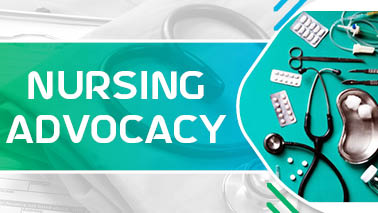
Nursing advocacy is a critical aspect of the nursing profession, emphasizing the nurse's role in protecting patients' rights and ensuring optimal care.
Future Research Perspectives
Health Disparities: Investigating the social determinants of health and strategies to reduce disparities in healthcare access and outcomes among different populations.
Chronic Disease Management: Exploring innovative approaches to manage chronic conditions, including telehealth, remote monitoring, and personalized care plans.
Mental Health: Researching effective interventions for mental health conditions, integrating mental health care into primary care, and reducing stigma associated with mental health issues.
Technology Integration: Examining the impact of new technologies on nursing practice, patient outcomes, and healthcare delivery. This includes the use of electronic health records, telehealth, and wearable health devices.
Patient Safety and Quality Care: Investigating methods to improve patient safety, reduce medical errors, and enhance the quality of care provided by nurses.
Cutting-edge Technologies and Innovations
Holistic Care Models: Adopting holistic approaches that consider physical, emotional, social, and spiritual aspects of health.
Interprofessional Collaboration: Enhancing teamwork across different healthcare disciplines to improve patient outcomes.
Patient-centered Care: Shifting focus towards personalized care plans that involve patients in decision-making processes.
Sustainability in Healthcare: Implementing environmentally sustainable practices within healthcare settings.
Advanced Practice Nursing: Expanding roles for nurse practitioners, clinical nurse specialists, nurse anesthetists, and nurse midwives.
Community-based Health Initiatives: Focusing on preventive care and health promotion in community settings.
Leadership Development: Preparing nurses for leadership roles through advanced education and professional development programs.
Tags
Germany Nursing Conferences
Nursing Education Conferences 2024 Asia
London Nursing Conferences
Advanced Nursing Practice Conferences 2025
Nursing Conferences 2025 Brazil
Japan Nursing Conferences
Nursing Conferences 2025 Australia
Nursing Conferences 2025
Asian Nursing Conferences 2025
Nursing Conferences USA
Global Nursing Conferences
Canada Nursing Conferences 2025
Nursing Education Conferences
Nursing Conferences 2024

Nursing is a critical component of the healthcare system, encompassing a wide range of roles and responsibilities focused on patient care, education, advocacy, and research. Nurses work in various settings, including hospitals, clinics, community health centers, and homes, providing essential services that promote health, prevent illness, and support recovery.
Future Research Perspectives
Patient-Centered Care: Investigating methods to enhance patient engagement and participation in their own care.
Chronic Disease Management: Developing innovative approaches to managing chronic conditions such as diabetes, heart disease, and hypertension.
Mental Health Integration: Researching strategies to integrate mental health services into primary care settings.
Health Equity and Disparities: Investigating the root causes of health disparities and developing interventions to address them.
Nursing Workforce and Well-being: Studying factors affecting nurse retention, job satisfaction, and mental health.
Quality and Safety in Healthcare: Investigating the impact of quality improvement initiatives on healthcare outcomes.
Cutting-edge Technologies and Innovations
Artificial Intelligence (AI): Implementing AI-driven tools for predictive analytics, early diagnosis, and personalized treatment plans.
Wearable Health Devices: Utilizing wearable devices to continuously monitor vital signs, activity levels, and other health indicators.
Electronic Health Records (EHRs): Enhancing EHR systems to improve data interoperability, usability, and patient engagement.
Robotics and Automation: Employing robotic systems for tasks such as medication delivery, surgery, and patient rehabilitation.
Genomics and Precision Medicine: Incorporating genetic and genomic information into patient care to tailor treatments to individual needs.
Virtual Reality (VR) and Augmented Reality (AR): Creating immersive simulations for clinical skill development and emergency preparedness.
3D Printing: Producing customized prosthetics, implants, and medical devices using 3D printing technology.
Smart Hospital Systems: Implementing IoT (Internet of Things) technology to connect medical devices, monitor patient conditions, and optimize hospital operations.
Tags
Japan Nursing Conferences
Nursing Conferences Europe
Advanced Nursing Practice Conferences 2025
World Nursing Conferences
Nursing Conferences 2025 Asia
Nursing Conferences USA
Advanced Nursing Practice Conferences
Nursing Conferences 2025 USA
Nursing Conferences 2025
Canada Nursing Conferences
Nursing Conferences 2025 Brazil
Nursing Conferences 2025 Australia
Japan Nursing Conferences 2024
Nursing Education Conferences 2024 Asia
London Nursing Conferences
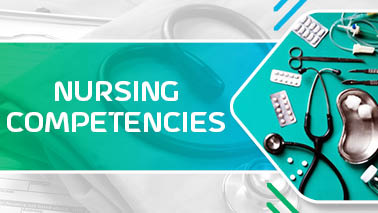
Nursing competencies are essential skills, knowledge, and attitudes that nurses must possess to provide high-quality care. These competencies encompass a wide range of areas, including clinical skills, communication, critical thinking, and ethical decision-making.
Future Research Perspectives in Nursing
Patient-Centered Care: Investigating ways to enhance patient engagement and individualized care.
Health Disparities: Exploring interventions to reduce health disparities and improve access to care.
Chronic Disease Management: Developing innovative strategies for managing chronic diseases.
Mental Health Integration: Researching methods to integrate mental health services into primary care.
Nursing Workforce Development: Investigating factors affecting nurse retention and job satisfaction.
Quality and Safety in Healthcare: Researching methods to enhance patient safety and reduce medical errors.
Cutting-edge Technologies and Innovations
Artificial Intelligence (AI): Utilizing AI for predictive analytics, early diagnosis, and personalized treatment.
Wearable Health Devices: Implementing wearable technology to monitor vital signs and activity levels.
Electronic Health Records (EHRs): Enhancing EHR systems for better data management and patient engagement.
Robotics and Automation: Employing robotic systems for tasks such as medication delivery and surgery.
Genomics and Precision Medicine: Developing precision medicine approaches for disease prevention and management.
Virtual Reality (VR) and Augmented Reality (AR): Using VR and AR for nurse training and patient rehabilitation.
3D Printing: Producing customized prosthetics and medical devices using 3D printing.
Smart Hospital Systems: Implementing IoT technology to connect medical devices and monitor patients.
Tags
Nursing Conferences 2025 Brazil
Spain Nursing Conferences 2024
Nursing Conferences 2025 Australia
Advanced Nursing Practice Conferences
Asian Nursing Conferences 2025
Nursing Conferences 2025 USA
Nursing Education Conferences
Japan Nursing Conferences
Global Nursing Conferences
World Nursing Conferences
Canada Nursing Conferences
Germany Nursing Conferences
Nursing Conferences USA
Nursing Education Conferences 2024 Asia
Nursing Conferences Europe
Market Analysis
Nursing Market Overview
The global nursing market is booming, driven by a surge in demand for healthcare services. Here's a quick snapshot:
Growth Drivers:
Aging Population: A rapidly growing elderly population worldwide demands more healthcare services, including nursing care. This trend shows no signs of slowing down.
Chronic Disease Rise: The prevalence of chronic conditions like diabetes and heart disease is increasing globally, requiring ongoing medical care often delivered by nurses.
Focus on Quality Care: There's a growing emphasis on providing high-quality care in all healthcare settings, and nurses play a vital role in ensuring patients receive the attention they need.
Market Size and Growth:
The global nursing market is massive and expected to grow steadily. Estimates suggest it was valued around USD 1.137 trillion in 2021 [Data Bridge Market Research].
Growth projections range from 5.5% to 8.5% CAGR, with the market reaching a potential USD 1.745 trillion by 2029 [Data Bridge Market Research & Mordor Intelligence].
Market Segments:
The market can be segmented into different areas, each experiencing growth:
Registered Nurses: This is the largest segment, with a projected CAGR of around 5.62% by 2030 [US Registered Nurses Market Size].
Nursing Care: Encompassing skilled nursing facilities, home healthcare, and other services, this segment is expected to reach USD 692.19 billion by 2029 [U.S. Nursing Care Market Size].
Skilled Nursing Facilities: This segment focuses on providing short-term rehabilitation and long-term care services.
Nursing Market Overview in USA
The U.S. nursing market is experiencing significant growth, driven by several key factors:
Aging population: The baby boomer generation is rapidly aging, leading to a surge in demand for healthcare services, including nursing care. This trend is expected to continue for many years to come.
Increased chronic diseases: The prevalence of chronic diseases such as diabetes, heart disease, and cancer is rising. These conditions often require ongoing medical care, which can be provided by nurses.
Focus on quality care: There is a growing emphasis on providing high-quality care in all healthcare settings. Nurses play a vital role in ensuring that patients receive the care they need.
Here's a breakdown of the market size and growth for different segments of the U.S. nursing market:
Registered Nurses Market: This is the largest segment, with a market size of around USD 499.15 billion in 2022 and a projected growth rate of 5.62% by 2030 [US Registered Nurses Market Size, Share, Growth Report 2030].
Nursing Care Market: Encompassing skilled nursing facilities, home healthcare, and other services, this market is valued at USD 475.15 billion in 2023 and is expected to reach USD 692.19 billion by 2029, with a CAGR of 6.47% [U.S. Nursing Care Market Size 2029 | Industry Analysis, Data, and Trends].
Skilled Nursing Facility Market: This segment focuses on providing short-term rehabilitation and long-term care services. The U.S. skilled nursing facility market size was valued at USD 179.0 billion in 2022 and is projected to grow at a CAGR of 3.43% from 2023 to 2030 [U.S. Skilled Nursing Facility Market Size, Share Report, 2030].
While the market outlook is positive, there are also some challenges to consider, such as the nursing shortage and rising healthcare costs. However, the overall trend suggests a strong and growing demand for nurses in the United States.
Nursing Market Overview in Europe
The European nursing market presents a similar picture to the US, with growth driven by an aging population and increasing healthcare needs. Here's what we can glean from available information:
Market size and growth: While specific figures might require a dedicated report (paid resources often offer the most current data), Europe is the second-largest nursing market globally, following North America [North America, Europe lead global nursing care market: analysis].
Reports suggest steady growth, with factors like investment in senior care infrastructure influencing the market health [Marketbeat Nursing Homes in Europe 2024 | France - Cushman & Wakefield].
Market dynamics: Several key trends are shaping the European nursing market:
Aging population: Similar to the US, Europe faces a rapidly aging demographic. This creates a greater need for nurses in various care settings like hospitals, nursing homes, and home healthcare.
Focus on quality and specialization: There's a growing emphasis on providing high-quality care, often demanding specialized nurses with advanced training.
Workforce shortage: A significant challenge across Europe is the nursing shortage. Countries are implementing strategies to attract and retain nurses, including improved working conditions and career progression opportunities.
Here are some resources to explore further (be mindful these might not be free reports):
Market research reports: Look for reports by established firms like "Market Research" that might offer dedicated Europe Nursing Reports for 2024 [Europe Nursing Market Research Reports & Analysis].
Industry analysis: Resources from firms like Cushman & Wakefield can provide insights into specific segments like nursing homes in Europe [Marketbeat Nursing Homes in Europe 2024 | France - Cushman & Wakefield].
Overall, the European nursing market presents a growing demand for skilled professionals. However, challenges like workforce shortages need to be addressed to ensure adequate care for the aging population.
Nursing Market Overview in Asia
The nursing market in Asia is experiencing the fastest growth globally, driven by several factors:
Rapidly aging population: Like the US and Europe, Asia has a growing elderly population demanding more healthcare services, including nursing care. This trend is even more pronounced in some Asian countries due to longer lifespans.
Rising healthcare awareness: People in Asia are becoming more aware of the importance of quality healthcare, leading to increased demand for qualified nurses.
Developing healthcare infrastructure: Many Asian countries are actively investing in building hospitals, nursing homes, and other healthcare facilities, creating a need for more nurses.
Here's a glimpse into the market size and growth:
Market Growth: The Asia Pacific region is expected to witness the highest Compound Annual Growth Rate (CAGR) in the nursing market during the forecast period (2024-2029), with estimates ranging from 6.6% to 8.5% [Long Term Care Market Size to Hit USD 1.92 Trillion by 2032 & Nursing Care Market Size & Share Analysis].
Market Segments: Growth is expected across various segments like:
Hospital nursing: More hospitals are being built, creating a demand for nurses specializing in different areas.
Home healthcare: The market for home healthcare services is booming in Asia, driven by factors like rising disposable income and the preference for aging at home.
Long-term care facilities: The need for skilled nursing care in facilities is also on the rise.
Challenges exist in the Asian nursing market as well:
Nursing shortage: Similar to other regions, Asia faces a significant nursing shortage. Governments and healthcare institutions are working on solutions like improved wages and training programs to attract and retain nurses.
Uneven development: Growth might vary across different Asian countries due to disparities in healthcare infrastructure and economic development.
Resources to explore further:
Market research reports: Look for reports from established firms like Mordor Intelligence or Data Bridge Market Research that might offer dedicated Asia Pacific Nursing Market Reports for 2024 [Mordor Intelligence & Data Bridge Market Research reports].
Industry analysis: Reports from research institutions or consultancies can provide insights into specific segments of the Asian nursing market.
Overall, the Asian nursing market offers significant growth potential due to the aging population and developing healthcare landscape. However, addressing the nursing shortage remains crucial for meeting future healthcare demands.
Nursing Market Overview in Middle East
Market Growth Potential:
Aging population: The Middle East is also experiencing a growing elderly population, leading to an increased need for nurses.
Focus on home healthcare: The home healthcare market in the Middle East is projected to grow due to factors like affordability and preference for in-home care for seniors [Grand View Research Report: Middle East & Africa Home Healthcare Market]. This will drive demand for skilled nurses in this sector.
Government initiatives: Some Middle Eastern governments are recognizing the importance of a robust healthcare system and may invest in attracting and training nurses.
Market Characteristics:
Limited data: Specific market size and growth rate figures might be difficult to find in free sources. Paid market research reports from firms like Market Research or Research and Markets might offer more comprehensive data [Middle East Nursing Market Research Reports & Analysis & Middle East & Africa Home Healthcare Market Analysis Report].
Market segmentation: Similar to other regions, the Middle Eastern nursing market can be segmented into:
Hospital nursing: Demand for nurses across various specializations is expected to rise with healthcare infrastructure development.
Home healthcare: This segment is likely to see significant growth, requiring more skilled nurses for in-home care.
Long-term care facilities: The need for nurses in skilled nursing facilities is also on the rise.
Challenges:
Workforce shortage: A nursing shortage is a concern in the Middle East as well. Strategies to improve work environments, offer competitive salaries, and attract nurses from abroad are needed.
Uneven development: Healthcare infrastructure and economic development vary across Middle Eastern countries, impacting the nursing market growth.
Recommendations:
Look for industry reports or analysis from consultancies or research institutions focused on the Middle East healthcare sector.
Consider reports from organizations like the World Health Organization (WHO) that might offer insights into the nursing workforce in the region.
While information might be limited, the Middle Eastern nursing market shows potential for growth due to the aging population and healthcare sector development. Addressing the nursing shortage will be crucial to meeting future healthcare demands.
Nursing Market Overview in Japan
Japan's nursing market is undergoing significant transformation driven by a rapidly aging population and a growing need for long-term care services. Here's a breakdown of key trends and reports to explore:
Market Growth Drivers:
Aging population: Japan has one of the world's fastest-aging populations, with a high proportion of elderly citizens requiring care. This is a major driver for the nursing market.
Increased chronic diseases: The prevalence of chronic diseases like diabetes and heart disease is rising in Japan, further increasing the demand for skilled nurses.
Focus on quality care: There's a growing emphasis on providing high-quality care in various settings like hospitals, nursing homes, and home healthcare.
Market Size and Growth:
While specific figures might vary depending on the report source, the Japanese skilled nursing market is estimated to be valued at around $21.01 billion in 2022 and is projected to reach $38.03 billion by 2030, exhibiting a Compound Annual Growth Rate (CAGR) of 7.7% [Insights10: Japan Skilled Nursing Market Market Report 2023 to 2030].
The residential nursing care service market in Japan is also substantial, valued at around $32.12 billion in 2022 and projected to reach $53.16 billion by 2030, with a CAGR of 6.5% [Insights10: Japan Residential Nursing Care service Market Analysis].
Market Reports and Resources:
Insights10: This market research firm offers reports on the Japanese skilled nursing and residential nursing care service markets, providing insights into market size, growth projections, segmentation, and key players.
Additional Resources:
M3.inc: This healthcare research company maintains a network of nurses in Japan and can offer custom market research services.
Challenges:
Nursing shortage: Similar to other developed countries, Japan faces a significant nursing shortage, putting a strain on the healthcare system.
Work-life balance: Long working hours and demanding work environments can discourage some from entering or remaining in the nursing profession.
Overall, the Japanese nursing market presents significant growth potential due to the aging population and increasing healthcare needs.
However, addressing the nursing shortage and improving work-life balance are crucial for ensuring adequate care for the elderly population.
Nursing Market Overview in Canada
The Canadian nursing market is a dynamic landscape characterized by high demand, a critical shortage of nurses, and ongoing efforts to address this gap. Here's a breakdown of key insights:
High Demand:
An aging population and increasing healthcare needs are driving a significant and growing demand for nurses across various settings like hospitals, home care, and long-term care facilities.
Canada's universal healthcare system ensures everyone receives necessary care, further increasing the demand for nurses.
Nursing Shortage:
Canada faces a critical nursing shortage, resulting in high job vacancies and increased workloads for existing nurses.
This shortage puts a strain on the healthcare system and can impact patient care.
Factors like an aging nursing workforce, demanding work environments, and competitive salaries in other countries contribute to the shortage.
Focus on Retention and Attraction:
Recognizing the shortage, the government and healthcare institutions are implementing strategies to retain nurses and attract new ones.
These strategies include:
Improved working conditions and competitive salaries.
Investment in mental health and well-being programs for nurses.
Educational programs and scholarships to encourage people to enter the nursing profession.
Streamlining the immigration process for qualified international nurses.
Market Resources:
While there isn't a single report solely focused on the Canadian nursing market, valuable insights can be gleaned from various resources:
Government Resources:
Canadian Institutes for Health Information (CIHI): Provides reports and data on the Canadian healthcare workforce, including nurses. Look for reports on "Registered Nurses" and "The State of the Health Workforce in Canada".
Canadian Nurses Association (CNA): Offers data and reports on the nursing workforce in Canada.
Job Bank: Provides labor market information for nurses, including job prospects, average salaries, and skills sought after by employers.
Paid Market Research Reports: Companies like Insights10 or Mordor Intelligence might offer reports on the Canadian skilled nursing market or healthcare workforce.
These reports typically offer a more in-depth analysis.
News and Analysis: Websites and publications from organizations like the Canadian Medical Association (CMA) or healthcare news outlets might publish articles on trends in the nursing market.
10 Types of Nurses that Are in High Demand
Licensed Practical Nurse (LPN) | Registered Nurse (RN) | Certified Nursing Assistant (CNA) | Cosmetic Nurse | Neonatal Intensive Care Unit Nurse (NICU Nurse) | Pediatric Nurse | Psychiatric Nurse Practitioner | Certified Registered Nurse Anesthetist (CRNA) | Clinical Nurse Specialist (CNS) | Nurse Practitioner (NP)
Advanced Practice Registered Nursing | Ambulatory Care Nursing | Business in Nursing | Bariatrics Nurse | Camp Nursing | Cardiac Care Nursing | Cardiac Cath Lab | Case Management Nursing | Clinical Nurse Leader | Clinical Nurse | Community Health Nursing | Complementary Health Nursing | Correctional Facility Nursing | Critical Care Nursing | Dermatology Nursing | Developmental Disability Nursing | Diabetes Nursing | Domestic Violence | Emergency Nursing | Ethics in Nursing | Family Nurse Practitioner | Flight/Transport Nursing | Forensic Nursing | Gastroenterology | Nursing | Genetics Nursing | Geriatric Nursing | Gerontological Nurse | Gynecology/Obstetric Nursing | Health Policy Nursing | Hematology Nursing | HIV/AIDS Nursing | Holistic Nursing | Home Health Care Nursing | Hospice/Palliative Nursing | Independent Nurse | Infection Control Nursing | Informatics Nursing | Infusion Nursing | International Nursing | Labor & Delivery Nursing | Lactation Consultation | Legal Nurse Consultant | Licensed Practical Nursing | Long-Term Care Nursing | Managed Care Nursing | Medical-Surgical Nursing | Military and Uniformed Service Nursing | Missionary Nursing | Neonatal Intensive Care Nursing | Nephrology Nursing | Neuroscience Nursing | Nurse Anesthetist | Nurse Attorney | Nurse Educator | Nurse Legislator | Nurse Life Care Planning | Nurse Midwife |Nurse Practitioner | Nurse Researcher | Nursing Advocacy | Nursing Entrepreneur | Nursing Executive and Nursing | Nursing Manager and Nursing Administration | Nursing Quality Improvement | Nursing Writer, Author, or Historian | Occupational Health Nurse | Cancer Nursing | Operating Room Nursing /Perioperative Nursing | Ophthalmic Nursing | Orthopedic Nursing | Otorhinolaryngology Nursing | Overseas, Development, Volunteer, Missionary or Refugee Nursing | Pain Management Nursing | Parish Nursing | Pediatric Endocrinology Nursing | Pediatric Nurse Practitioner | Pediatric Nurse | Perianesthesia Nursing | Perinatal Nursing | Plastic Surgery Nursing | Poison Information Specialist | Psychiatric Nurse Practitioner | Psychiatric Nursing | Public Health Nurse | Pulmonary Care Nursing | Radiology Nursing | Registered Nurse | Rehabilitation Nursing | Reproductive Nursing | Rheumatology Nursing | School Nursing | Sub-Acute Nursing | Substance Abuse Nursing | Agency Nursing | Surgical Nursing | Telemetry Nursing | Telephone Triage Nursing | Toxicology Nursing | Transcultural Nursing | Transplant Nursing | Trauma Nursing | Travel Nursing | Triage Nursing | Urologic Nursing | Vocational/Licensed Practical Nurse | Wound, Ostomy and Continence Nursing
Top 10 Nursing Universities Worldwide:
University of Pennsylvania, USA | University of Toronto, Canada | Johns Hopkins University, USA | University of Manchester, United Kingdom | King's College London, UK | Yale University, USA | University of Technology Sydney, Australia | University of Washington, USA | University of Southampton, UK | National University of Singapore, Singapore
Acta Paulista de Enfermagem | Advanced Emergency Nursing Journal | Advances in Family Practice Nursing | Advances in Neonatal Care | Advances in Nursing Science | Africa Journal of Nursing and Midwifery | American Journal of Nursing | American Journal of Nursing Science | American Nurse Journal | Annual Review of Nursing Research | Aporia : The Nursing Journal | APORIA: the Nursing Journal: la Revue en Sciences Infirmieres | Applied Nursing Research | Archives of Psychiatric Nursing | Arsiv Kaynak Tarama Dergisi | Asian Journal of Nursing Education and Research | Asian Journal of Nursing Education and Research (India ) | Asian Nursing Research | Asian Oncology Nursing | Asian Pacific Island Nursing Journal | Asia-Pacific Journal of Oncology Nursing | Australasian Emergency Care | Australasian Emergency Nursing Journal | Australian Journal of Advanced Nursing | Australian Nursing and Midwifery Journal | Australian Nursing Journal | Avances en Enfermeria | Biological Research for Nursing | Biomedicine and Nursing | Birth | BMC Nursing | British Journal of Cardiac Nursing | British Journal of Community Nursing | British Journal of Mental Health Nursing | British Journal of Midwifery | British Journal of Neuroscience Nursing | British Journal of Nursing | Buy Journal of Nursing science and practice | Canadian Journal of Emergency Nursing | Canadian Journal of Midwifery Research and Practice | Canadian Journal of Nursing Research | Canadian Nurse | Canadian Oncology Nursing Journal | Cancer Nursing | Cancer Nursing Practice | Child Health Nursing Research | Ciencia y Enfermeria | CIN: Computers, Informatics, Nursing | Cite factor | Clinical Journal of Oncology Nursing | Clinical Nurse Specialist | Clinical Nursing Research | Clinical Nursing Studies | Clinical Simulation in Nursing | Cogitare Enfermagem | Collegian | Comprehensive Child and Adolescent Nursing | Connect: The World of Critical Care Nursing | Contemporary Nurse Creative Nursing | Critical Care Nurse | Critical Care Nursing Clinics of North America | Critical Care Nursing Quarterly | Dental Nursing | Dimensions of Critical Care Nursing | Emergency Nurse | Enfermagem Revista | Enfermería actual en Costa Rica | Enfermeria Clinica | Enfermería Dermatológica | Enfermería en Cardiología | Enfermeria Global | Enfermeria Intensiva | Enfermeria Nefrologica | Enfermería Oncológica | Enfermeria Universitaria | Enfermería: Cuidados Humanizados | European Diabetes Nursing | European Journal of Cardiovascular Nursing | European Journal of Midwifery | European Journal of Oncology Nursing | Evidence Based Nursing | Florence Nightingale Journal of Nursing | Frontiers of Nursing | Gastroenterology Nursing | Gastrointestinal Nursing | Geriatric Nursing | Global Qualitative Nursing Research | Hayat: Journal of Faculty of Nursing and Midwifery | Health Sciences University Journal of Nursing | HIV Nursing | Holistic Nursing Practice | Home Healthcare Nurse | Hong Kong Journal of Gynaecology, Obstetrics and Midwifery | Independent Nurse | Index de Enfermería | Indian Journal of Nursing Sciences | Indian Journal of Surgical Nursing | Indiana Journal of Psychiatric Nursing | Intensive and Critical Care Nursing | International Diabetes Nursing | International Emergency Nursing | International Journal of Nursing and Midwifery | International Journal of Advance Research in Nursing | International Journal of Advanced Nursing Studies | International Journal of Africa Nursing Sciences | International Journal of Cardiovascular Nursing | International Journal of Community Based Nursing and Midwifery | International Journal of Community Health Nursing | International Journal of Emergency and Trauma Nursing | International Journal of Evidence Based Nursing | International Journal of Geriatric Nursing | International Journal of Immunological Nursing | International Journal of Medical Surgical Nursing | International Journal of Mental Health Nursing | International Journal of Midwifery and Nursing Practice | International Journal of Midwifery Nursing | International Journal of Midwifery Nursing | International Journal of Neurological Nursing | International Journal of Nursing & Clinical Practices | International Journal of Nursing and Health Services | International Journal of Nursing Critical Care | International Journal of Nursing Education Scholarship | International Journal of Nursing Knowledge |International Journal of Nursing Practice | International Journal of Nursing Science | International Journal of Nursing Science Practice and Research | International Journal of Nursing Sciences | International Journal of Nursing Sciences and Clinical Practices | International Journal of Nursing Sciences and Practice | International Journal of Nursing Studies | International Journal of Obstetrics, Perinatal and Neonatal Nursing | International Journal of Older People Nursing | International Journal of Oncological Nursing | International Journal of Orthopaedic and Trauma Nursing | International Journal of Orthopedic Nursing | International Journal of Palliative Nursing | International Journal of Pediatric Nursing | International Journal of Practical Nursing | International Journal of Research in Nursing | International Journal of Urological Nursing | International Journal of Women Health Nursing | International Nursing Review | Internet Journal of Advanced Nursing Practice | Investigación en Enfermeria: Imagen y Desarrollo | Investigación y Educación en Enfermería | "Investigación y Educación en Enfermería" | IP Journal of Paediatrics and Nursing Science | Iranian Journal of Nursing and Midwifery Research | Iris Journal of Nursing & Care | ISRN Nursing | Issues in Comprehensive Pediatric Nursing | Issues in Mental Health Nursing | Japan Journal of Nursing Science | Japanese Journal of Nursing and Health Sciences | JOGNN: Journal of Obstetric, Gynecologic & Neonatal Nursing | Journal for Nurse Practitioners | Journal for Nurses in Professional Development | Journal for Specialists in Pediatric Nursing | Journal of Addictions Nursing | Journal of advanced nursing | Journal of Advanced Practices in Nursing | Journal of Aesthetic Nursing | Journal of Anatolia Nursing and Health Sciences | Journal of Art and Aesthetics in Nursing and Health Sciences | Journal of Asian Midwives | Journal of Cardiovascular Nursing | Journal of Child and Adolescent Psychiatric Nursing | Journal of Christian Nursing | Journal of Clinical Nursing | Journal of Clinical Nursing and Midwifery | Journal of Clinical Nursing Research | Journal of Community Health Nursing | Journal of Community Nursing | Journal of Comprehensive Nursing Research and Care | Journal of Diabetes Nursing | Journal of Doctoral Nursing Practice | Journal of East-West Nursing Research | Journal of Emergency Nursing | Journal of Family Nursing | Journal of Forensic Nursing | Journal of Gerontological Nursing | Journal of Gerontology and Geriatric Nursing | Journal of Health Technology Assessment in Midwifery | Journal of Holistic Nursing | Journal of Hospice & Palliative Nursing | Journal of Infusion Nursing | Journal of Intensive and Critical Care Nursing | Journal of Japan Academy of Midwifery | Journal of Japan Academy of Nursing Science | Journal of Japanese Society of Child Health Nursing | Journal of Korean Academy of Community Health Nursing | Journal of Korean Academy of Fundamentals of Nursing | Journal of Korean Academy of Nursing | Journal of Korean Academy of Nursing Administration | Journal of Korean Academy of psychiatric and Mental Health Nursing | Journal of Korean Biological Nursing Science | Journal of Korean Clinical Nursing Research | Journal of Korean Critical Care Nursing | Journal of Korean Oncology Nursing | Journal of Legal Nurse Consulting | Journal of Managed Care Nursing | Journal of Midwifery & Women's Health | Journal of Midwifery | Journal of Midwifery, Women's Health and Nursing Practice | Journal of Neonatal Nursing | Journal of Neurological and Neurosurgical Nursing | Journal of Neuroscience Nursing | Journal of Nurse Life Care Planning | Journal of Nurse Midwifery and Maternal Health | Journal of Nursing | Journal of Nursing & Care | Journal of Nursing Administration (JONA) | Journal of Nursing and Health Sciences | Journal of Nursing and Health Studies | Journal of Nursing and Midwifery | Journal of Nursing and Midwifery Sciences | Journal of Nursing and Practice | Journal of Nursing Care Quality | Journal of Nursing Education | Journal of Nursing Education and Practice | Journal of Nursing Management | Journal of Nursing Measurement | Journal Of Nursing Practice | Journal of Nursing Practice Applications and Reviews of Research (JNPARR) | Journal of Nursing Regulation | Journal of Nursing Research (JNR) | Journal of Nursing Scholarship | Journal of Nursing Science | Journal of Nursing Science & Practice | Journal of Nursing Science Practice, Research and Advancements | Journal of Nursing Today | Journal of Nursing, Social Studies and Public Health | Journal Of Obstetric, Gynecologic & Neonatal Nursing | Journal of Pediatric Nursing | Journal of Pediatric Oncology Nursing | Journal of Pediatric Surgical Nursing | Journal of PeriAnesthesia Nursing | Journal of Perinatal & Neonatal Nursing | Journal of Perioperative Nursing | Journal of Practical & Professional Nursing | Journal of Professional Nursing | Journal of Psychiatric & Mental Health Nursing | Journal of Psychiatric and Mental Health Nursing | Journal of Psychiatric Nursing | Journal of Psychosocial Nursing and Mental Health Services | Journal of Radiology Nursing | Journal of Research Development in Nursing & Midwifery | Journal of Research in Nursing | Journal of Research in Nursing and Midwifery | Journal of School Nursing | Journal of Shahid Beheshti School of Nursing and Midwifery | Journal of the American Association of Nurse Practitioners | Journal of the American Psychiatric Nurses Association | Journal of the Association of Nurses in AIDS Care (JANAC) | Journal of the Dermatology Nurses' Association | Journal of the Korean Academy of Child Health Nursing | Journal of the Philippine Nurses Association of America | Journal of Transcultural Nursing | Journal of Trauma Nursing | Journal of trauma nursing : the official journal of the Society of Trauma Nurses | Journal of Vascular Nursing | Journal of Wound, Ostomy and Continence Nursing | JournalsPub | Jurnal Ners | Korean Journal of Adult Nursing | Korean Journal of Women Health Nursing | Korean Society of Nursing Science | Kufa Journal of Nursing Sciences | Latin-American Journal of Nursing | MEDSURG Nursing | Midwifery | Midwifery Today | Minority Nurse | Modern Nursing and Health Care (Poland) | Nephrology Nursing Journal | New Zealand College of Midwives Journal | Newborn and Infant Nursing Reviews | Nordic Journal of Nursing Research | NURE Investigacion | Nurse Author & Editor | Nurse Education in Practice | Nurse Education Today | Nurse Educator | Nurse Leader | Nurse Researcher | Nursery World Select | Nurses | Nursing & Health Sciences | Nursing & Health Sciences Research Journal | Nursing & Primary Care | Nursing (Edición Española) | Nursing : Research and Reviews | Nursing 20XX Critical Care | Nursing administration | Nursing Administration Quarterly | Nursing and Health Sciences | Nursing and Midwifery Journal | Nursing and Midwifery Studies | Nursing and Residential Care | Nursing Care and Research | Nursing Children and Young People | Nursing Clinics of North America | Nursing Economics | Nursing education | Nursing Education Perspectives | Nursing Ethics | Nursing for Women’s Health Online | Nursing Forum | Nursing History Review | Nursing History Review: Official Publication of the American Association for the History of Nursing | Nursing in Critical Care | Nursing in the 21st Century | Nursing Inquiry | Nursing Made Incredibly Easy | Nursing Management | Nursing Older People | Nursing Open | Nursing Outlook | Nursing Philosophy | Nursing Reports | Nursing Research | Nursing Research and Practice | Nursing Science | Nursing Science Journal of Thailand | Nursing Science Quarterly | Nursing Standard | Nursing Standard Online | Nursing Times | Nursing: Research and Reviews | Nursing2014 Critical Care | Nursing2020 | NursingPlus Open | Oncology Nursing Forum | Online Brazilian Journal of Nursing | Online Journal of Issues in Nursing | Online Journal of Rural Nursing and Health Care | Open Nursing Journal | Orthopaedic Nursing | Pain Management Nursing | Pediatric Nursing | Pediatric Nursing Journal | Pediomaternal Nursing Journal | Pensar Enfermagem | Philippine Journal of Nursing | Plastic Surgical Nursing | Policy, Politics & Nursing Practice | Practice Nursing | Preventive Care in Nursing & Midwifery Journal | Public Health Nursing | Reflections on Nursing Leadership | Rehabilitation Nursing | REME - Revista Mineira de Enfermagem | Research & Reviews: Journal of Nursing and Health Sciences | Research and Theory for Nursing Practice | Research in Gerontological Nursing | Research in Nursing & Health | Research in Nursing: Image and Development | Revista Baiana de Enfermagem | Revista Brasileira de Enfermagem | Revista Científica de la Sociedad Española de Enfermería Neurológica (English Edition) | Revista cubana de enfermeria | Revista da Escola de Enfermagem da USP | Revista de Enfermería del Instituto Mexicano del Seguro Social | Revista de la Sociedad Española de Enfermería Nefrológica | Revista Eletronica de Enfermagem | Revista Latino-Americana de Enfermagem | RGUHS Journal of Nursing Sciences | Sage Open Nursing | Scientific Journal of Nursing, Midwifery and Paramedical Faculty | Seminars in Oncology Nursing | Teaching and Learning in Nursing | Texto & Contexto – Enfermagem | The American Journal of Maternal Child Nursing | The Internet Journal of Advanced Nursing Practice | The Journal for Nurse Practitioners | The Journal of Cardiovascular Nursing | The Journal of Continuing Education in Nursing | The Journal of Nurses Academic Society | The Journal of School Nursing | The Korean Journal of Rehabilitation Nursing | The Lancet | The Nurse Practitioner | The Open Nursing Journal | The Veterinary Nurse | Transplant Nurses Journal | Turkiye Klinikleri Public Health Nursing | Urologic Nursing | Veterinary Nursing Journal | Visions: Journal of Rogerian Nursing Science | Western Journal of Nursing Research | Women's Healthcare: A Clinical Journal for NPs | World Journal of Nursing Sciences | Worldviews on Evidence-Based Nursing
Nursing Associations Track wise
National Organization of Practical Nursing Education and Service | National Practitioner Associates for Continuing Education | Nursing Education Association | Georgia Association for Nursing Education | The Association of Community Health Nursing Educators | European Federation of Nurse Educators | The Nursing Teachers Association | Hong Kong Society for Nursing Education Limited | Education - American Holistic Nurses Association | Australian Nurse Teachers Society | Cardiovascular Nursing Education Associates
National Institute of Nursing Research | Eastern Nursing Research Society (ENRS) | Midwest Nursing Research Society | International Association of Clinical Research Nurses | Nursing Research Society of India | Association of Clinical Research Professionals | Society of Clinical Research Associates
Critical Care and Emergency Nursing
American Association of Critical Care Nurses | Emergency Nurses Association | Society of Trauma Nurses | American Academy of Emergency Nurse Practitioners | Canadian Association of Critical Care Nurses | British Association of Critical Care Nurses | Emergency Nursing World | European Federation of Critical Care Nurses Associations | Emergency Nurses Association | The American Association for the Surgery of Trauma | The American Trauma Society | The Society of Trauma Nurses | National Association of State EMS Officials | Academy of Medical-Surgical Nurses
British Association of Dental Nurses | Society of British Dental Nurses | Irish Dental Nurses Association | Dental union - Dental Nurses Forum | Dental Nursing Academy
National Association of Clinical Nurse Specialists | International Association of Clinical Research Nurses | Society of Clinical Research Associates | National Association of Rural Health Clinics
Association of Community Health Nursing Educators | Community Health Nurses of Canada | Community Health Nurses of Canada | Community and District Nursing Association | Georgia Faith Community Nurses Association
Oncology, Cancer and Tumor Nursing
Oncology Nursing Society | Association of Pediatric Hematology/Oncology Nurses | The Oncology Nurses Association of India | Oncology Nursing Foundation | The European Oncology Nursing Society | Emirates Oncology Nursing Society | Association of Pediatric Oncology Nurses | European Institute of Oncology | European Association of Neuro-Oncology
National Association of Pediatric Nurse Practitioners | Association of Pediatric Oncology Nurses | Society of Pediatric Nurses | Pediatric Endocrinology Nursing Society | Georgia Pediatric Nurses Association | Asia Pacific Paediatric Nurses Association | The Society of Pediatric Cardiovascular Nurses | European Academy of Pediatrics | European Society for Pediatric Nephrology | European Society for Developmental Perinatal and Pediatric Pharmacology | Philippine Pediatric Nurses Association | Child Health Patient Safety Organization
Australian Nursing & Midwifery Federation | Commonwealth Nurses and Midwives Federation | New South Wales Nurses and Midwives' Association | Myanmar Nurse and Midwife Association | Nursing and Midwifery Student Association | Japan Midwives Association | International Confederation of Midwives | American College of Nurse Midwives | Nursing and Midwifery Council
National Association of Nurse Practitioners in Women's Health | Nurse Practitioners in Women’s Health | Nursing Network on Violence Against Women International | Association of Women's Health, Obstetric and Neonatal Nursing
Home Healthcare Nurses Association | Nurse Practitioner Healthcare Foundation | American Association of Managed Care Nurses | American Association of Occupational Health Nurses | American Society for Healthcare Risk Management | American Society of Pharmacovigilance | Association of Nurses in AIDS Care | National Association of Disease Management & Wellness Professionals | Child Health Patient Safety Organization | Nurse Practitioner Healthcare Foundation
Psychiatric and Mental Health Nursing
American Psychiatric Nurses Association | International Society of Psychiatric-Mental Health Nurses | Association of Advanced Practice Psychiatric Nurses | Indian Society of Psychiatric Nurses | The Psychiatric Nurses Association of Ireland | Council of Psychiatric/Mental Health Nurses | Canadian Federation of Mental Health Nurses | The Psychogeriatric Nurses' Association Australia | The Australian & New Zealand Mental Health Association | Society of Psychiatric Advanced Practice Nurses | European Psychiatric Nurses | Society of Psychiatric Advanced Practice Nurses
Nursing Leadership and Management
Sigma Theta Tau | International Council of Nurses | NANDA | American Organization of Nurse Executives | American Society for Pain Management Nursing | National Association of Disease Management & Wellness Professionals
Gynecology and Obstetrical Nursing
Association of Women's Health, Obstetric and Neonatal Nurses | Australian Nursing & Midwifery Federation | Commonwealth Nurses and Midwives Federation | New South Wales Nurses and Midwives' Association | Myanmar Nurse and Midwife Association | Nursing and Midwifery Student Association | Japan Midwives Association | International Confederation of Midwives | American College of Nurse Midwives | Nursing and Midwifery Council | National Association of Nurse Practitioners in Women's Health | Nurse Practitioners in Women’s Health | Nursing Network on Violence Against Women International | Association of Women's Health, Obstetric and Neonatal Nursing
Heart and Cardiovascular Nursing
Cardiovascular Nursing Education Associates | The Society of Pediatric Cardiovascular Nurses | American Association of Heart Failure Nurses | American Heart Association: Council on Cardiovascular Nursing | National Heart Lung and Blood Institute | Northeast Pediatric Cardiology Nurses Association | American College of Cardiovascular Nurses
Academy of Medical-Surgical Nurses | American Society of Plastic & Reconstructive Surgical Nurses, Inc. | American Pediatric Surgical Nurses Association, Inc. | Day Surgery Nurses Association Inc. NSW | American Pediatric Surgical Nurses Association
Home Healthcare Nurses Association | Nurse Practitioner Healthcare Foundation | American Association of Managed Care Nurses | American Association of Occupational Health Nurses | American Society for Healthcare Risk Management | American Society of Pharmacovigilance | Association of Nurses in AIDS Care | National Association of Disease Management & Wellness Professionals | Child Health Patient Safety Organization | Nurse Practitioner Healthcare Foundation
Association of Public Health Nurses | Florida Public Health Association | Nurses | American Association of Occupational Health Nurses | American Society for Healthcare Risk Management | American Society of Pharmacovigilance | Association of Nurses in AIDS Care | National Association of Disease Management & Wellness Professionals | Child Health Patient Safety Organization | Nurse Practitioner Healthcare Foundation
International Family Nursing Association | The Canadian Family Practice Nurses Association | Child and Family Nurses Association | Family Practice Nurses Association of Nova Scotia | Japanese Association for Research in Family Nursing
American Association of Occupational Health Nurses | American Board for Occupational Health Nurses | Ontario Occupational Health Nurses Association | Alberta Occupational Health Nurses Association | The Georgia Association of Occupational Health Nurses | Nurse Practitioner Healthcare Foundation
Academic Medical Center Patient Safety Organization | AABB Center for Patient Safety | Adventist Health System | American Data Network Patient Safety Organization | Alliance for Patient Medication Safety | Child Health Patient Safety Organization
Wound, Ostomy and Continence Nurses Society | American Professional Wound Care Association | Canadian Wound Care Association | Association for the Advancement of Wound Care | American Board of Wound Management | American Physical Therapy Association | Wound Healing Society
American Academy of Ambulatory Care Nursing | National Association Directors of Nursing Administration/Long Term Care | National Association of Directors of Nursing Administration in Long Term Care | American Association of Managed Care Nurses | American Association of Nurse Life Care Planners
Travel Nursing | American Travel Health Nurses Association | The Professional Association of Nurse Travelers
American Nursing Informatics Association | American Medical Informatics Association | Nursing Informatics Working Group | Alliance for Nursing Informatics | Nursing Informatics Community
American Society on Aging (ASA) | American Assisted Living Nurses Association (AALNA) | GeroNurseOnline.org | Hartford Institute for Geriatric Nursing | National Association of Professional Geriatric Care Managers (NAPGCM) | TheGerontological Society of America | The Gerontological Society America (GSA) | The American Geriatrics Society (AGS) | Gerontological Advanced Practice Nurses Association
Society of Psychiatric Advanced Practice Nurses | Nurse Practitioner Healthcare Foundation | ACNP- American College of Nurse Practitioners | National Association of Licensed Practical Nurses | National Association of Nurse Practitioner Faculties | Nurse Practitioner Healthcare Foundation | Nurse Practitioner Society of the Dermatology Nurses’ Association | Society of Nurses in Advanced Practice | Society of Nurses in Advanced Practice | Coalition for Nurses in Advanced Practice
American Association for Men in Nursing | American Assembly for Men in Nursing
American Telemedicine Association | International Society for Telemedicine and eHealth | eHealth Development Association | International Society for Telemedicine and eHealth
American Forensic Nurses | American Association of Legal Nurse Consultants | International Association of Forensic Nurses | Canadian Forensic Nurses Association
The Army Nurse Corps Association, Inc. | Society of Air Force Nurses | Navy Nurse Corps Association
Nursing Universities Country wise
University Of Pennsylvania | Johns Hopkins University | New York University | Univesity of Virginia | University of Michigan | La Salle University | University of Pittsburgh | Rush University | Pennsylvania State University | Drexel University | Yale University | Villanova University | University of Miami | University of New Mexico | University of Houston | Indiana University-Northwest | Northern Arizona University | Widener University | North Park University | Kent State University | Oklahoma Wesleyan University | University of San Francisco | Columbia University | University at Buffalo | Texas womens University | Boise State University | University of Minnesota | North Dakota State University | Houston Baptist University | Florida Atlantic University | University of North Carolina | California Baptist University | University of New Hampshire | Pace University | University of Cincinnati | Belmont University | Hampton University | University of Virginia | Niagara University | Colorado Mesa University | Augusta State University | Purdue University | Kentucky State University | Missouri State University | University of Montana | Sacred Heart University | Western Kentucky University | Emory University | Georgia Southern University | Hawaii Pacific University | University of Indianapolis | University of Limerick | Flinders University | Tennessee State University | Collin University | University of Connecticut | University of San Diego | Florida International University | Ohio University | Holy Names University | Northwest Nazarene University | William Carey University | Youngstown State University | University of Mississippi | University of Guam | Howard University | Marquette University | Fairmont State University | Shenandoah University | Norfolk State University | University of Utah | Southern Utah University | Lamar University | Midwestern State University | Vanderbilt University | Middle Tennessee State University | University of South Carolina | American University of Beirut | The State University of New Jersey | Troy University | University of Arkansas | University of Colorado | Illinois State University | Northern Illinois University | Indiana State University | University of Maryland | Tarleton State University | Christian Brothers University | University of South Alabama | University of Texas | University of California | University of Kansas | University of Nevada
University of Victoria | Cape Breton University | Mount Royal University | University of Alberta | University of Calgary | University of Western Ontario | Memorial University | University of British Columbia | University of Northern British Columbia | McGill University | University of Ottawa | Memorial University | Queen`s University at Kingston | University of Regina | St. Francis Xavier University | Kwantlen Polytechnic University | Lakehead University | University of Toronto | McMaster University | Ryerson University | York University | University of Lethbridge |Fanshawe College | University of Prince Edward Island | Trent University | University of New Brunswick | University of Windsor | Western University | University of the Fraser Valley | Trinity Western University | University of Manitoba | Dalhousie University | University of Saskatchewan | George Brown College | California Baptist University | Langara College
University of Sao Paulo | Universidade Federal do Rio Grande do Sul | Federal University of Health Sciences of Porto Alegre | State University of Londrina | State University of Londrina | Federal University of Santa Catarina | Guarulhos University | University of Minas Gerais | Federal University of Ceara
Universidad Panamericana | Augsburg University | New Mexico State University
University of West London | University of the West of England | Staffordshire University | Birmingham City University | Keele University | University of Greenwich | University of Greenwich | University of Wolverhampton | University of Hull | De Montfort University | The University of Manchester | Bournemouth University | The University of Edinburgh | Plymouth University | University of Chester | University of Liverpool | University of Nottingham | Ulster University | The University of Sheffield | Anglia Ruskin University | Queen's University Belfast | University of Glasgow | University of Leeds | Northumbria University | University of Salford | Swansea University | University of Worcester | University of Stirling | Robert Gordon University | University of Dundee | University of Bradford | Queen Margaret University | University of the West of Scotland | University Of Surrey | University of East Anglia | University of Southampton
CQ University Australia | University of South Australia | The University of Adelaide | The University of Queensland | Edith Cowan University | The University of Sydney | University of Melbourne | University of Canberra | The University of Notre Dame Australia | The University of Notre Dame Australia | Avondale University College | Swinburne University of Technology | Queensland University of Technology | Montclair State University | Charles Sturt University | James CooK University | Victoria University | University of New England | Charles Darwin University | Monash University | Griffith College | Deakin University | Western Sydney University | University of Newcastle | Torrens University | Federation University | University of New England | Murdoch University | University of Notre Dame | The University of Newcastle | La Trobe University | University of Western Sydney | University of Technology Sydney | University of Southern Queensland | Curtin University | Flinders University
Auckland University of Technology | The University of Auckland | Massey University | Ara Institute of Canterbury | Otago Polytechnic | Victoria University of Wellington | University of Otago
University of Kochi | Aomori Univ. of Health and Welfare | Kanazawa University | Yamagata Prefectural University of Health Sciences | The University of Tokyo | Niigata Nursing University | Fukui Prefectural University | Tokyo Medical and Dental University |Miyazaki Prefectural Nursing University | Kagawa Prefectural University of Health Sciences | Kagawa Prefectural University of Health Sciences | t. Luke's International University | Hokkaido University | Kyushu University | Kawasaki City Collageof Nursing | Oita University of Nursing and Health Sciences | Chiba University | Iwaki Meisei University | Kitasato University | Tohoku University | Japanese Red Cross College of Nursing | Okinawa Prefectural College of Nursing | Nagoya University | Hamamatsu University | University of Miyazaki | Tokai University | Kumamoto University | Okayama University | Osaka University | Kobe City College of Nursing | Kobe University | University of Fukui
Kyung Hee University | Korea University | Seoul National University | Woosong College | Korea National University of Transportation | Hallym University | Yonsei University | Daejeon Health Institute of Technology | The Catholic University of Korea | Hanyang University | Inje University | Dong-A University | Eulji University | Inha University | Keimyung university | Chungbuk National University | Daegu Catholic University | Sahmyook University | Changwon National University | Kosin University | Yeungnam University College | Sungshin Women's University | Korea National Open University | Pusan National University | Dankook University | Gachon University | Ajou University | Ewha Womans University | Gongju university | Konyang University | Jeju National University | Nambu University | Kyungpook National University | Ulsan University | Kunsan College of Nursing | Wonkwang University | Kangwon National University | Chungbuk Health & Science University | Dong-Eui University | CHA University | Andong National University | Tongmyong University | Ansan University | Chosun University | Sangji University | Kunsan National University | Dongshin University | Changshin University | Sunchon National University | Gangneung Wonju National University | Chonnam National University
Gulhane University | Giresun University | Acibadem Mehmet Ali Aydinlar University | Duzce University | Pamukkale University | Ege University | Kocaeli University | Koc University | Akdeniz University | Istanbul Arel University | Istanbul Bilgi University | Mugla Sıtkı Kocman University | Bahcesehir University | Celal Bayar University | Marmara University | Cukurova University | Amasya University | Sanko University | Ataturk University | Karabuk University | Atilim University | Hacettepe University | Istanbul Kent University | Bulent Ecevit University | Sakarya University | Trakya University | Near East University | Eastern Mediterranean University | Selcuk University | University of Kyrenia | Uskudar University | Istanbul University Cerrahpaşa | Istanbul Okan University | Erciyes University | Istinye University | Ankara University | Dokuz Eylul University | Izmir University | Bezmialem Vakif University | Canakkale Onsekiz Mart University | Demiroglu Science University | Cyprus International University | Adnan Menderes University | Mersin University | Ondokuz Mayıs University | Hasan Kalyoncu University | Karatekin University | Sinop University | Baskent University | University of Tekirdag | Medipol University | Kahramanmaras Sutcu Imam University | Veli University | Kırıkkale University
University of Extremadura | University of Malaga | University of Jaen | University of Seville | University of the Basque Country | Via University College | University of Granada | Catholic University of Murcia | Universidad Complutense de Madrid | University of Girona | University of Cadiz | Universitat Jaume | University of Leon | University of Huelva | Universidade da Coruna | University of Valencia | University of Balearic Islands | University of Lleida | Universidad de Jaen | University of Barcelona | Universitat Rovira i Virgili | University of Cantabria | University of Vic | Son Espases University Hospital | University of Alicante | Hospital Universitario de Fuenlabrada
Zuyd University | Netherlands Institute for Health Services Research | Maastricht University | University of Applied Sciences Utrecht | University of Amsterdam | HAN University of Applied Sciences | Hanze University Groningen | Saxion University of Applied Sciences | University of Groningen | Hanze University of Applied Sciences | WoonZorgcentra Haaglanden
Medical University of Gdansk | Medical University of Lublin | University of Warmia and Mazury in Olsztyn | University of Bielsko-Biala | Medical University in Gdansk
University of Georgia | University of West Georgia
Dublin City University | Trinity College Dublin | National University of Ireland | St. James's Hospital | University College Cork | Royal College of Surgeons in Ireland | University of Limerick
University Of Iceland | Landspitali National University Hospital of Iceland
University of Eastern Finland | University of Turku | University of Oulu | Nursing Research Foundation | University of Tampere
Umea University | Mid Sweden University | University of Gothenburg | Karolinska Institutet | Linkoping University | Linnaeus University | Jonkoping University | Umea University | Universidade da Coruna | Karolinska University Hospital | Bahir Dar University | Lund University | Kristianstad University
Hogskulen pa Vestlandet | Lovisenberg Deaconial College | Oslo University Hospital | Nord University | Westrern Norway University of Applied Science | Oslo Metropolitan University | University of Agder | University of Oslo | The Arctic University of Norway | Ostfold University College | University of Bergen | University of South-Eastern Norway | Norwegian University of Science and Technology | Linkoping University | VID Specialized University | Inland Norway University of Applied Sciences
Aarhus University | Aalborg University Hospital | University College Copenhagen | Metropolitan University College | University of Basel | Applied Science Private University | University College of Northern Denmark | Bielefeld University of Applied Sciences
University of Bremen | Witten/Herdecke University | Munich University of Applied Sciences | Catholic University of Applied Sciences | Protestant University Dresden | University of Oldenburg | Catholic University of Eichstätt-Ingolstadt | Lutheran University of Applied Sciences Nuremberg | United States Army at Landstuhl Regional Medical Center | Martin Luther University Halle-Wittenberg | University of Freiburg
University of Luxembourg | Edinburgh Napier University | University of St Andrews
Ghent University | Erasmus University College Brussels | Academic Centre for Nursing and Midwifery | Artesis Plantijn University College Antwerp
University of Verona | University of Rome | University of Genoa | San Paolo Teaching hospital | D'Annunzio University of Chieti–Pescara | Rizzoli Orthopaedic Institute | University of Trieste | Vita-Salute San Raffaele University
University of Vienna | Medical University of Graz | UMIT – Private University for Health Sciences | Paracelsus Medical University
University Hospital Zurich | University of West Bohemia | University of Ostrava | Masaryk University
University of Patras | Technological Educational Institute of Athens | National and Kapodistrian University of Athens | Technological Educational Institute of Western Greece
King Saud bin Abdulaziz University for Health Sciences | University Of Hail | Imam Abdulrahman Bin Faisal University | Princess Nourah bint Abdulrahm an Universty | Majmaah University | University of Almaarefa | FakeehCollege | Alfarabi Colleges | Inaya Medical College | Batterjee Medical College | King Abdulaziz University | Umm Al-Qura University | Shaqra University
Menoufia University | AinShams University | Assiut University | BUC University | Fayoum University | Minia University | MTI University |Pharos University In Alexandria | Tanta University | The British University In Egypt | University of Damanhour | Gouna Technical Nursing Institute
The University of Haifa | University of Warmia and Mazury in Olsztyn | Tel Aviv University | Yezreel Valley College | Ministry of Health | Zefat Academic College | Max Stern Academic College of Emek-Yezree | Ben-Gurion University of the Negev
Our Lady of Fatima University | University of Santo Tomas | System Plus College Foundation | University of Santo Tomas, Manila
Mutah University | The University of Jordan | Jordan University of Science & Technology | Al al-Bayt University | The Hashemite University | Jerash University | Philadelphia University | Al Hussein Bin Talal University | Al-Ahliyya Amman University | Al-Zaytoonah University of Jordan | Applied Science Private University | Princess Muna College of Nursing | Rufaidah Al-Aslamiah College for Nursing and Midwifery | Hashemite University Jordan
Lebanese German University | American University of Beirut
Universidad de San Martín de Porres
University of Maribor | University of Ljubljana | College of Nursing in Celje | University of Primorska
University in Bratislava | Constantine the Philosopher University | University of Presov
University of Pecs | Semmelweis University
Cyprus University of Technology
Lithuanian University of Health Sciences
Kwame Nkrumah University of Science and Technology | University of Ghana
University of KwaZulu-Natal | KwaZulu-Natal Nursing Education Institutions | University of Venda | University of Pretoria | Sefako Makgatho Health Sciences | University of South Africa | North-West University | University of the Witwatersrand | Nelson Mandela University | Stellenbosch University | Durban University of Technology | University of the Free State | University of Witwatersrand |
Hungkuang University | Fu Jen Catholic University | Yuanpei University of Medical technology | National Cheng Kung University | Mackay Medical College | National Yang-Ming University | Fooyin University | I-Shou University | Hungkuang University | China Medical University | Kaohsiung Medical University | Meiho University | Chang Gung University | National Taiwan University | National Taipei University | Taipei Medical University | National Tainan Nursing College | National Taipei University of Nursing and Health Sciences | Tzu Chi University of Science and Technology | Dayeh University | Chang Jung Christian University | Chang Gung University of Science and Technology | Saint Mary's Junior College of Medicine | China Medical University of Science and Technology | Suranaree University of Technology
Assumption University of Thailand | Burapha University | Chiang Mai University | Kuakarun Navamindradhiraj University | Mahidol University Faculty of Medicine Ramathibodi Hospital | Prince of Songkla University | Ramathibodi School of Nursing | Srisavarindhira Thai Red Cross Institute of Nursing
The Hong Kong Polytechnic University | Tung Wah College | The Chinese University of Hong Kong | The University of Hong Kong | The Open University of Hong Kong
Fujian University of Traditional Chinese Medicine | Huazhong University of Science and Technology | Zhejiang Chinese Medical University | Shandong University | Jilin University | Central South University | Peking Union Medical College | Chinese Academy of Medical Science | Ningxia Medical University | Wuchang University of Technology | Qiqihar Medical University | Lishui University | The Third Affiliated Hospital of Sun Yat-sen University | Henan University | Nanjing University of Chinese Medicine | Lanzhou University | Capital Medical University | Nanjing Medical University | Xuzhou Medical University | Fudan University | Nantong University | Shenzhen University | Third Military Medical University | Fujian medical University | Shanxi Medical University
Sri Guru Ram Das College of Nursing | All India Institute of Medical Sciences | Annamalai University | Baby Memorial College of Nursing | Saraswati Nursing Institute | Manipal University | Banaras Hindu University | National Institute of Mental Health and Neuro Science | Nightingale Institute of Nursing | Rama University | Swami Rama Himalayan University SGT University | Parul University | Amrita Vishwa Vidyapeetham | National Institute of Nursing Education
Universitas Airlangga | Baiturrahmah Padang Nursing Academy | Riau University | University of Jember | Universitas Muhammadiyah Semarang | Hasanuddin University | University of Indonesia | Universitas Padjajdaran | Universitas Gadjah Mada | Brawijaya University | Esa Unggul University | State Islamic University Syarif Hidayatullah Jakarta
National University of Singapore | NUS Information Technology | Singapore General Hospital | Khoo Teck Puat Hospital | National Cancer Centre Singapore
International Islamic University | Universiti Putra Malaysia | University of Malaya | Universiti Kebangsaan Malaysia
Switzerland Christian University | University of Applied Sciences | Geneva University Hospitals | Zurich University of Applied Sciences
University of Nizwa | Sultan Qaboos University
Hamad Medical Corporation | Qatar University | University of Calgary in Qatar
Health Sciences Center - Kuwait University
University of Sharjah | Mohammed Bin Rashid University of Medicine and Health Sciences | Mafraq Hospital
University of Kelaniya | University of Colombo
The Aga Khan University | Shifa College of Nursing | Isra University
Kashan University | Guilan University of Medical Sciences | Shahid Beheshti University of Medical Sciences | Shiraz University of Medical Sciences | Zanjan University of Medical Sciences | Isfahan University of Medical Sciences | Khoy University of Medical Sciences | Kurdistan University of Medical Science | Dezful University of Medical Science | Ardabil University of Medical Science | Qazvin University of Medical Sciences | University of Social Welfare and Rehabilitation Sciences | University of Social Welfare and Rehabilitation Sciences | Tabriz University of Medical sciences | Ahvaz Jundishapur University of Medical Sciences | Iran University of Medical Sciences | Semnan University of Medical Sciences | Kerman University of Medical Sciences
University of Duhok | University of Matrouh
Ruse University | Medical University of Plovdiv | Trakia University
Carol Davila University of Medicine and Pharmacy
Spartan Health Sciences University | American International Medical University
Bowen University | University of Ilorin | Obafemi Awolowo University | University of Nigeria
University Kenya | Pwani University
University of Gondar | Debre Markos University
Contact us now and we will make your event unique & unforgettable
All numbers indicates percentage %
Europe
North America
Middle East
Asia Pacific
Africa
All numbers indicates percentage %
Nursing Faculty
Nurse Practitioners
Midwifes
Allied Health Professionals
Clinical Nurse Specialists
Hospitals
Medical Colleges and Training Institutes
Nursing Students

